As an additional preface to my updated TNG costuming resources, I thought it would be interesting to discuss the broader paradigm of the TNG-era uniforms, as conceived and established by William Ware Theiss.
With today’s relatively wide cultural awareness of TNG – decades after its original televised run and numerous spinoffs later – I think there’s much we might now take for granted about these uniforms (and their successors) that at the time, required very calculated and intentional decisions.
This isn’t an examination of any one specific uniform, but more about why things were they way they were, conceptually – the ideology behind the TNG-era uniforms.
And from my outsider’s perspective, what I believe may have been going on in the minds of Gene Roddenberry and William Ware Theiss at the time.
THE ORIGINAL SERIES PARADIGM
“In the beginning, there was William Ware Theiss …”
– Paula M. Block and Terry J. Erdmann
Star Trek Costumes: Five Decades of Fashion from the Final Frontier
Twenty-odd years before The Next Generation, William Ware Theiss was the costume designer on The Original Series and the aborted Phase II.
From the precious little we’ve seen of Phase II, it seems clear that moving forward, Theiss had intended to closely adhere to the original uniforms and wardrobe paradigm he’d previously established.
Between Phase II’s abandonment and The Next Generation’s launch, however, there had been four feature films starring the original cast, for which Robert Fletcher was the costume designer and Gene Roddenberry had had limited involvement.
The conception and rocky initial production of TNG has been well-documented, which you can learn about via the TNG Blu-Ray special features and William Shatner’s Chaos on the Bridge, among other sources.
For this new series, there would again be new Starfleet uniforms, and Theiss’ overall approach seems to have basically been to “pick up where he left off” with The Original Series and Phase II, almost entirely disregarding Robert Fletcher’s work on the movies.
(We’ll look at some of Fletcher’s costumes shortly, as well as some movie-era design elements Theiss decided to discard or incorporate into his TNG-era uniforms. I’ll also discuss why I believe Theiss chose the approach he did.)
The Starfleet uniform paradigm, as established by Theiss in The Original Series, included three division colors.
For the movies, Robert Fletcher had considerably widened the palette of division colors and changed their associations.
For The Next Generation, Theiss disregarded Fletcher’s division colors and instead returned to his original three colors (albeit with the red and gold associations swapped).
Robert Fletcher had adapted and modified this design element for the movie-era uniforms, and Theiss incorporated this idea into his TNG-era uniforms as well.
In The Original Series, Theiss had also established several Starfleet uniform variants for specific crew members and occasions.
Although Theiss himself never explored this possibility with his initial TNG-era uniforms, costume designer Robert Blackman would later follow up on Theiss’ concept.
In The Next Generation, Theiss gave Dr. Crusher an optional lab coat to complement her standard duty uniform, and his immediate successor Durinda Rice Wood dressed Dr. Pulaski in her own series of medical smock variants.
The Original Series also had the crew wearing formal uniforms for special occasions, and Theiss incorporated this concept into his TNG-era paradigm as well.
Another of Theiss’ wardrobe choices was to often have background extras and “worker bees” dressed in coveralls, rather than standard duty uniforms.
He integrated this idea into his TNG-era wardrobe too.
THE MOVIE-ERA PARADIGM ... DISCARDED
Although Robert Fletcher created outstanding uniforms for the movies – several of which would go on to become fan-favorites, like the “monster maroons” – in doing so, he had largely disregarded William Ware Theiss’ work on The Original Series.
Color palette notwithstanding, one of the major ways Fletcher diverged from Theiss’ TOS paradigm was by significantly expanding the Starfleet uniform family to include more classes and variants.
This wider variety of uniform styles added more depth to the Star Trek universe, as well as more visual interest – something arguably needed after the bland and muted uniform colors from The Motion Picture.
One major uniform distinction Fletcher made was between commissioned officers and enlisted crew.
This was something we hadn’t seen in The Original Series.
Indeed, the very existence of enlisted crew members was a departure from the show.
Until I’d taken a closer look at TOS-era uniforms, my personal interpretation was that officers wore the standard duty uniforms and enlisted crew wore the aforementioned coveralls, but “Captain John Chase” of Starfleet.ca addressed the issue in this excellent blog post:
Coveralls notwithstanding, in Theiss’ paradigm, you were either in Starfleet and wore the standard uniform, or you weren’t – very simple.
Despite the existence of enlisted Starfleet personnel having been firmly established and enlisted crew having visually distinctive uniforms in the movies, Theiss returned to his original “uniform or nothing” paradigm for The Next Generation.
Fletcher also dressed engineering crew members in heavy protective suits – visually implying how powerful and hazardous Starfleet engines could be, how committed Starfleet was to the safety of its crew, and perhaps how intense it could be to work next to a matter/anti-matter reactor that powered a starship.
Theiss disregarded the protective engineering suits for TNG as well; engineers simply wore the standard duty uniforms.
Hell, crew members regularly wore the “skants” within a stone’s throw of the warp core, so perhaps we can surmise that Starfleet had made great strides forward with the safety of its engineering sections over “The Lost Era.”
For the movie-era uniforms, Fletcher also gave medical personnel a specific uniform style that bore little resemblance to the standard duty uniforms, and which seemed to be less of a “variant” and more of a “class.”
(Although Theiss had established possible medical variants for medical personnel in The Original Series, his medical uniform variants were stylistically much closer to the standard duty uniforms.)
Again though, Theiss returned to his tighter uniform paradigm for TNG; other than Dr. Crusher’s distinctive lab coat, medical personnel just wore standard Starfleet uniforms.
… which again, Theiss discarded.
Starfleet security officers marched right into God-knows-what with naught but a phaser and the spandex jumpsuits on their backs.
In the movies, we also saw the crew members don various styles of “field uniforms,” including both jackets and vests.
Even though Theiss himself had designed “landing party jackets” in the original TOS pilot, “The Cage,” he didn’t pursue the concept for TNG.
Characters would just go on away missions in the standard uniform; the most they’d ever bother to do would be to grab a tricorder and/or phaser, just like in TOS …
And finally, Fletcher had introduced another semi-casual uniform option, in the form of a 23rd-century “bomber jacket.”
Why did Theiss so thoroughly discard Fletcher’s work for The Next Generation?
Well, we can only speculate.
Personally, I believe there may have been several major factors.
First may be the purely practical issues of television vs. movie budget, and television vs. movie needs.
Movies have larger budgets, which allow for more elaborate costumes, and more of them. There are more extras, all of whom need to be costumed.
With more characters over a longer span of time on a giant theater screen, more visual interest is arguably needed … yet the costumes still have to bear scrutiny since they’ll be seen on such a huge screen.
On the other hand, one could argue that – at least in an era long before DVD, Blu-Ray, and streaming – TV costumes should be fairly homogenous and instantly-recognizable so the viewer and/or channel surfer immediately know what show is on.
Not that Theiss or his successors ever “phoned it in” – it’s actually amazing just how well the TNG-era costumes hold up in remastered HD!
(From what little we saw in What We Left Behind, DS9’s costumes looked phenomenal in remastered HD!)
But today’s 4k binge-watching is an entirely different production and viewing experience, and the TNG uniforms didn’t need to be as ornate and intricately detailed as Fletcher’s movie-era uniforms.
Even if Roddenberry and/or Theiss wanted to (which I doubt), having an entire TV series’ worth of Fletcher’s uniforms may have been utterly impractical for budgetary reasons.
Second, Gene Roddenberry is said to have been displeased with the apparent militarization of Starfleet in the movies, which was reflected in the movie-era uniforms.
I believe one reason the TNG-era uniforms were so different from their movie-era predecessors was an attempt by Roddenberry to visually distance – or even disassociate – The Next Generation from the TOS movies as far as possible.
And third, it is my personal belief that Theiss may have felt slighted by Fletcher’s radically-different uniform designs and, after Phase II never made it off the ground, the success of the movies was salt in his wound …
After all, how would you feel if:
- You were the original costume designer
- Your show was cancelled, but then became enormously popular afterward and your uniform designs became iconic …
- You were to be the costume designer on the new show, which was abandoned
- The cast went on to do four movies without you, but with another costume designer who had largely disregarded your now-iconic work, and those movies were well-received and successful
- The original producer (for whom the movies were also a sore spot) invited you back to design costumes on the new spinoff series
I know how I’d feel!
Artistic and budgetary differences aside, I believe these circumstances may have been a driving force in the mind of William Ware Theiss when conceptualizing his TNG-era uniforms.
In a nutshell, I believe Roddenberry’s apparent obsession with “recapturing” the essence of Star Trek, Theiss’ own design style being so different from Fletcher’s and his subsequent (possibly bitter) experience about the movies, and the simple budgetary limitations all shaped the decision-making process for TNG’s costume design.
MOVIE-ERA ELEMENTS INCORPORATED
Although William Ware Theiss almost entirely disregarded Robert Fletcher’s movie-era costume paradigm and designs, there were a few elements of Fletcher’s work that he kept and incorporated into TNG.
One tenant of the underlying philosophy for the TNG-era uniforms seems to be a better representation of gender equality than had been presented in The Original Series.
While perhaps progressive for its time, TOS showed us that women didn’t wear pants, told us women weren’t allowed to be starship captains, and generally had (what today might be regarded as) sexist overtones.
Despite being a flawed product of its time, I think most fans would probably agree that, at its best, Star Trek has always presented (or at least attempted to present) an optimistic future for humanity: free of racism, sexism, and bigotry of any kind, populated by people who respect each other, work for the common good of everyone, and accomplish great things together.
At its heart, Star Trek tried to show us a future in which all humans can simply “get along” without our current and historical preconceptions and biases against each other inhibiting us from reaching our full potential.
The issue of gender equality manifested in Roddenberry’s conceptions of The Next Generation.
Rather than populating the show with shallow women obsessed over physical beauty and mindlessly swooning over men – and dismissing ideas such as women not being allowed to be Starfleet captains – he created three female lead characters, all of whom were senior officers and two of them department chiefs.
Theiss may have already been moving in that direction with the aborted Star Trek: Phase II; it seems that by that time, female crew were finally permitted to wear pants with their Starfleet uniforms, as evidenced by the uniform trousers below (presumably for wear by Janice Rand):
I believe this was perhaps the first notable shift in the psychology of Theiss’ Starfleet uniform design.
(Women wearing pants to work may be a laughable given today, but at the time, this could be considered a significant step – however small – toward gender equality.)
Despite the Phase II uniforms having never made it on-screen and Theiss’ lack of involvement with the movies, Robert Fletcher’s uniform designs were generally unisex.
Furthermore, this psychology may have influenced Roddenberry and/or Theiss to create the now-infamous unisex “TNG skant” uniforms – but more on those shortly.
Unfortunately, the Starfleet insignia situation as seen in The Original Series had been something of a mess.
One could easily be forgiven for assuming that the triangular “arrowhead” emblem we now associate with Starfleet was unique to the Enterprise crew, and the wide variety of assignment patches seemed to indicate unique insignia for each ship, base, institute, etc.
There appears to have even been confusion among the production team as to the original intent, as evidenced by this memo from producer Robert Justman to William Ware Theiss:
https://www.startrek.com/article/starfleet-insignia-explained
In The Motion Picture, a circle was added behind the previous Enterprise emblem, and the patch color indicated the wearer’s division.
Although the design of the emblem was modified again, it was standardized for all Starfleet uniforms in The Wrath of Khan, and the notion of the badge being a separate metal pin (as opposed to a sew-on patch) was fully realized across the cast.
For the TWOK-era uniforms, Fletcher placed the wearer’s rank on the upper right shoulder strap.
Although for The Original Series uniforms Theiss had previously established the wearer’s rank with braid on the sleeves, for The Next Generation he adopted metal rank insignia and affixed it to the upper right area of the uniform.
In The Motion Picture, Fletcher introduced a Starfleet uniform that was a skin-tight, jumbo spandex jumpsuit.
Gene Roddenberry is said to have both favored the “sprayed on clothing” aesthetic and abhorred wrinkly costumes, and Theiss favored unstructured garments made with synthetic knit fabrics, so either one or both of them seem to have really latched onto this uniform concept.
The standard TNG-era uniforms were also skin-tight jumpsuits made of heavy jumbo spandex, although thankfully with the more modest areas blacked out.
Theiss’ original Klingon costumes had usually included a baldric, which he gave to Worf for The Next Generation.
(Some believe it may have even been the same one.)
However, the Klingons had been given significant makeup and costume redesigns in the movies.
It was decided to maintain their movie-era “look” – including Fletcher’s Klingon costumes.
I think this was a great call; reverting back to the TOS-era Klingon costumes and make-up would’ve been jarring and off-putting after what we’d seen in three of the four movies at that point.
(And in fact, Fletcher’s Klingon costumes would continue to be used throughout The Next Generation, Deep Space Nine, and Voyager, amassing far more screen time over their numerous television appearances than the movies for which he originally designed them.)
THEISS' AESTHETIC and DESIGN MOTIFS
Now that we’ve discussed the overall paradigm and possible psychological factors behind Theiss’ TNG-era costume designs, in this final section we’ll take a look at some specific ideas and influences that may have played a part in the conception of the show’s wardrobe.
For the third season of The Original Series, Theiss changed the standard uniforms to a double-knit fabric.
The previous (woven) uniforms had proven problematic due to “shrinkage” over time and some members of the cast struggled with their weight, causing additional fitting issues.
This may have intensified Theiss’ aversion to structured uniforms and woven fabrics, and switching to the double-knit seems to have solved – or at least reduced – these issues.
I mention it as possible evidence that Theiss was already moving in the direction of knit fabrics for his Starfleet uniforms … hence all of his TNG-era uniforms being made with nylon jumbo spandex.
Theiss had a singular style, and he seems to have revisited several of his design motifs from The Original Series.
He definitely seems to have enjoyed experimenting with asymmetry, which strongly manifested in his TNG-era uniforms.
Here are a couple examples from TOS, alongside his TNG-era admiral uniform:
Speaking of his admiral uniform designs, in The Original Series he’d consistently established that flag officers wore a distinctive metal accent on their uniforms.
Likewise, his TNG-era admiral uniform would include a unique metal “brooch.”
The TOS-era tunic necklines varied considerably, but by season three, Theiss definitely seems to have favored the V-shaped neckline.
His TNG-era uniforms would have similarly wide, V-shaped necklines (albeit without the collar).
A subtle design motif that Theiss favored right from the beginning with “The Cage” and “Where No Man Has Gone Before” was small openings (which I call “slits”) at the ends of garment limbs.
Theiss incorporated a (pleated) variation of these “slits” on the bottom of his Phase II uniform trousers.
I already mentioned how Fletcher’s movie-uniforms were essentially unisex, and how Theiss may have already been moving in that direction with his Phase II costume designs.
The Next Generation took things a step further by demonstrating that in the future, not only was it acceptable for women to wear the same uniforms the men wore, but that men could wear the same ones women wore!
(While perhaps a brave attempt to portray true gender equality in the future, ultimately whether or not it was successful is a matter of personal opinion.)
However, I find it far more likely that Theiss was revisiting his costume design for Ambassador Robert Fox.
In The Original Series, Theiss established the “look” of the Romulan uniforms: grayish textured fabrics with dark belts and contrasting sashes over the right shoulder.
And in his final episode as costume designer, he followed up on his original design when introducing the TNG-era Romulans.
IN CONCLUSION
William Ware Theiss so thoroughly established a paradigm and aesthetic with his TNG-era uniforms that not only would his costume designs set the precedent for the following spinoffs, but decades later his TNG-era uniforms are still instantly recognizable to almost anyone with even a modicum of nerdom and/or pop-culture awareness.
His TNG-era uniform designs were a direct evolution of those he’d designed for The Original Series, and (as we saw with the trousers) the aborted Phase II.
They were perhaps a culmination of design elements he’d introduced and experimented with on the original show, then revisited when conceptualizing what the Star Trek universe might look like a hundred years or so after his 23nd-century uniforms.
Theiss had already begun favoring knit fabrics for Starfleet uniforms in The Original Series, and may have been moving toward more unisex uniforms for Phase II.
It takes no great eye to see that William Ware Theiss and Robert Fletcher, while both gifted costume designers who made great contributions to Star Trek, had radically different – practically incompatible – artistic visions for the future.
For any combination of the reasons I mentioned earlier, or for other reasons entirely, Theiss established a uniform paradigm for The Next Generation that, while unique (and even striking), was an obvious follow-up to his work on The Original Series.
While some of his more niche ideas (like men wearing “skants” and his season 1 admiral uniform) would be short-lived, other facets of his paradigm (such as the three division colors and rank placement) would continue to be adhered to through the end of Enterprise.
Although Theiss himself was only directly involved with the costumes for a single season and the design of the uniforms would evolve after his departure, the paradigm and “look” of TNG would become – in my opinion – every bit as iconic as his uniforms for The Original Series.
If you enjoyed this blog post, please support my costume research on Ko-Fi.
Every bar of gold-pressed latinum goes toward producing more sewing/costuming resources like this, for everyone interested in Star Trek costumes. 🙂

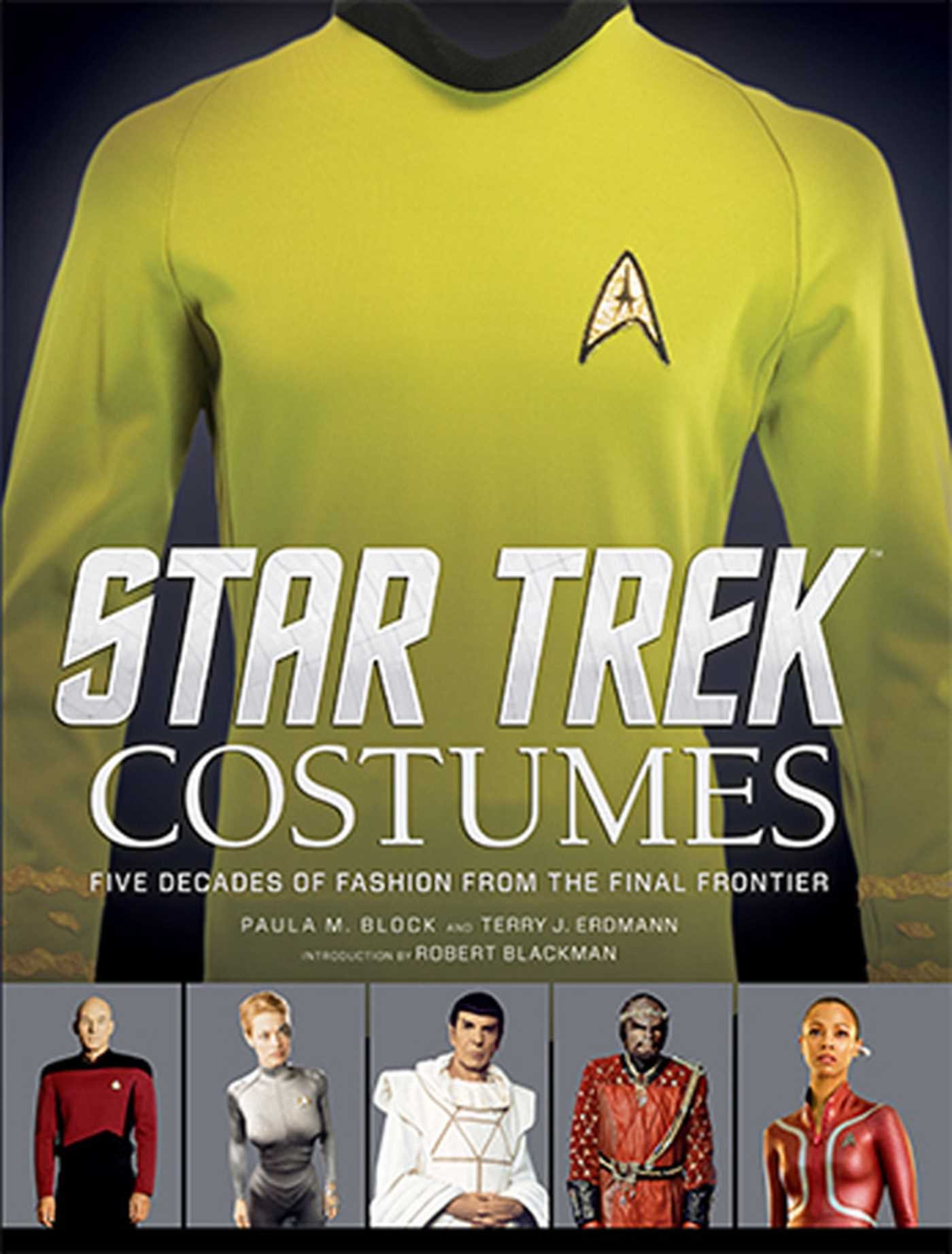
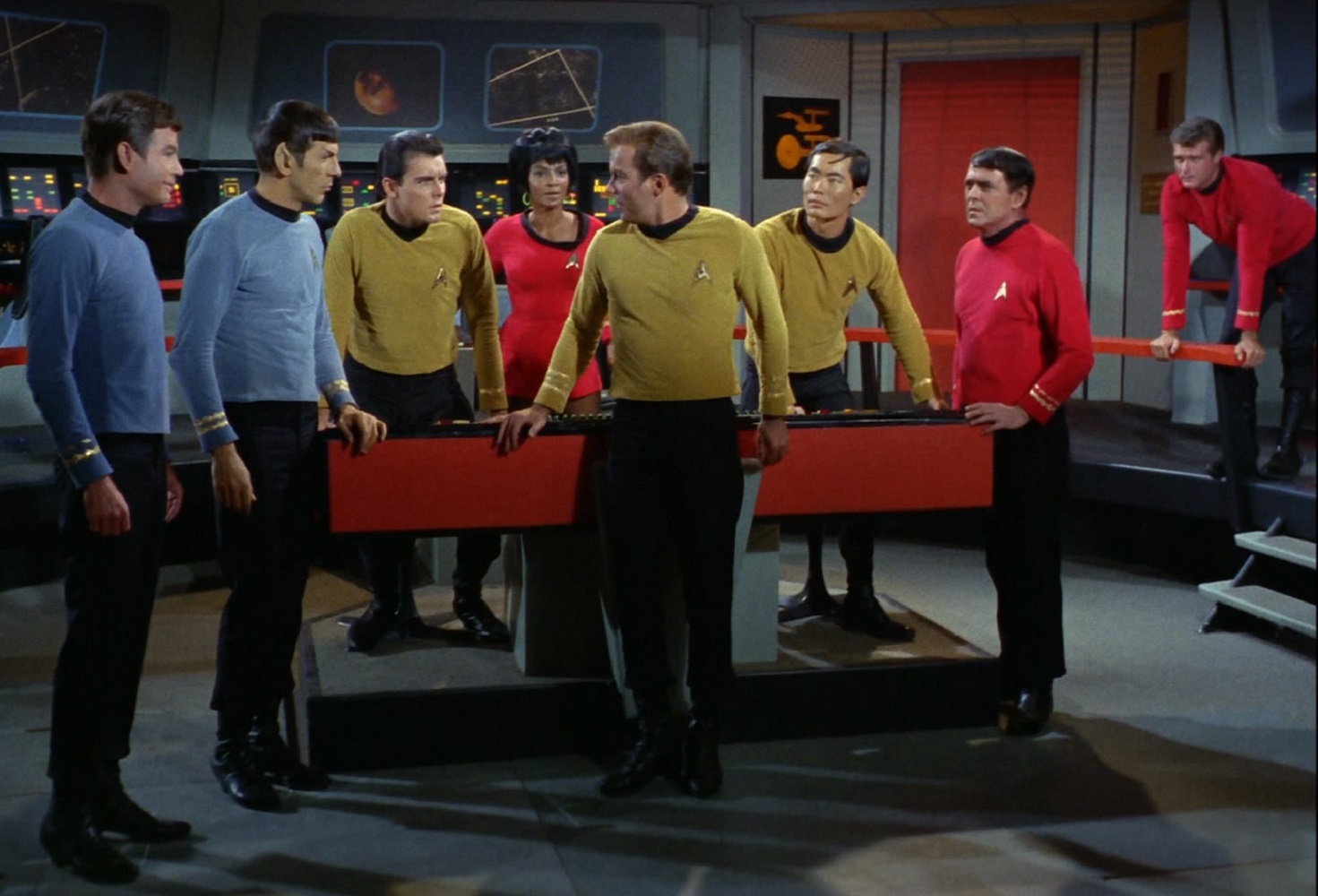
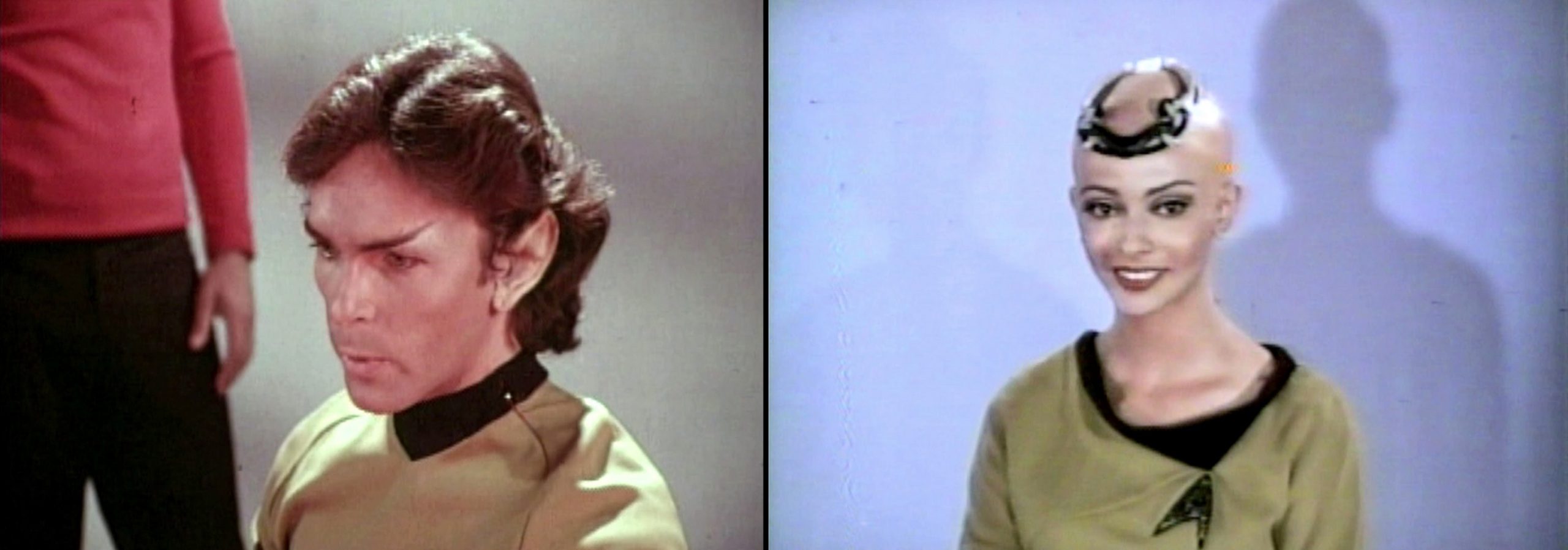
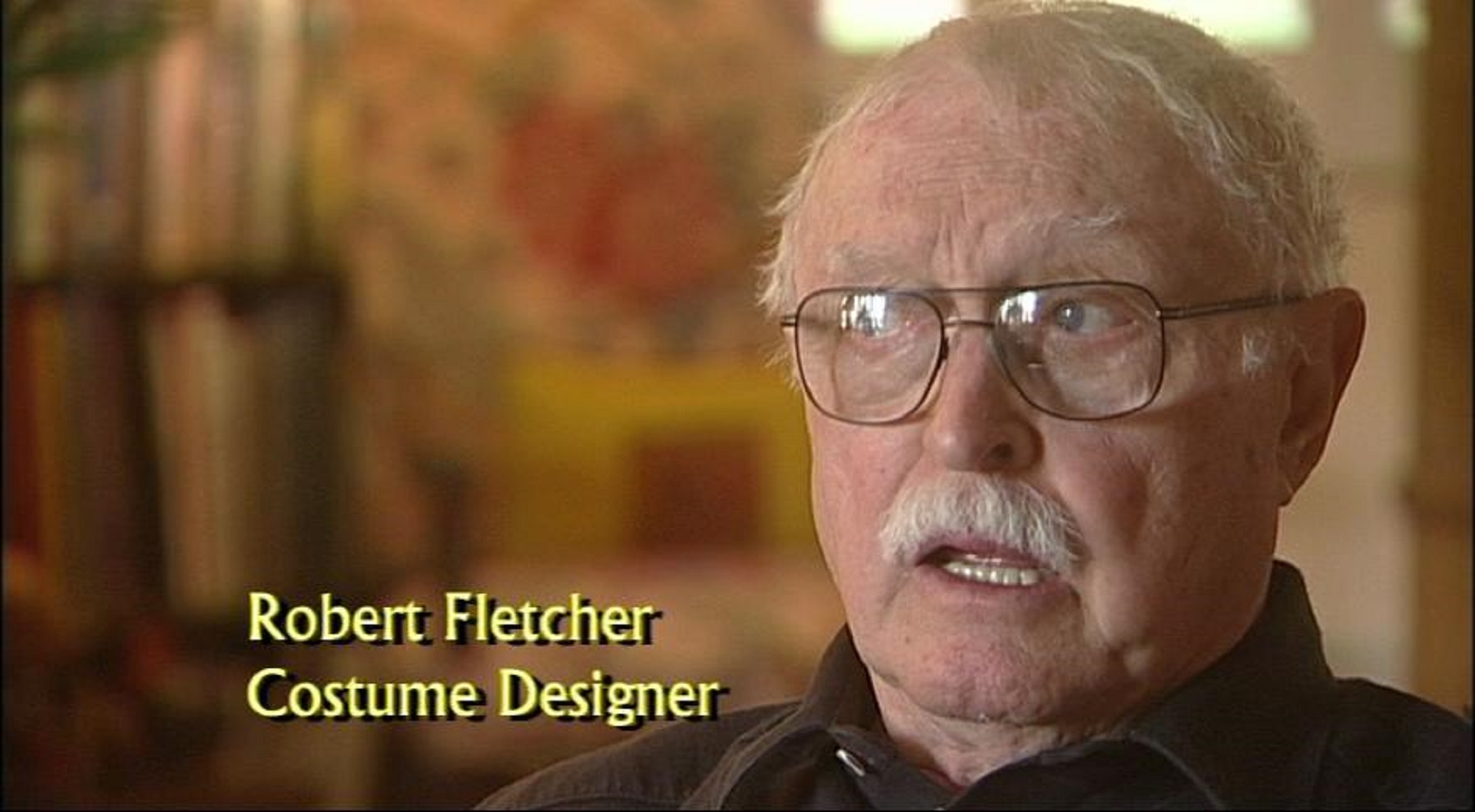

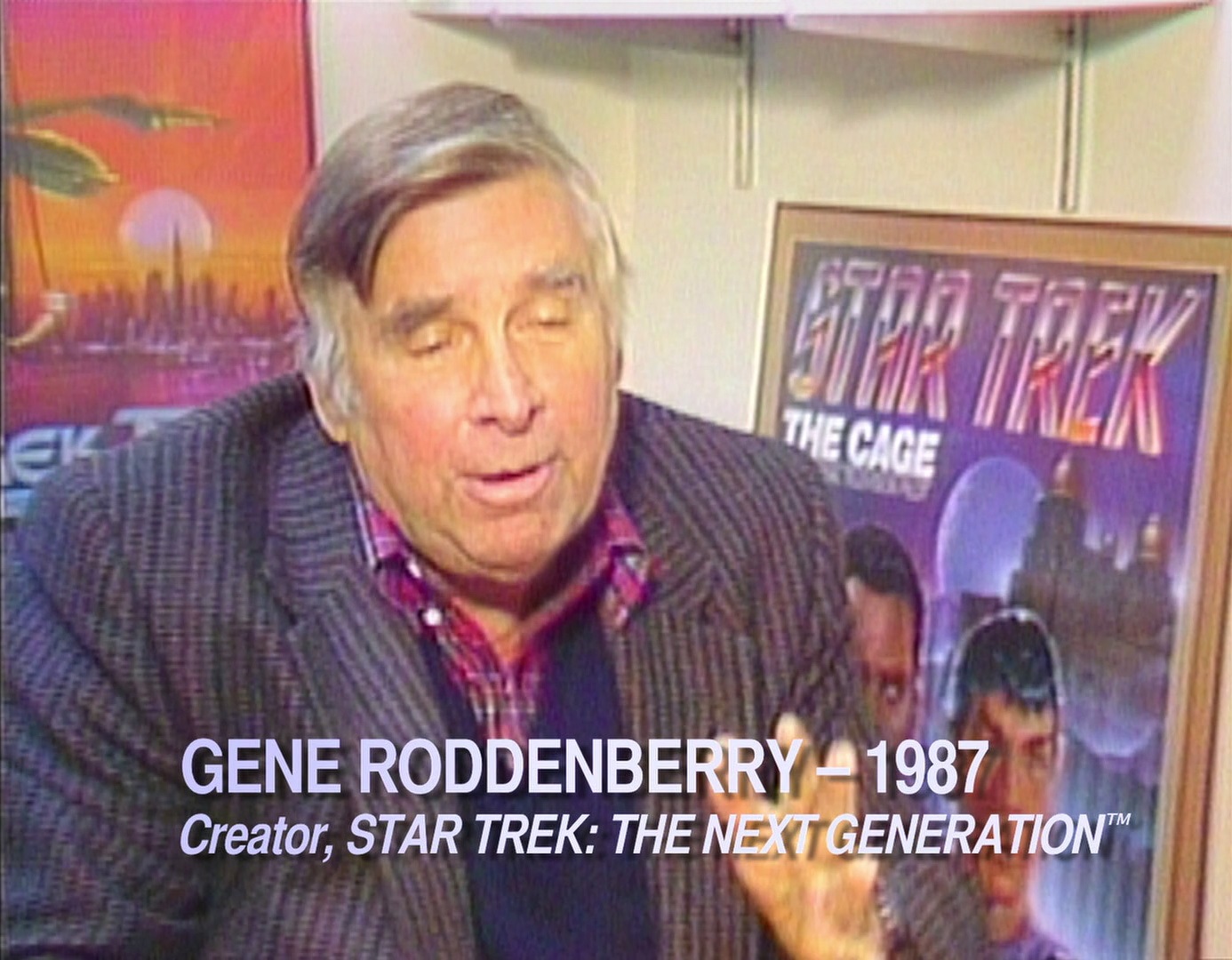
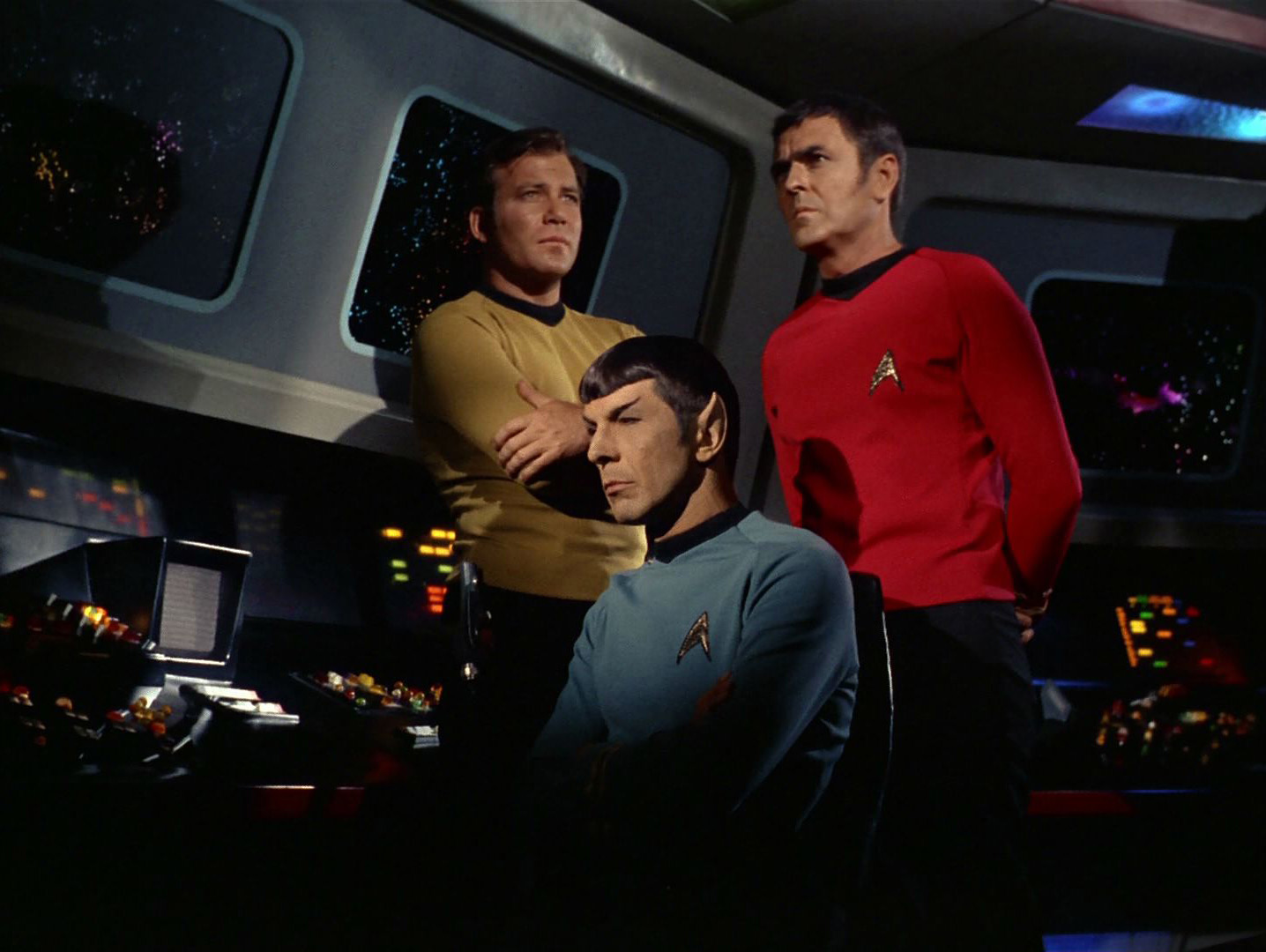

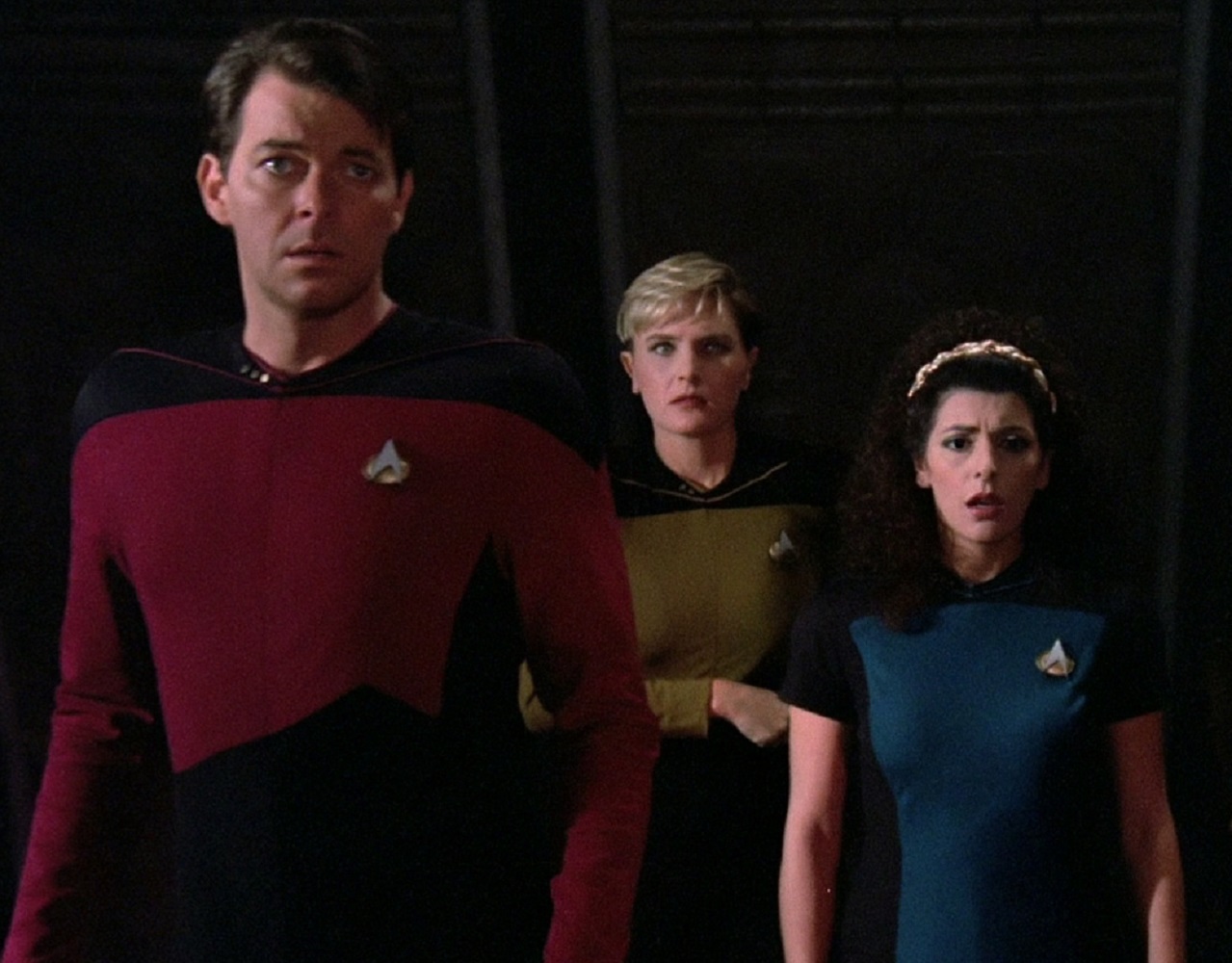
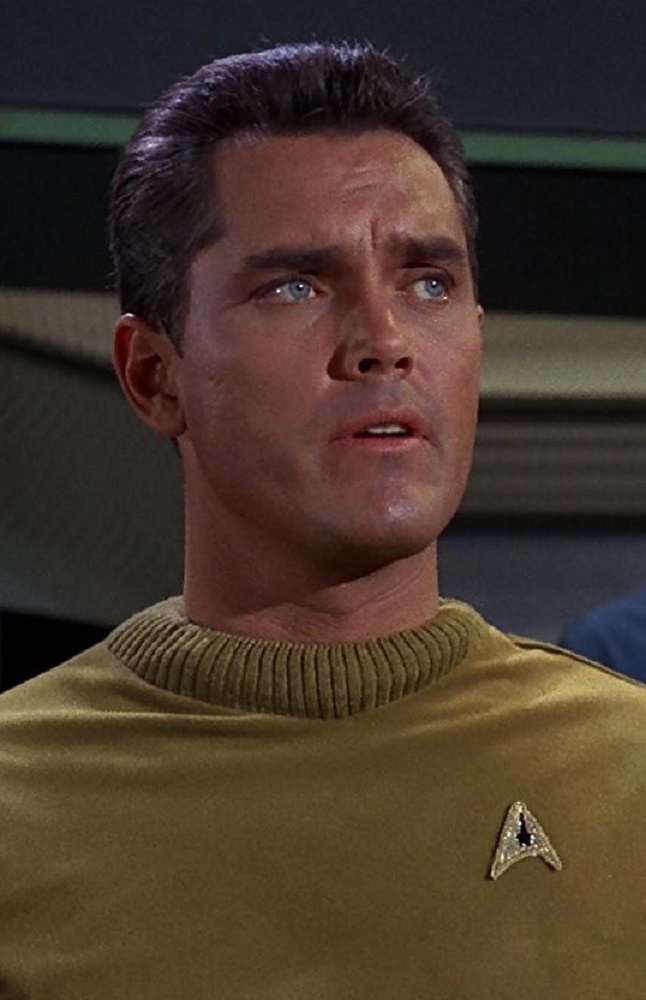
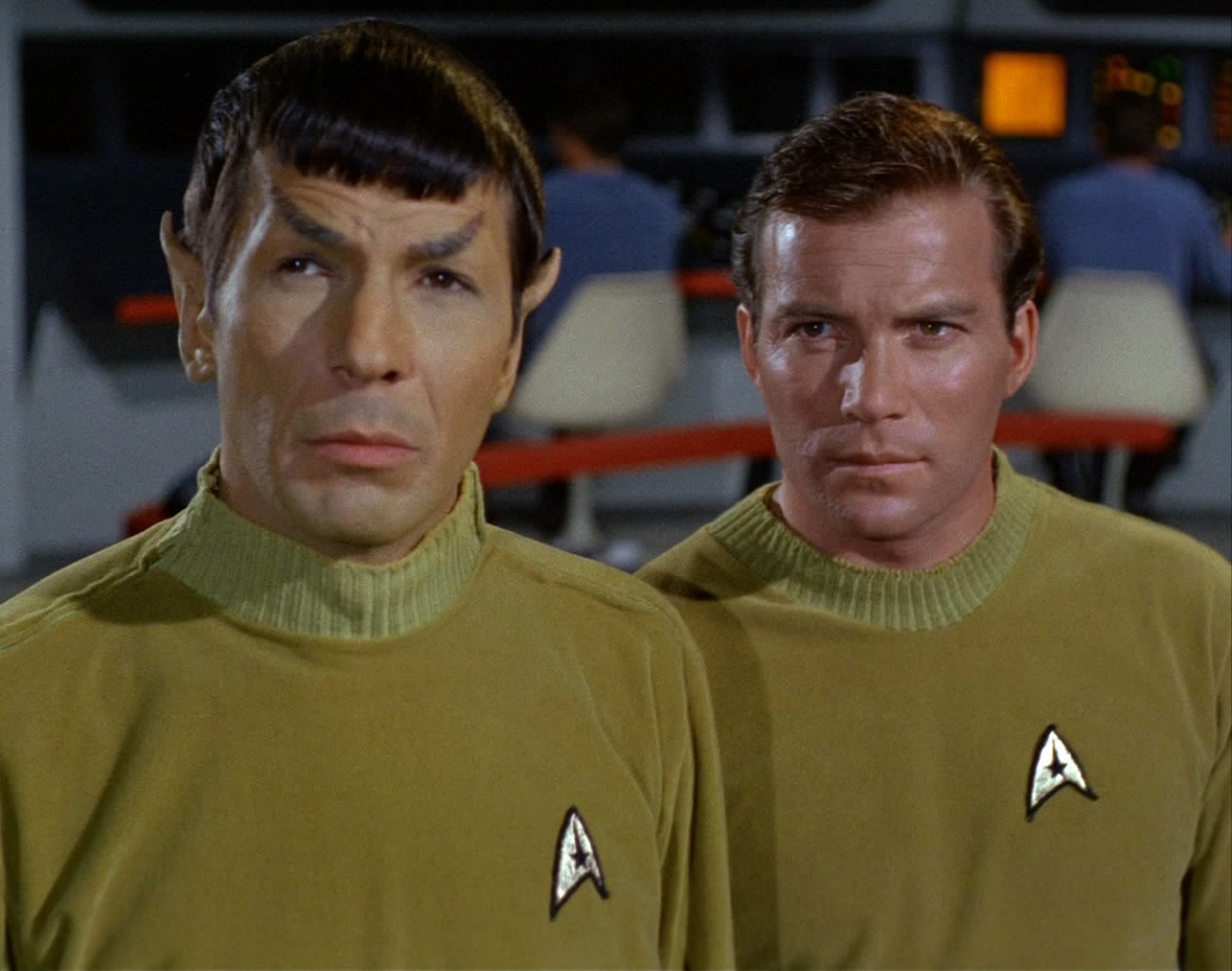
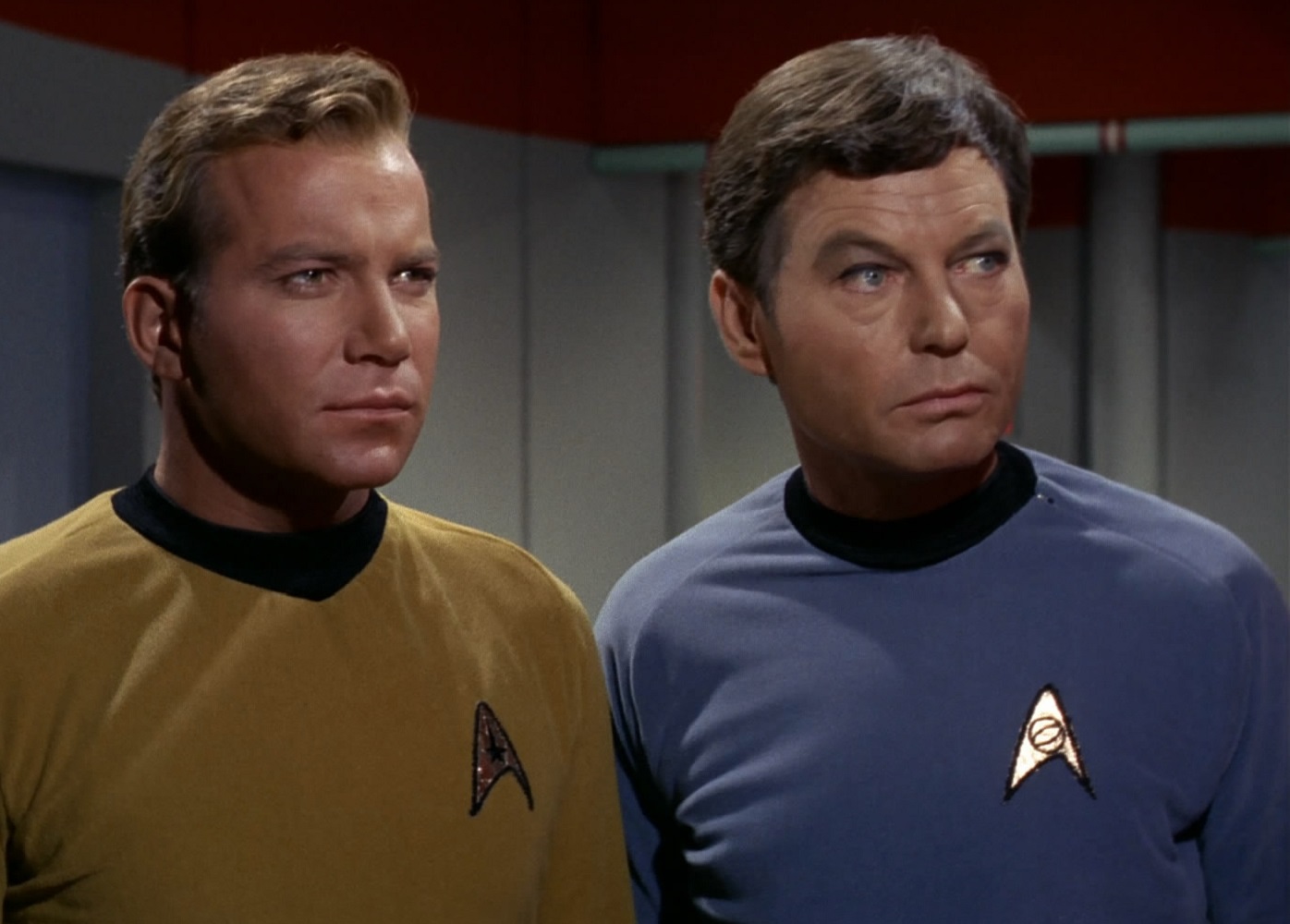

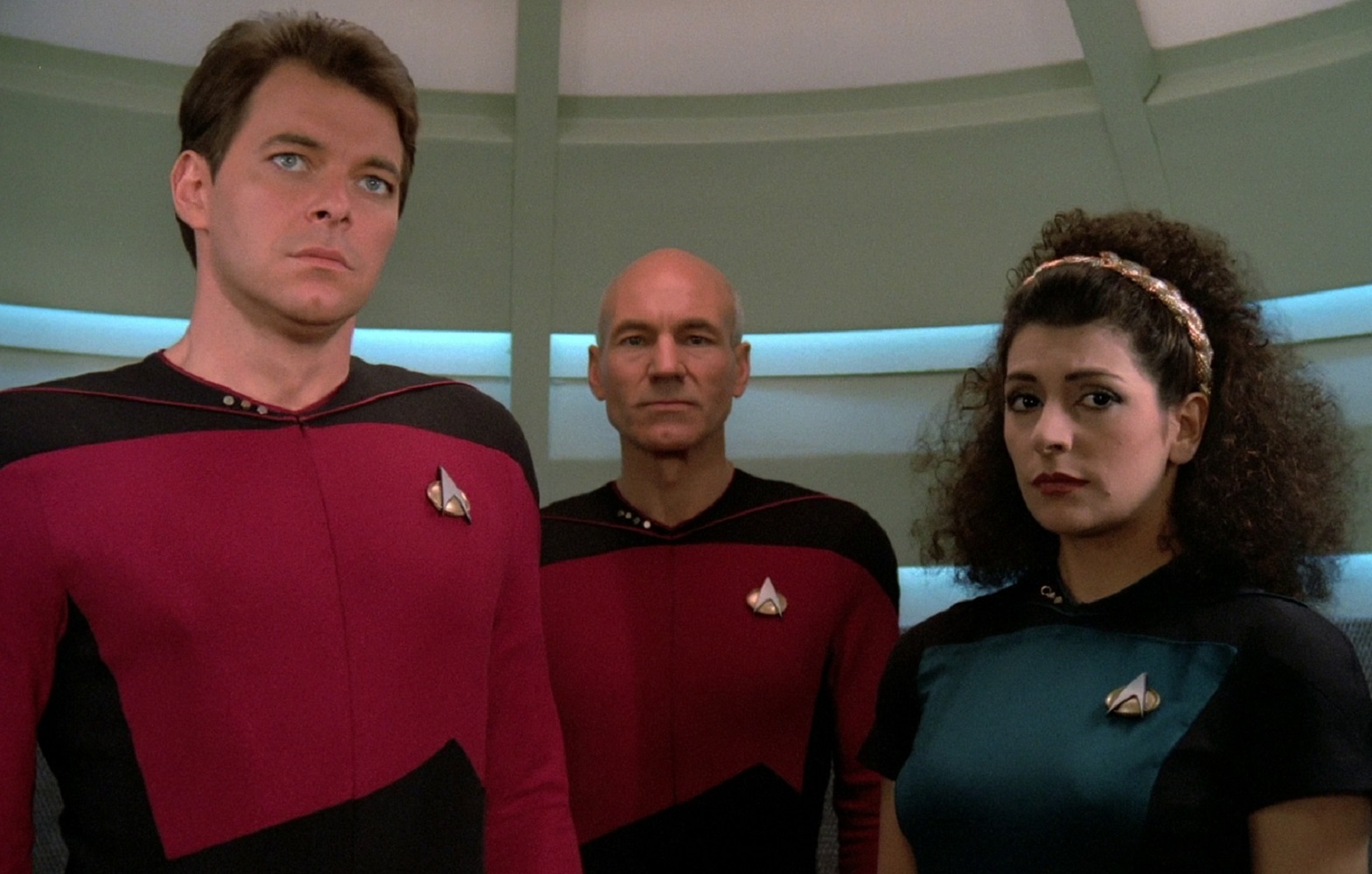
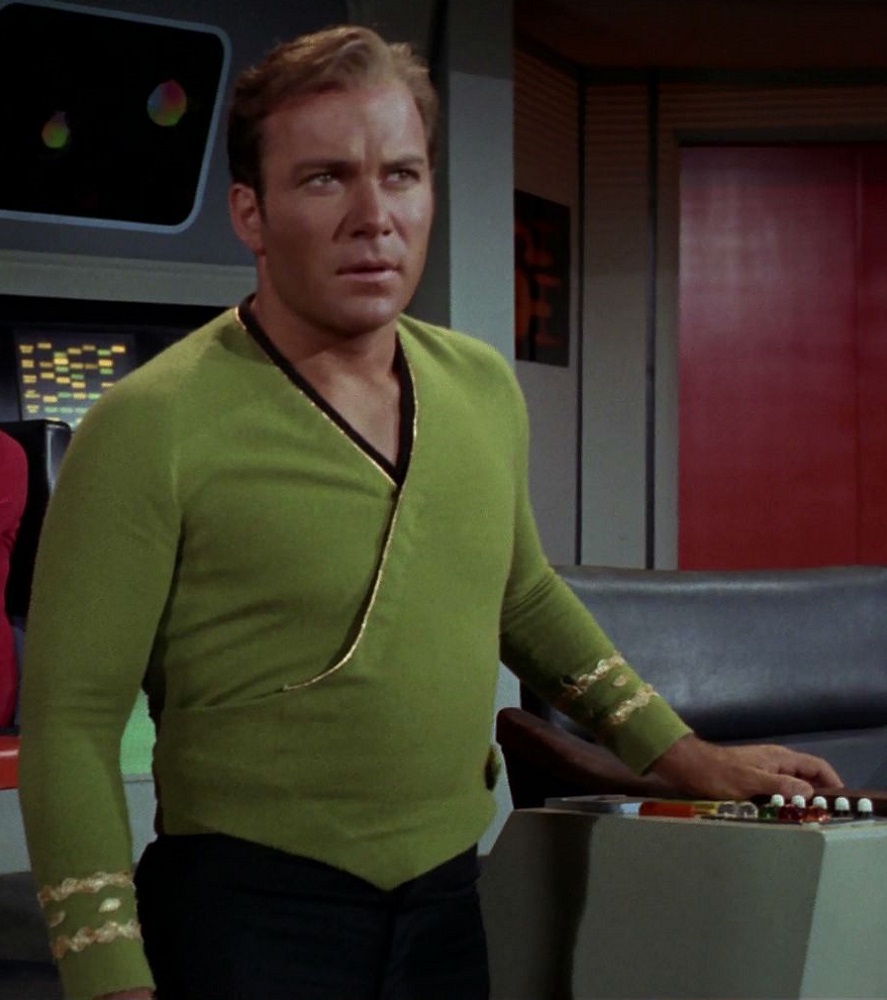
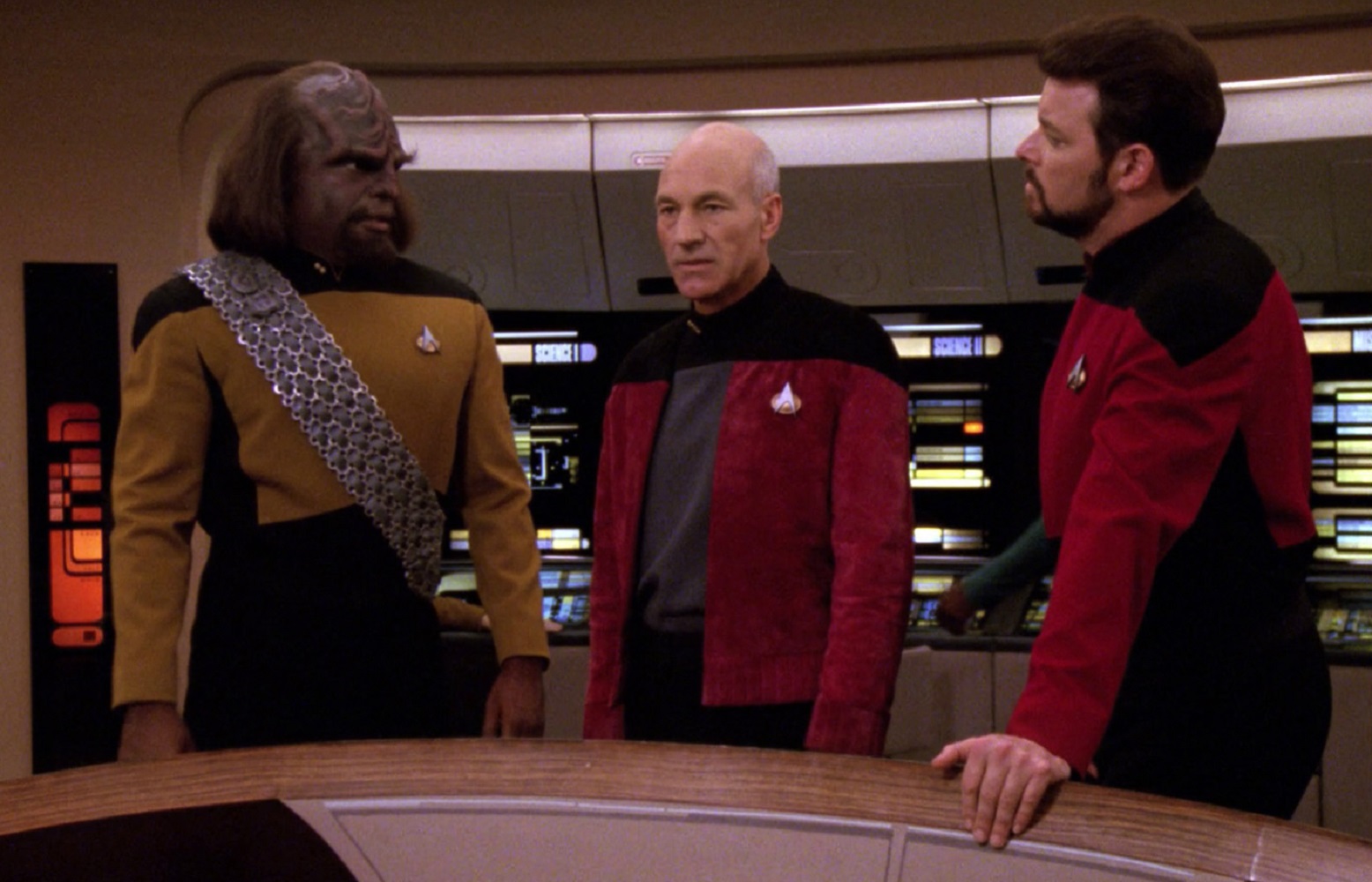
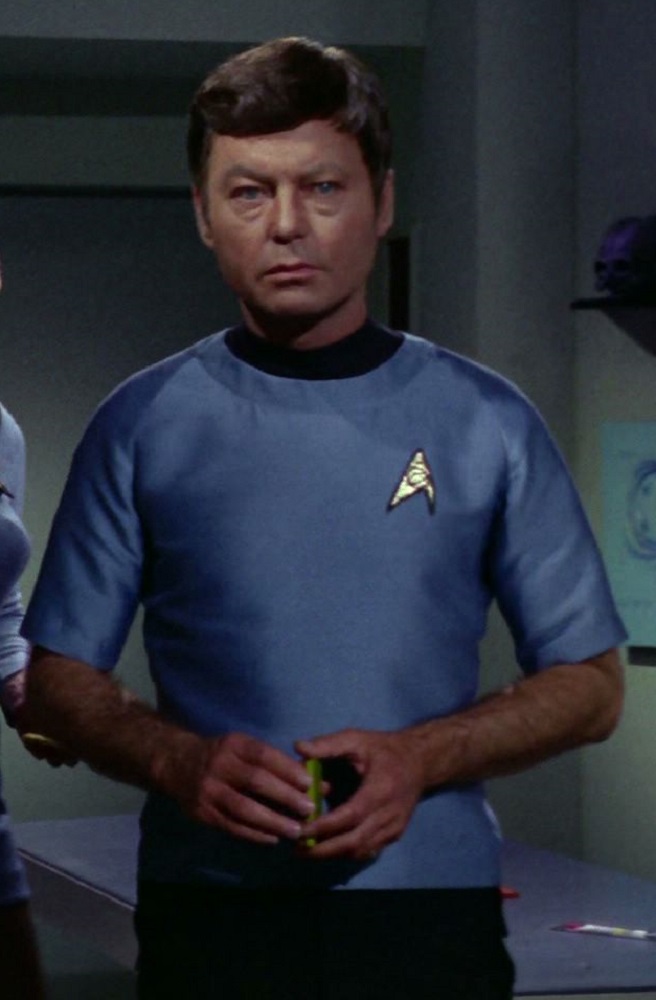
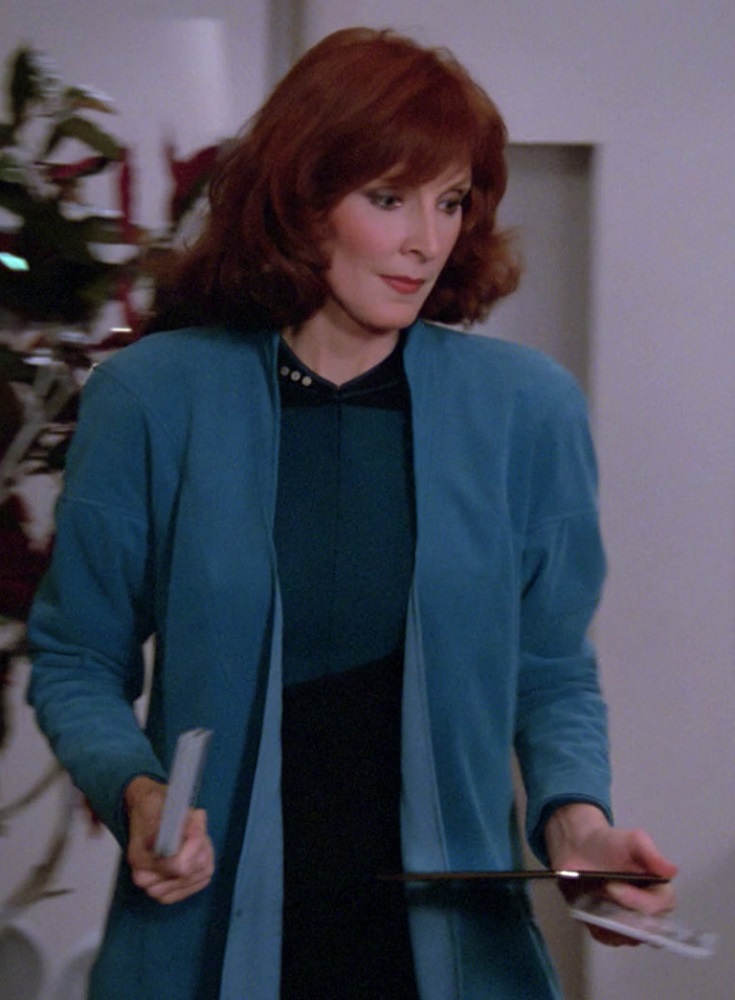
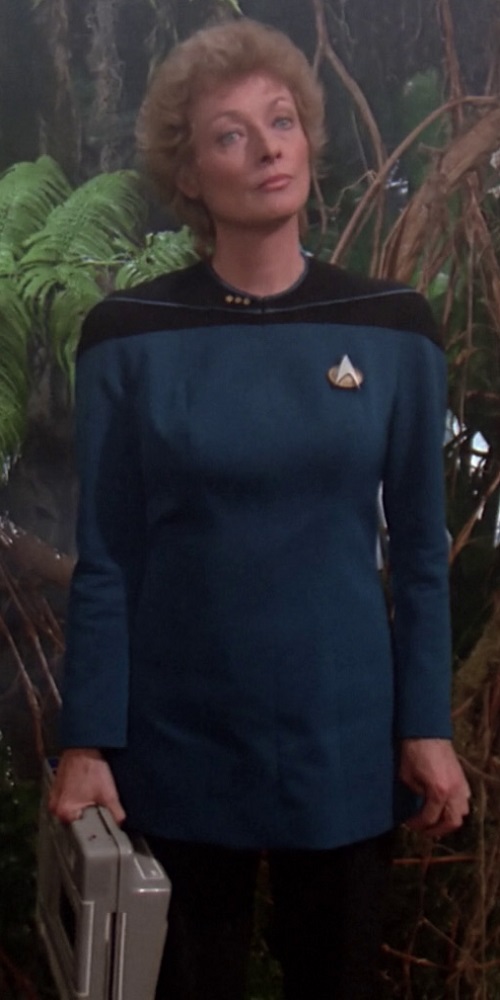
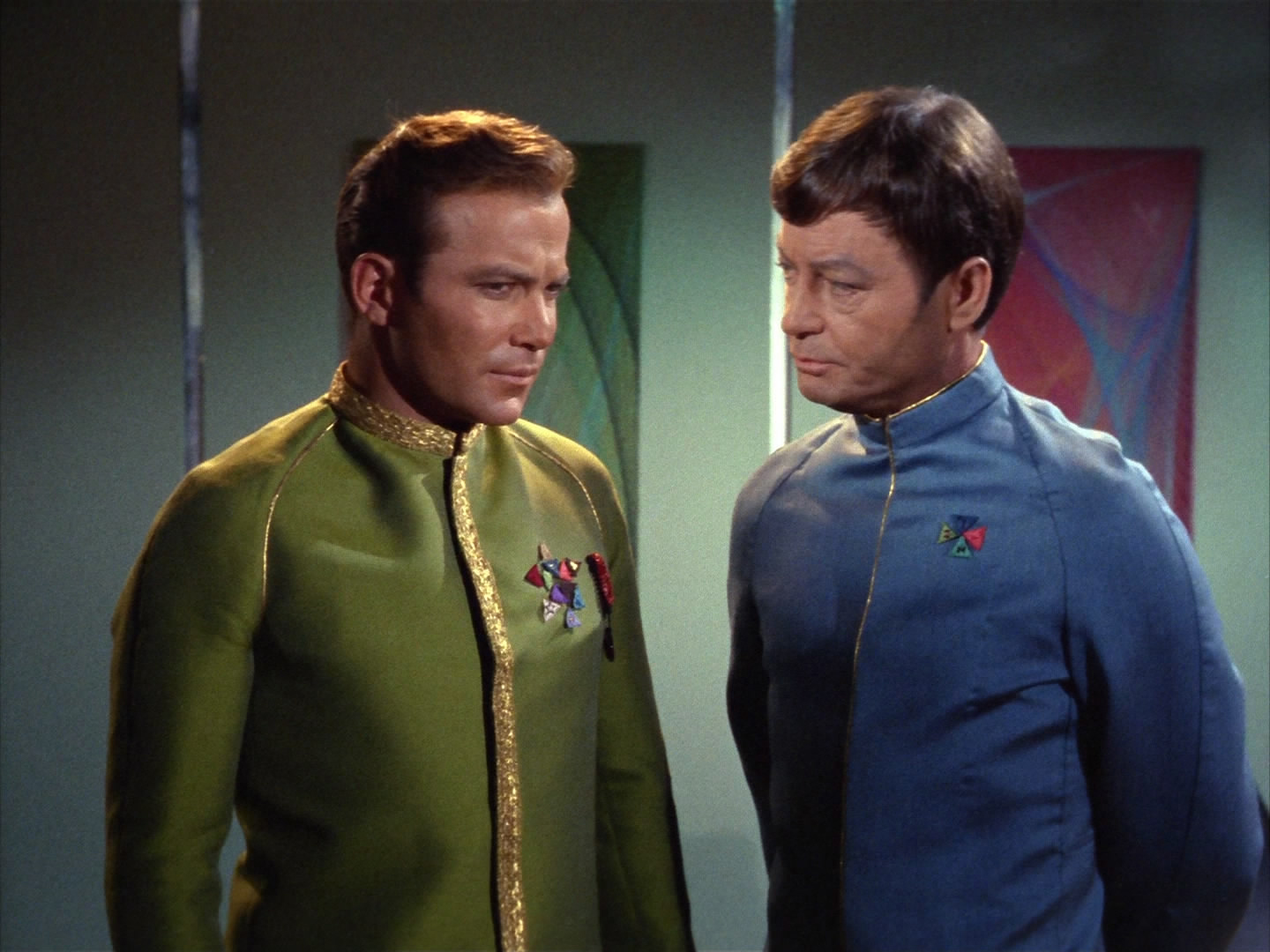
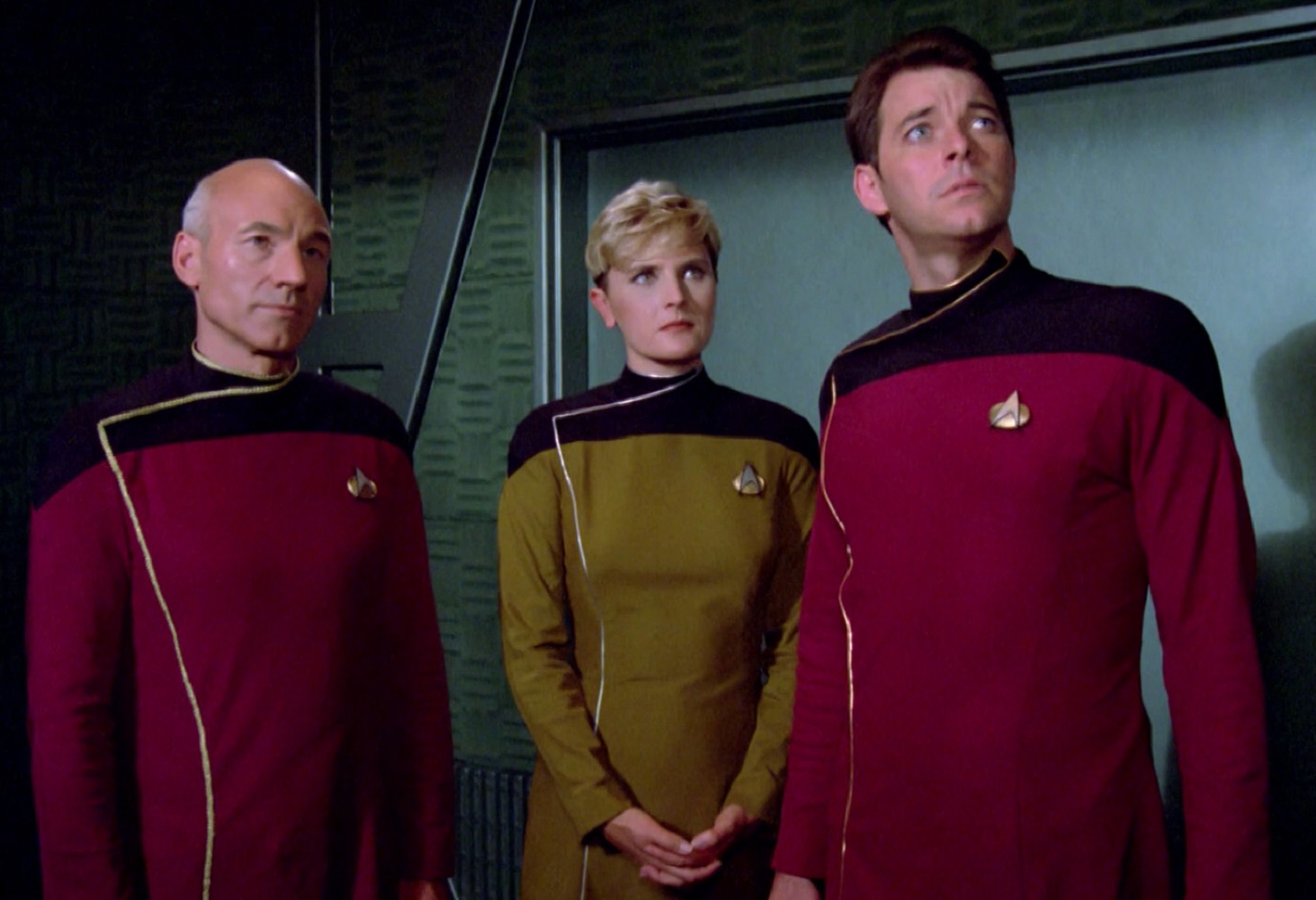
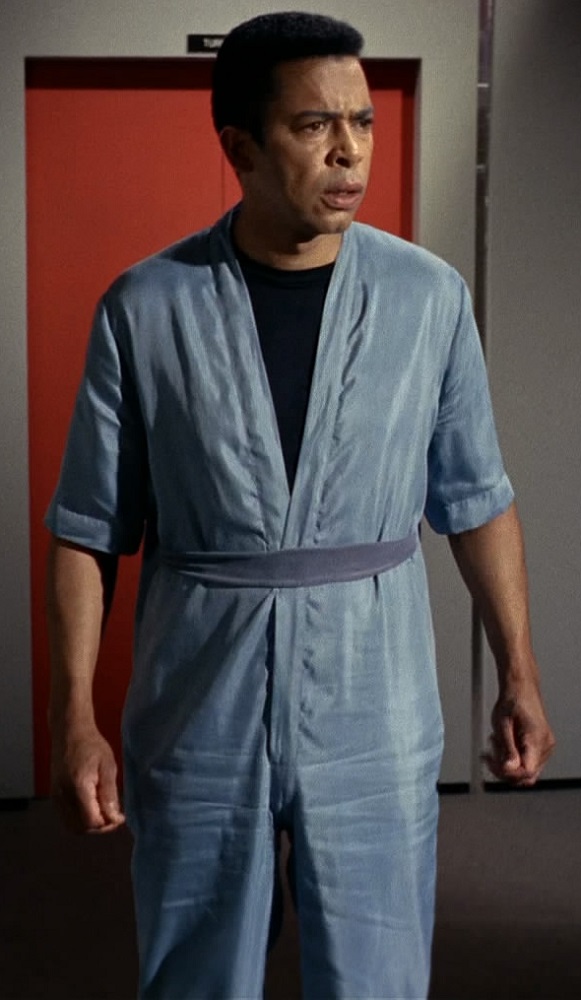
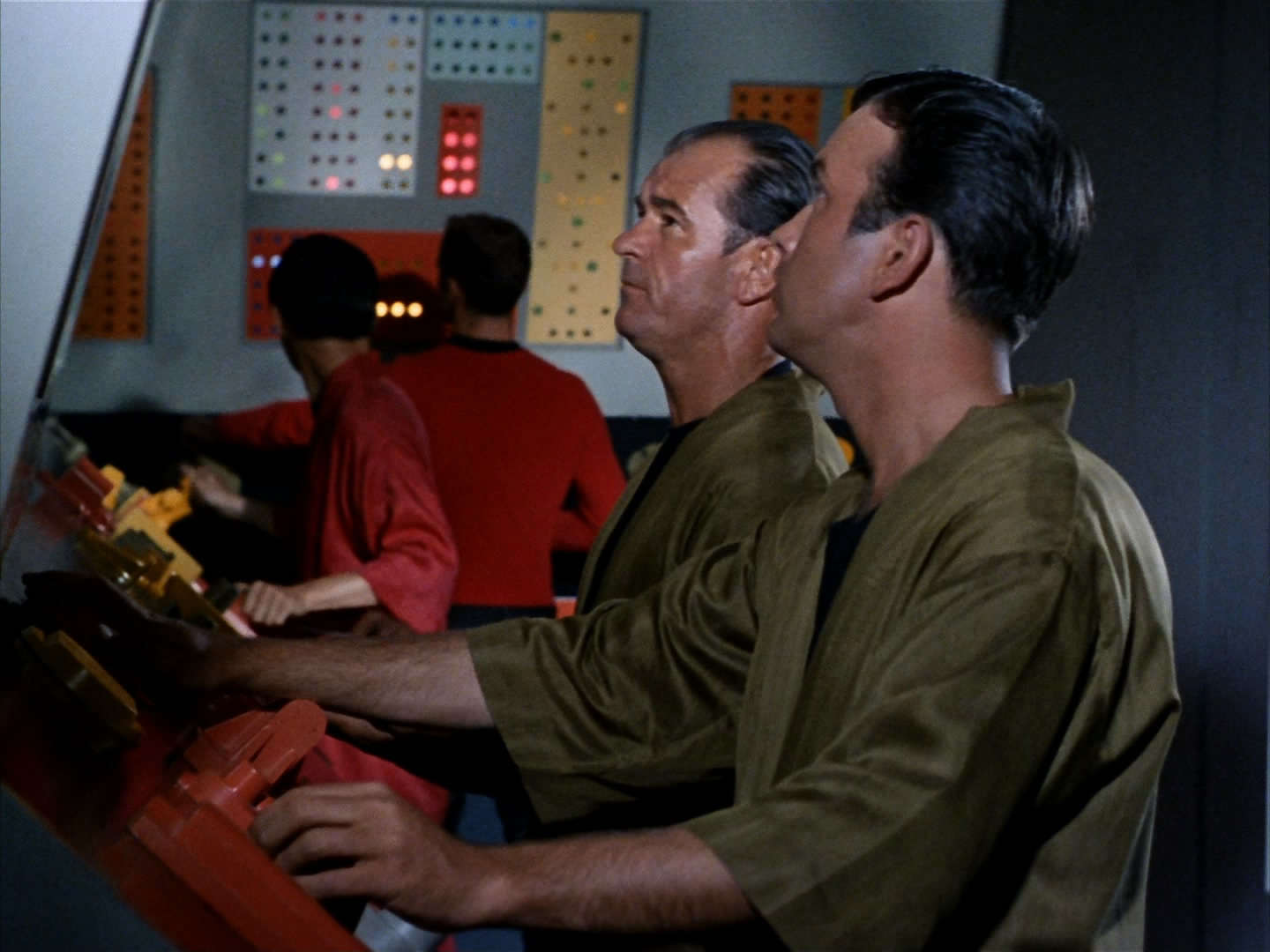
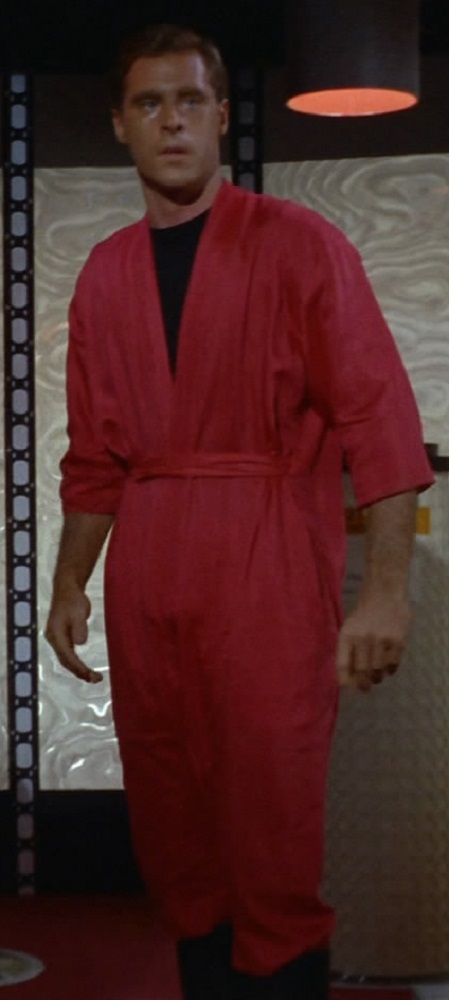
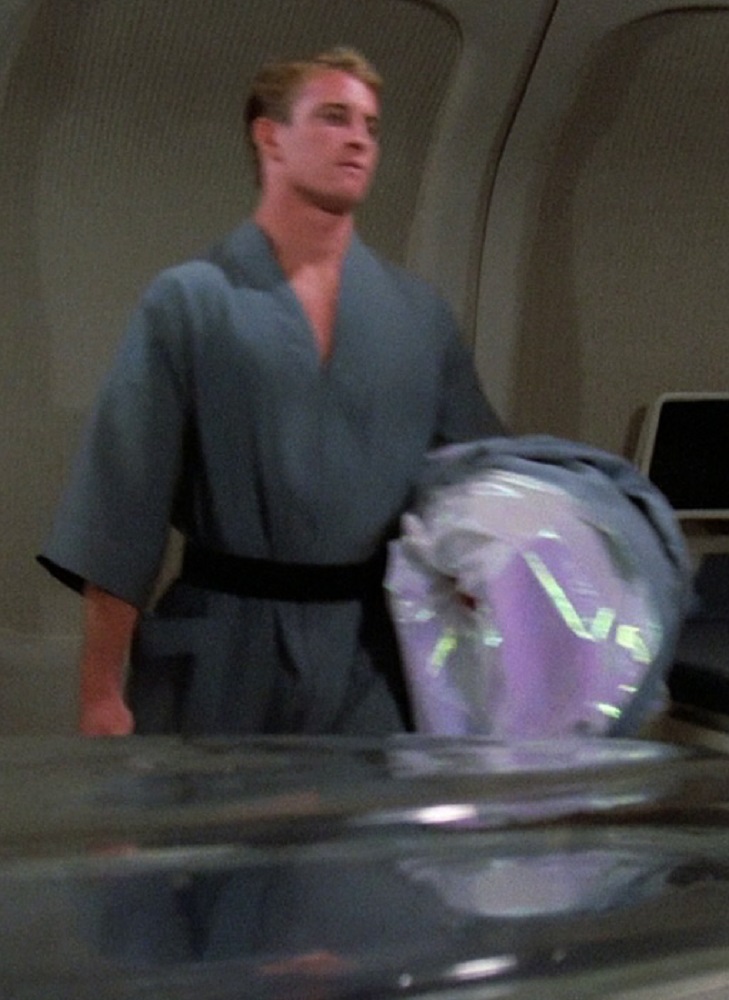
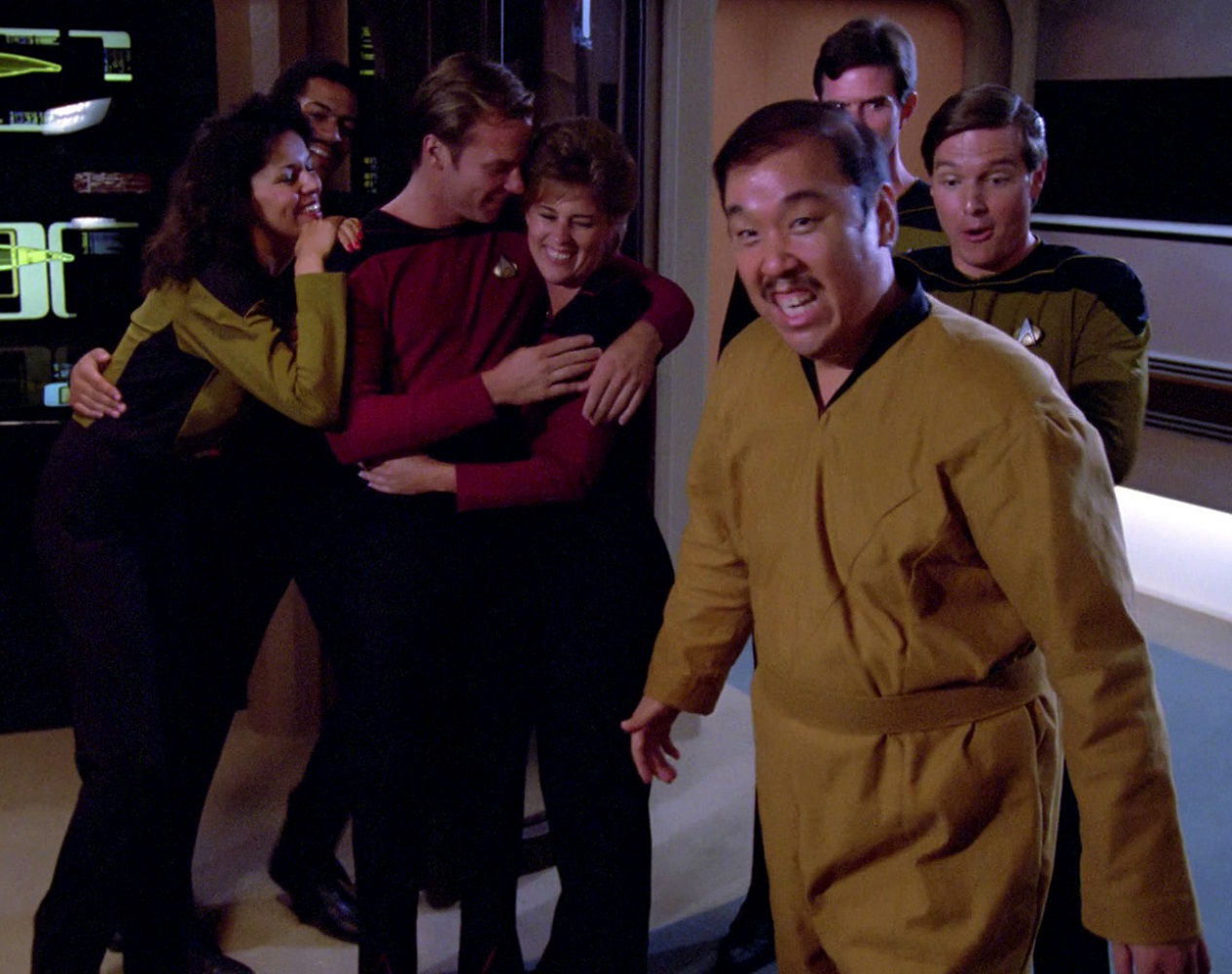
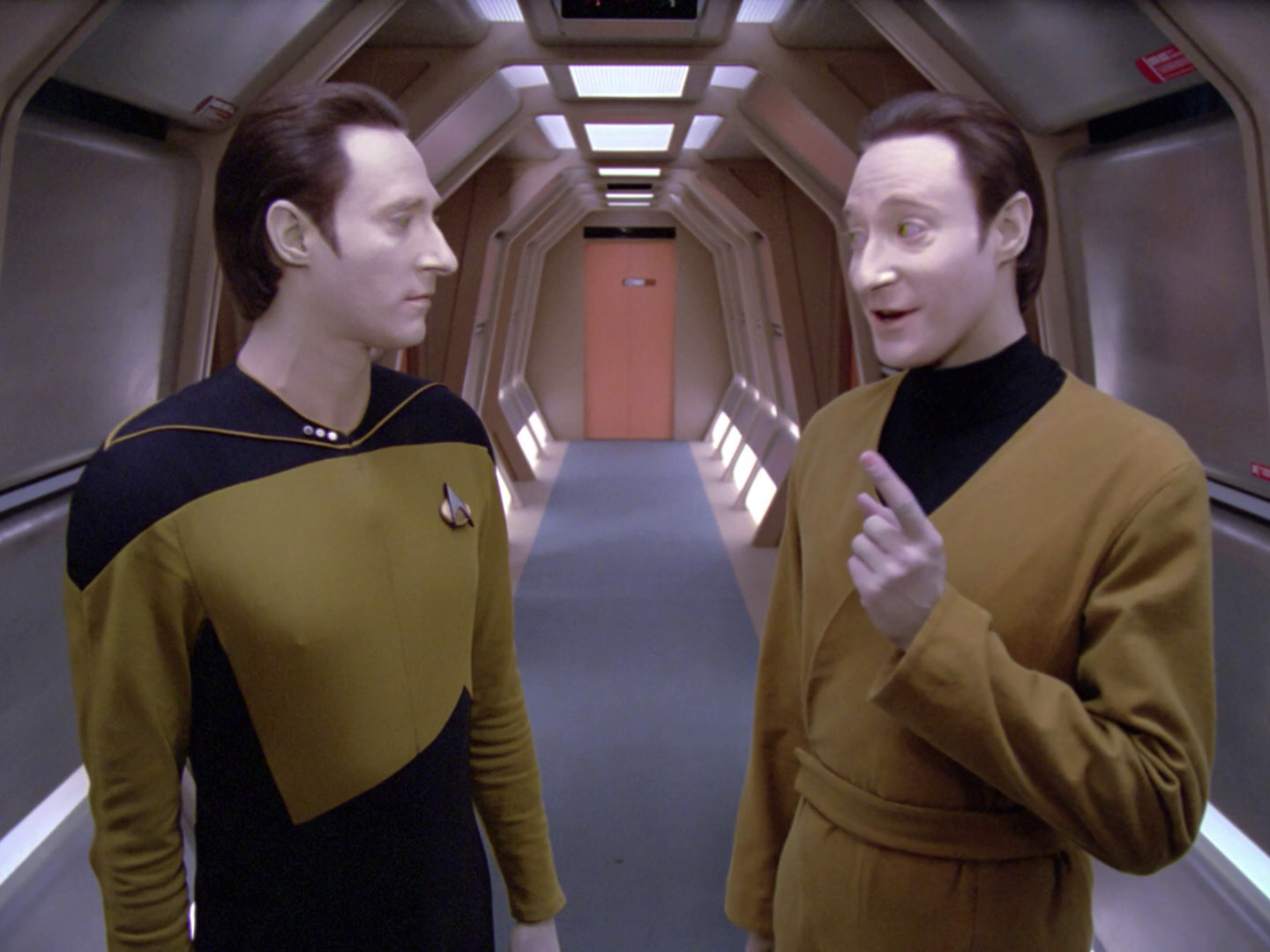
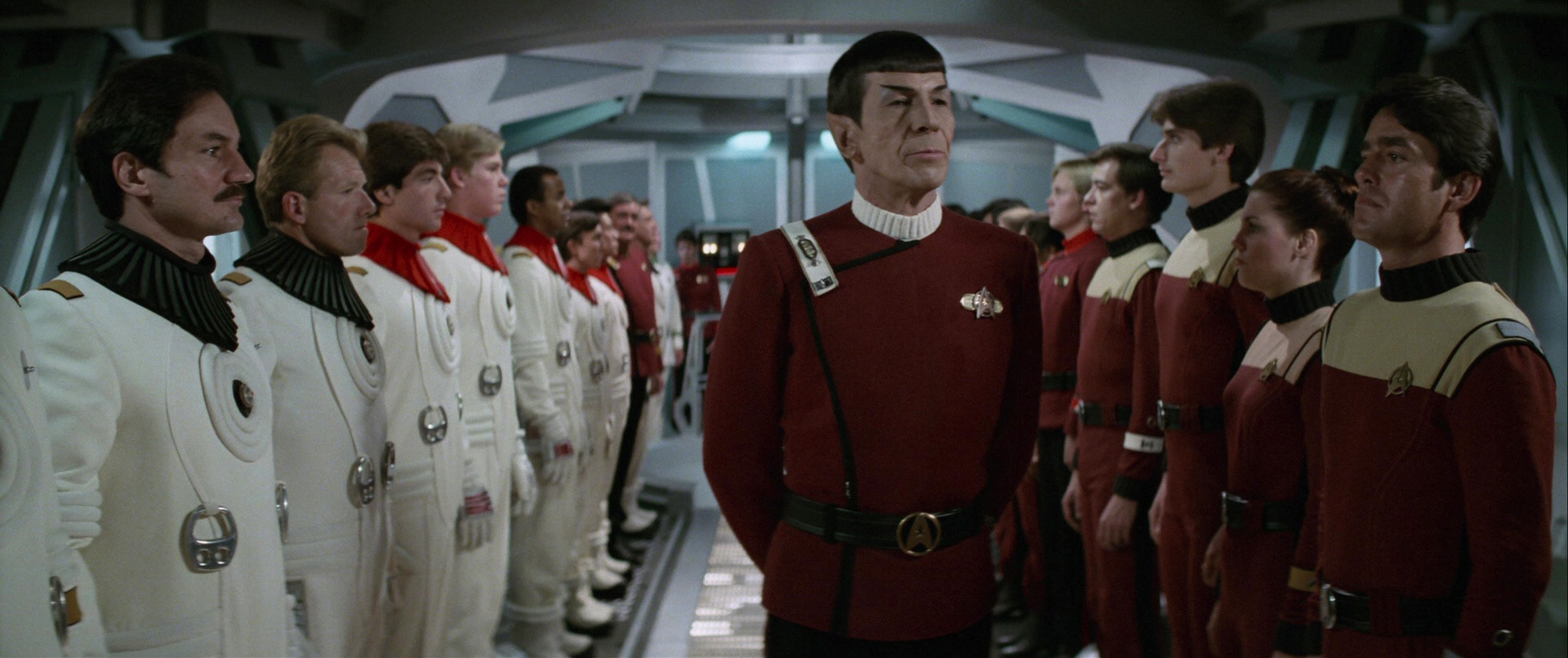
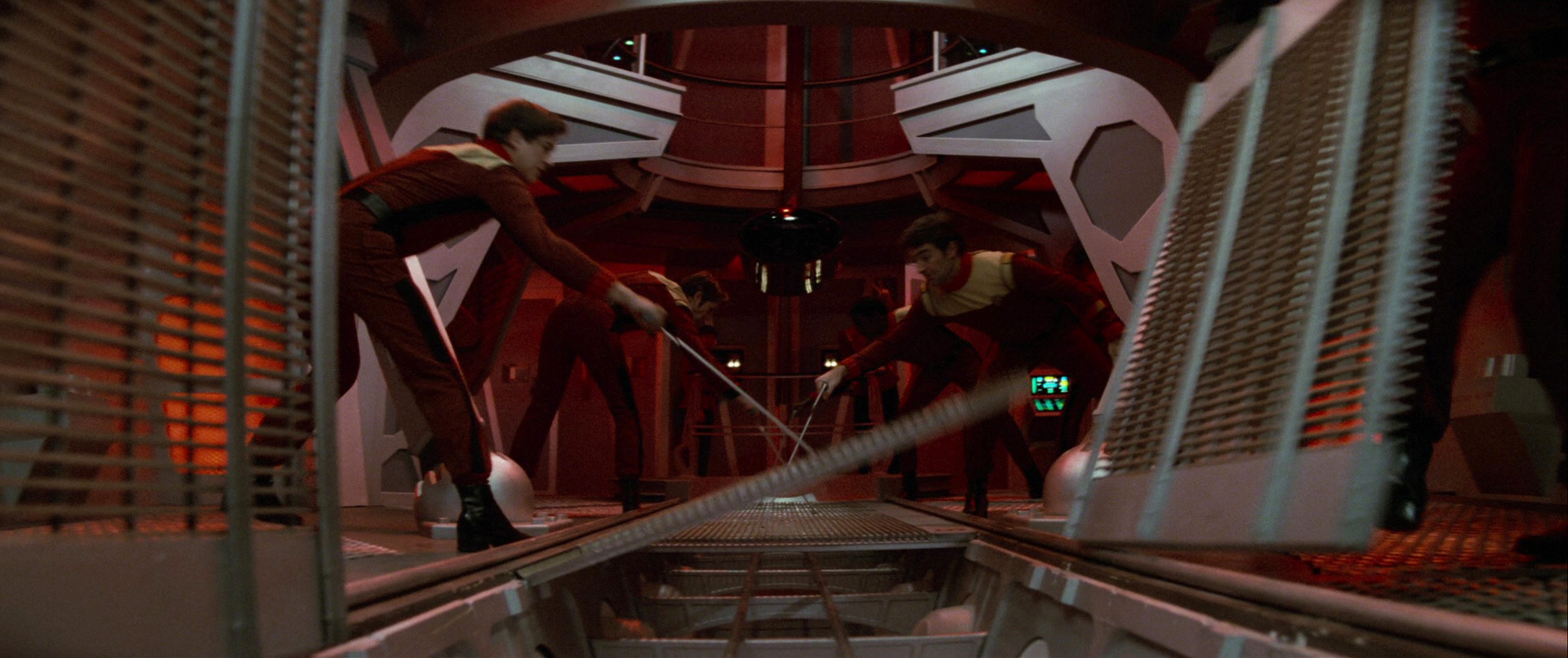
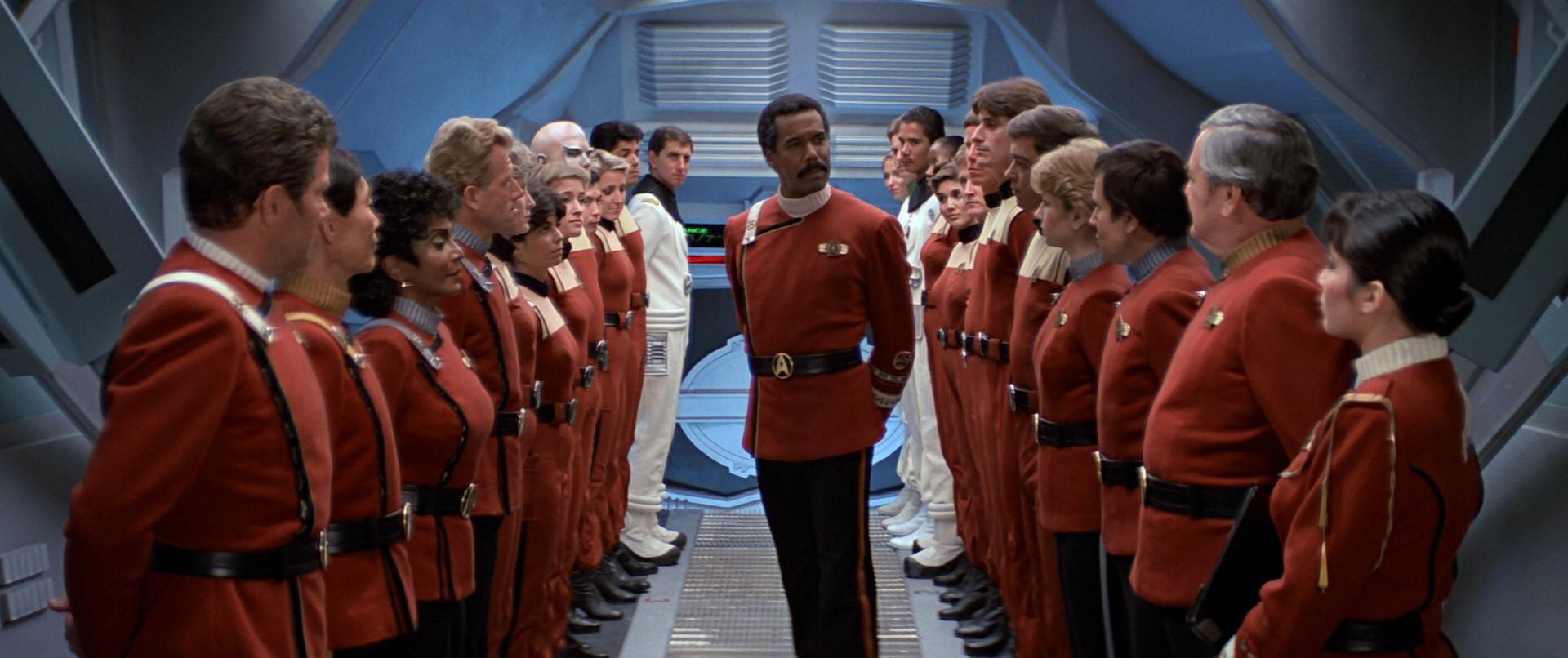
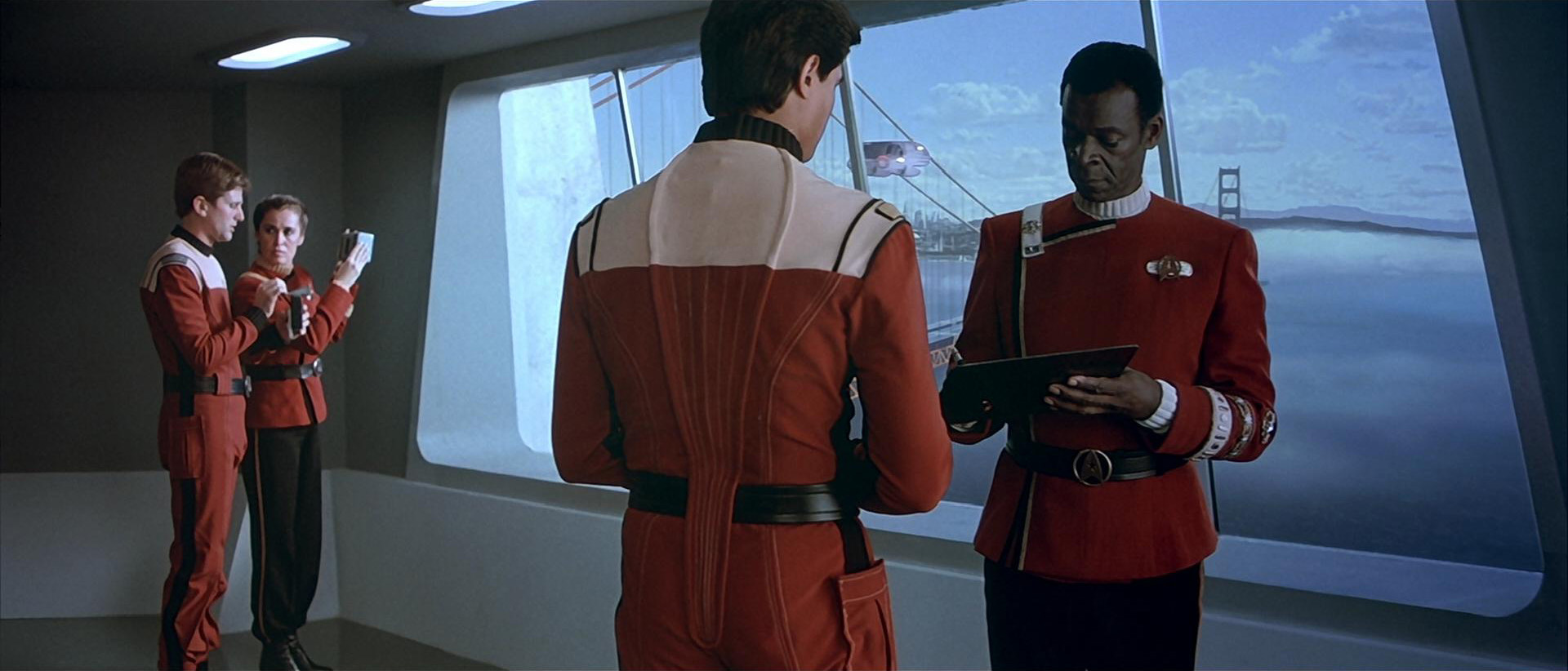
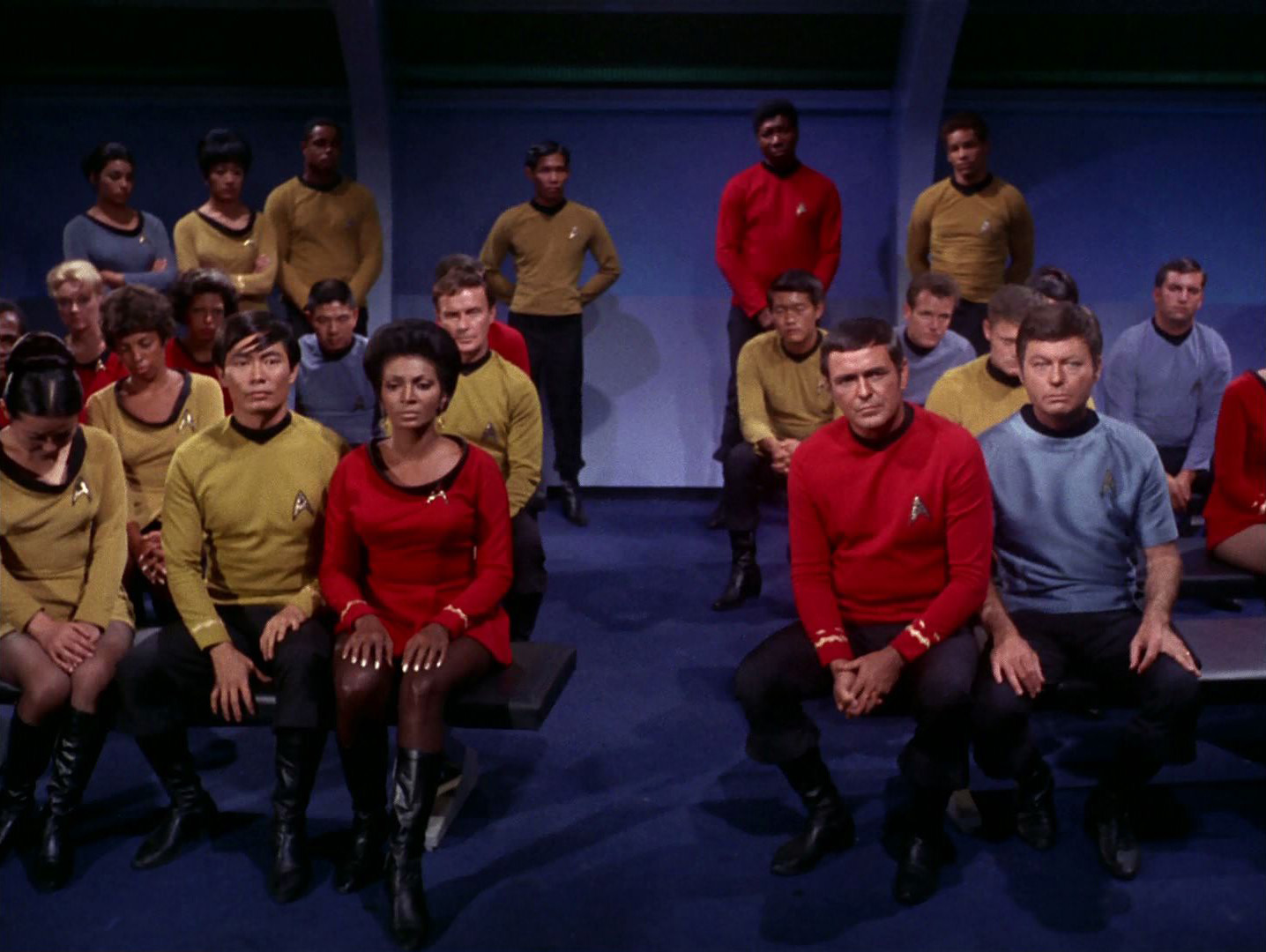
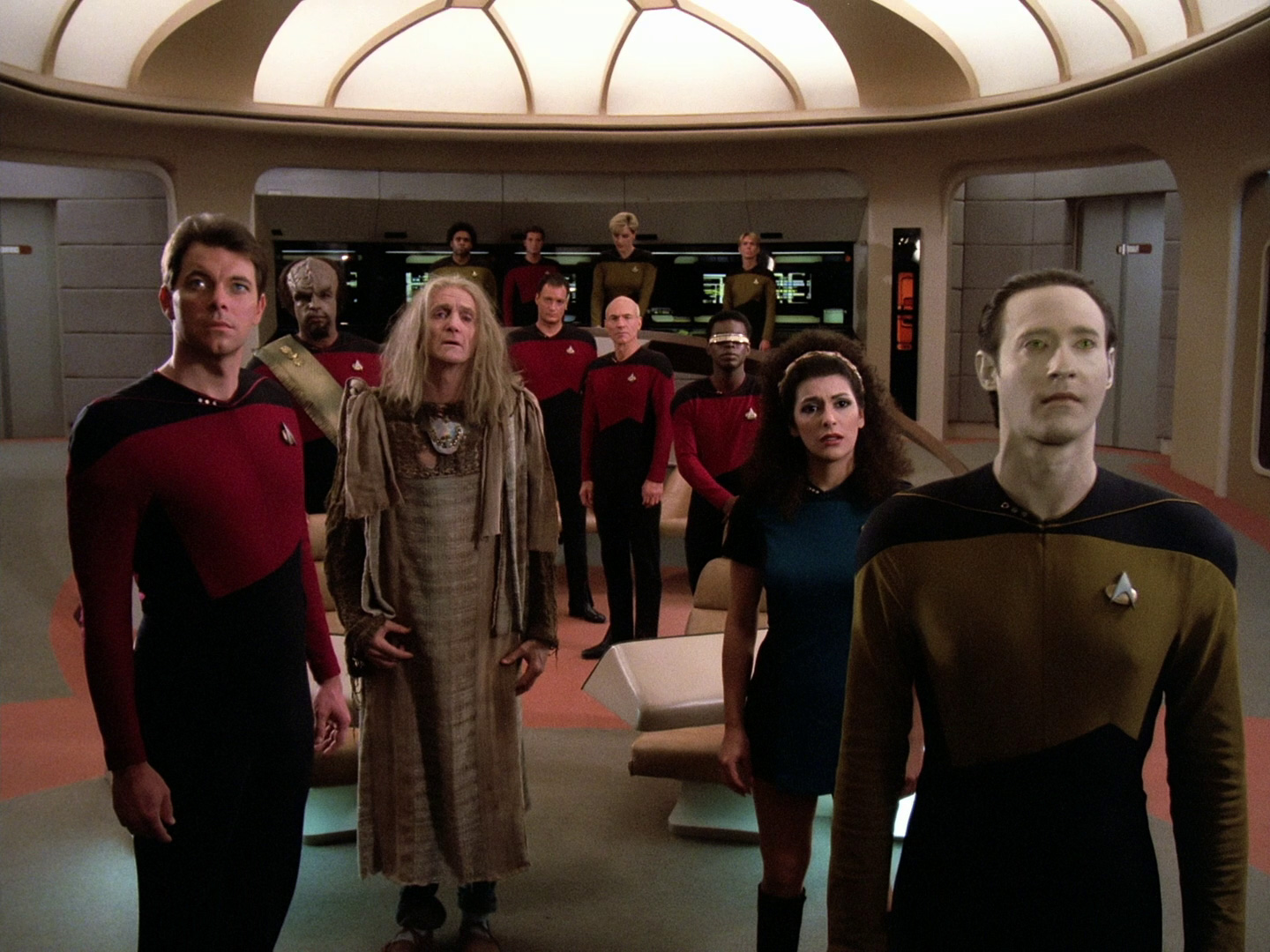
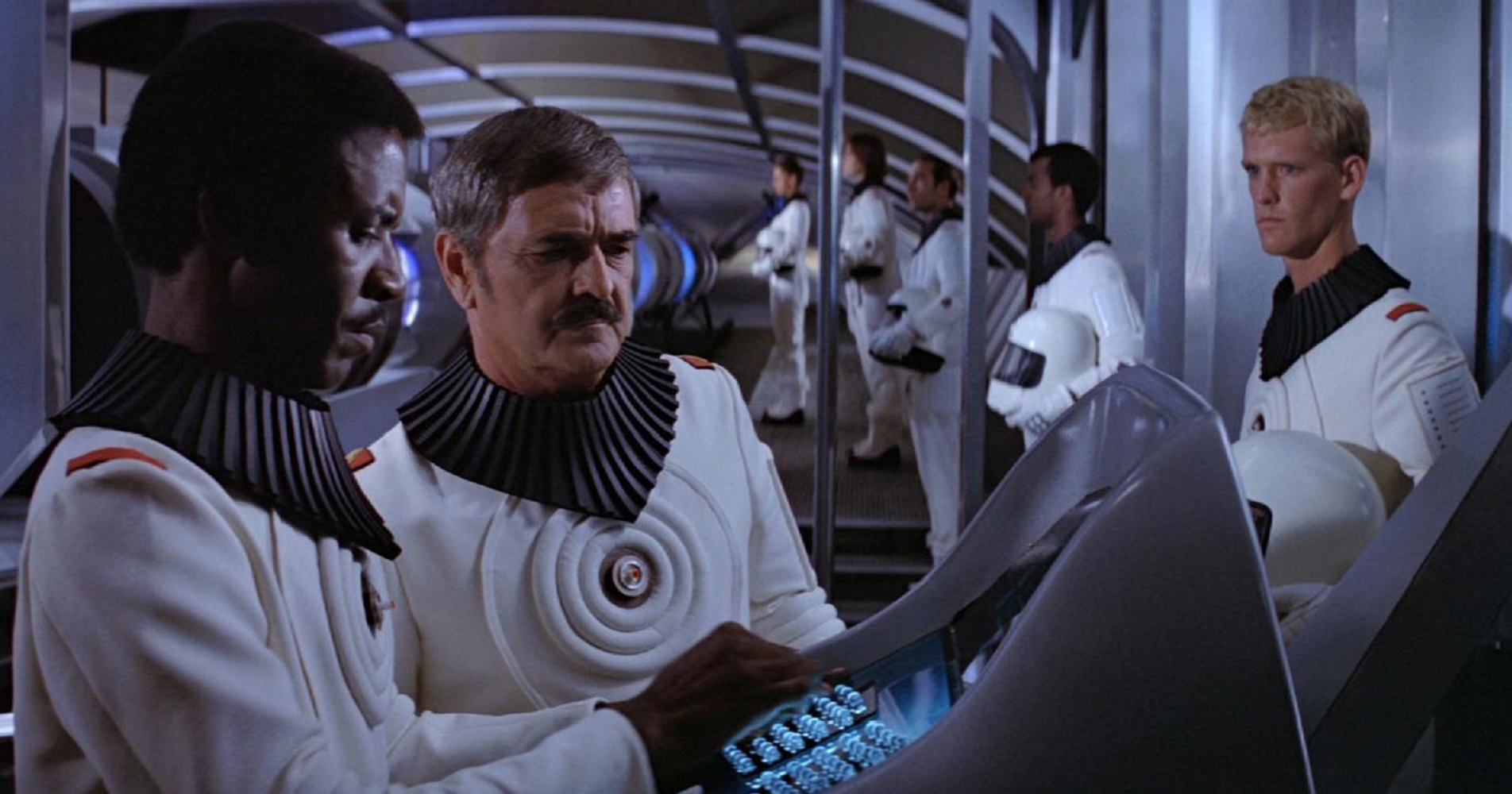
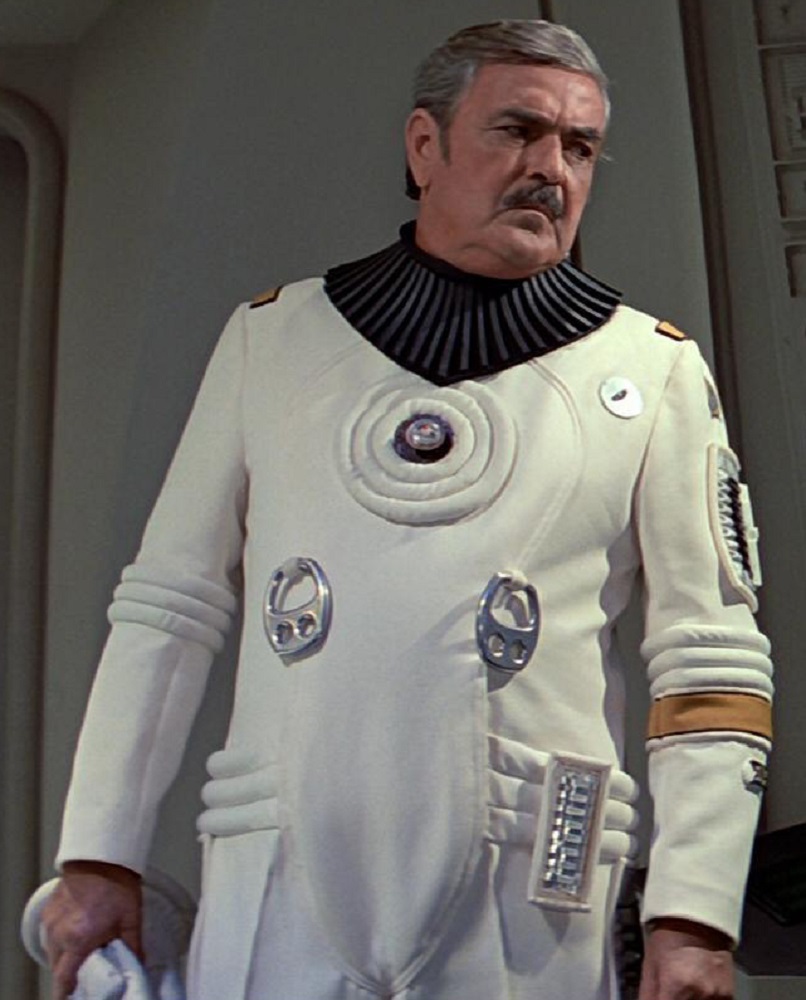
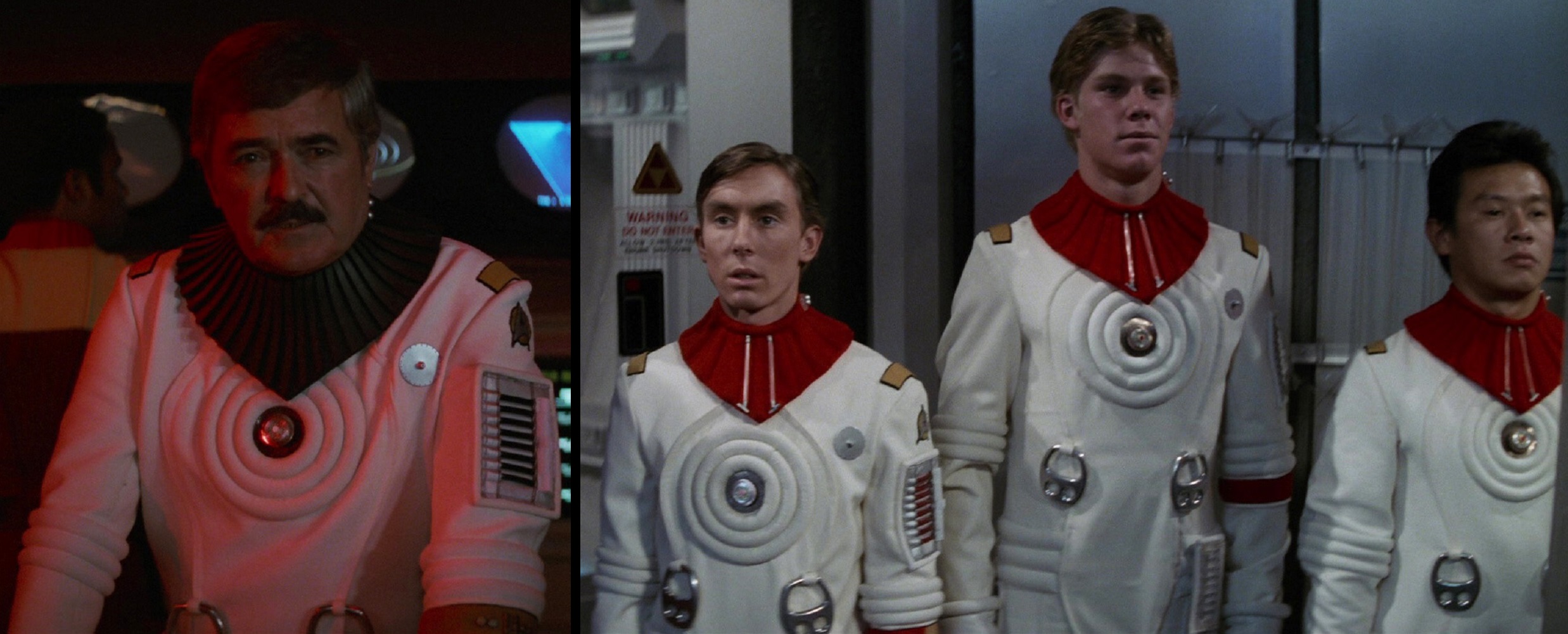
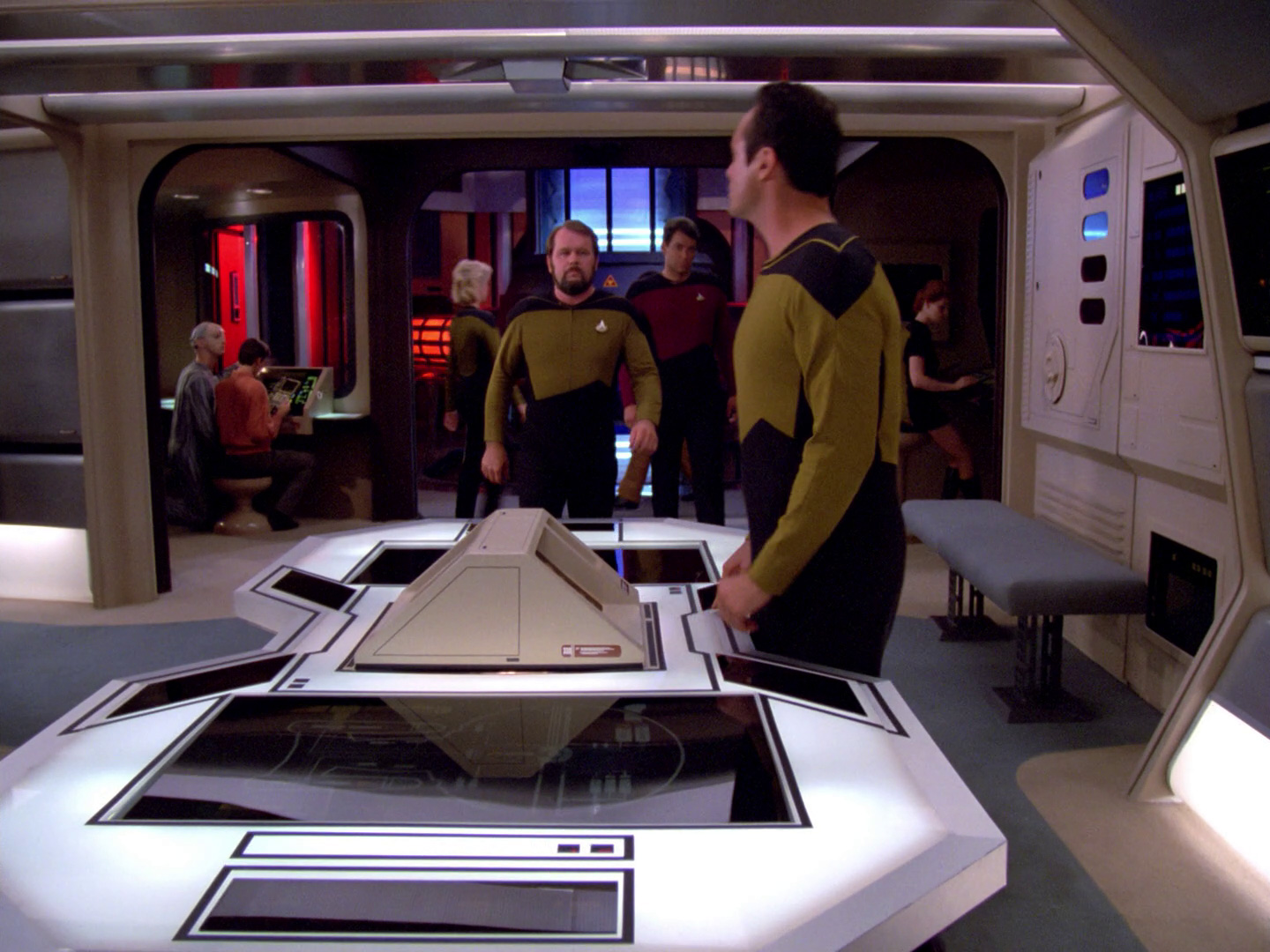
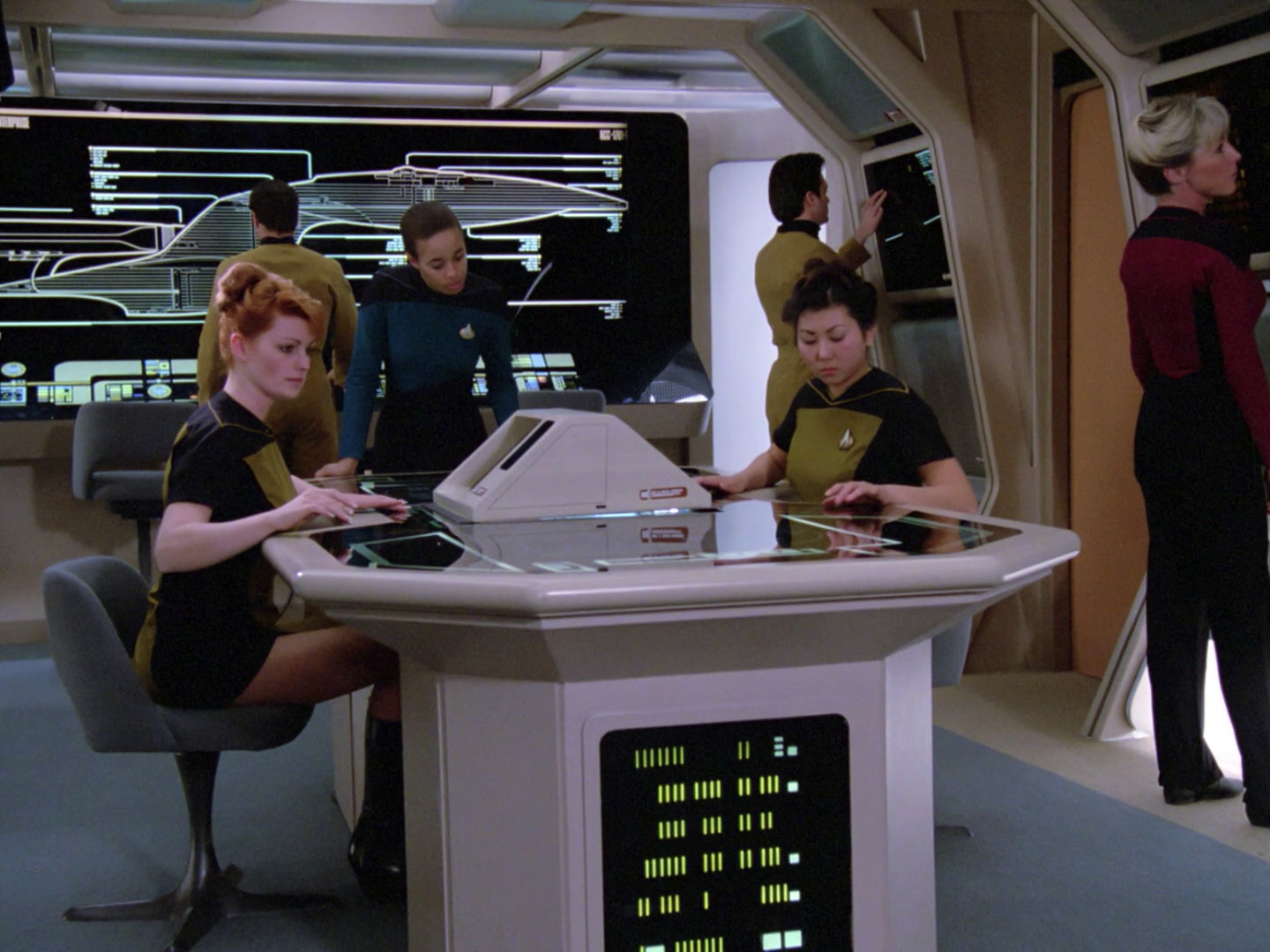
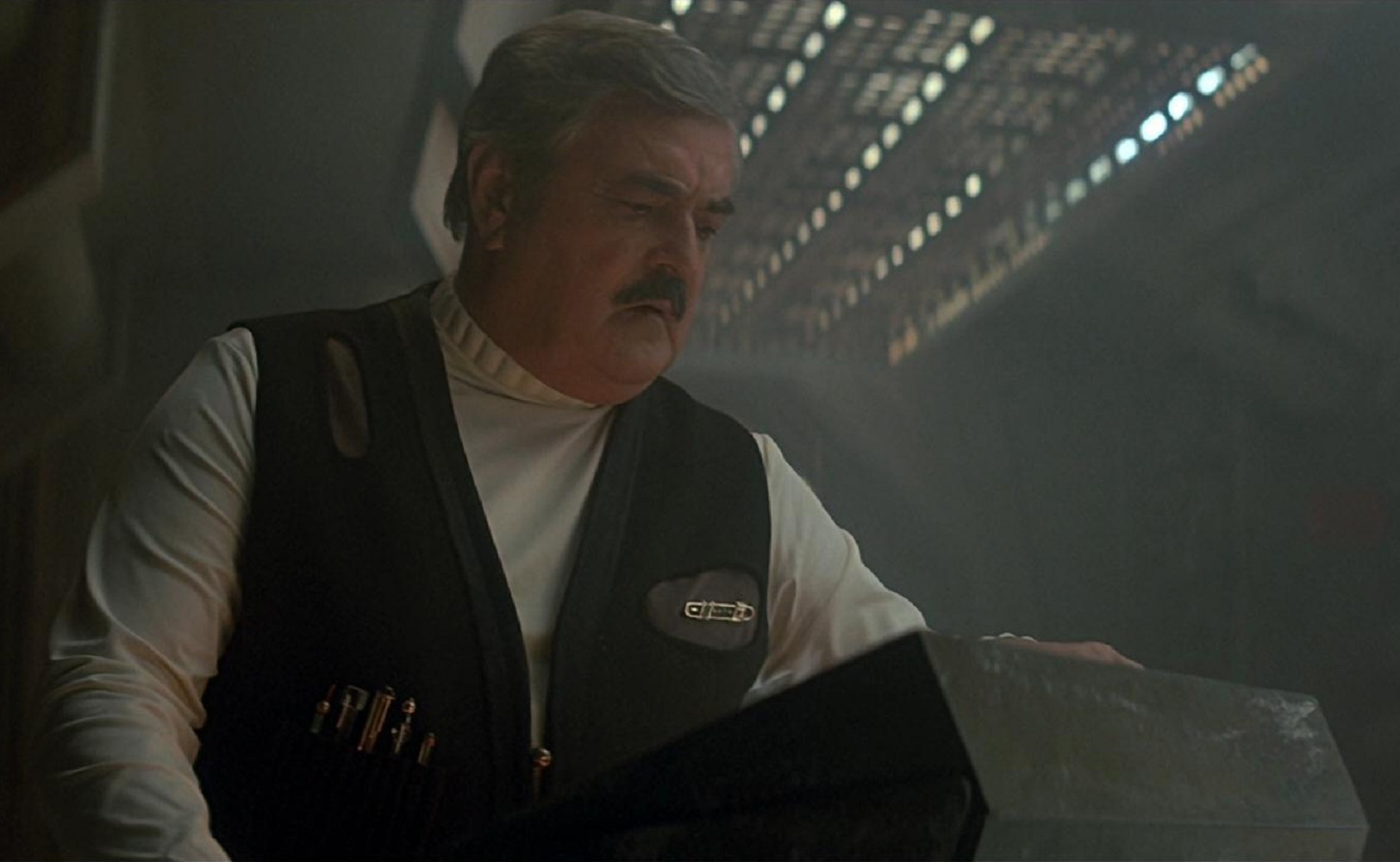
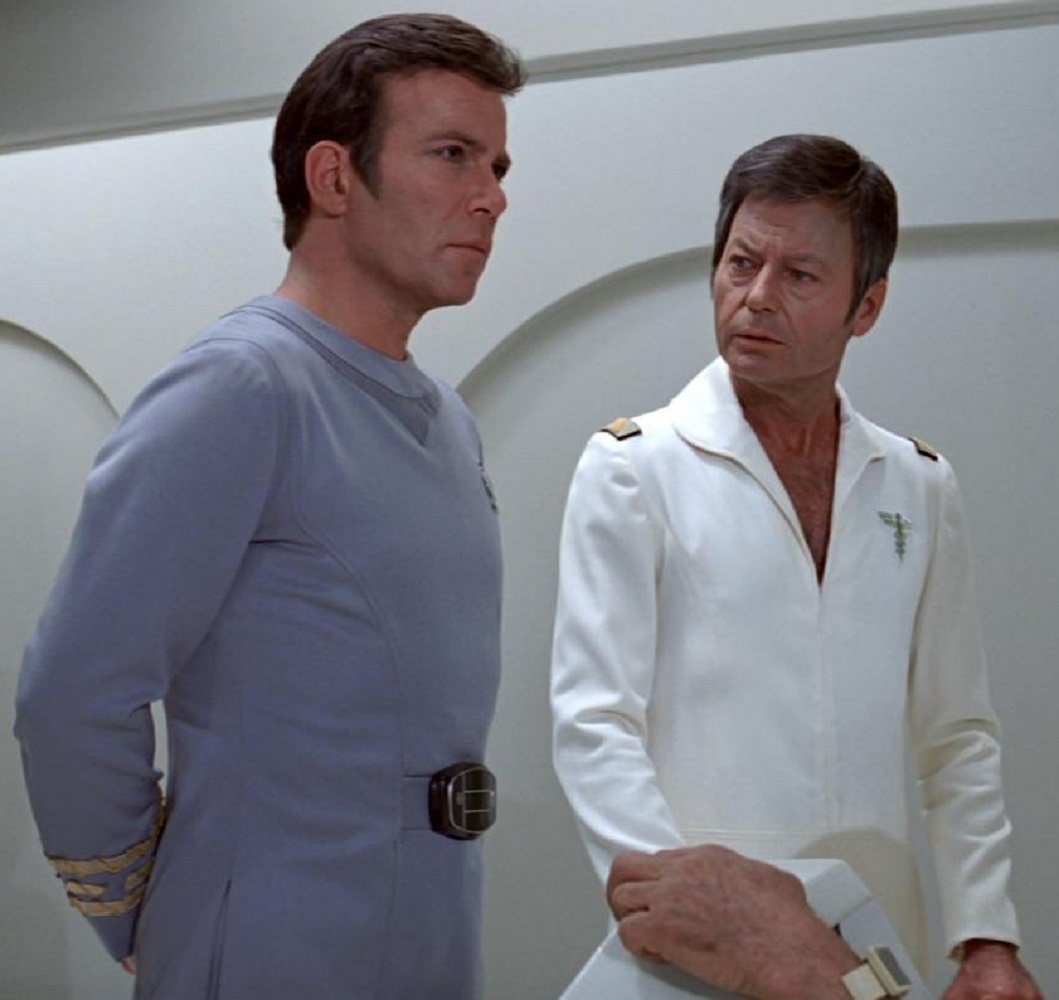
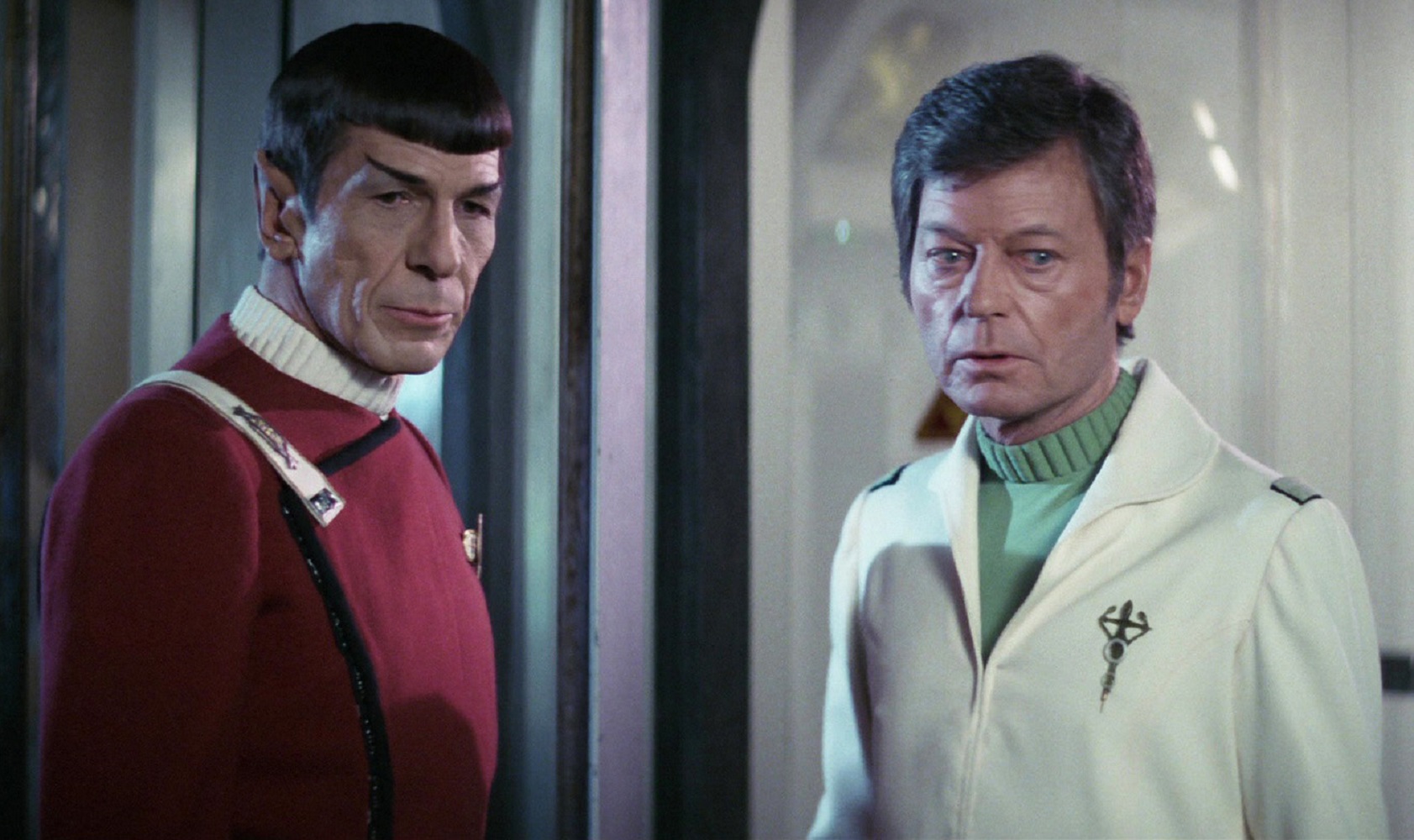
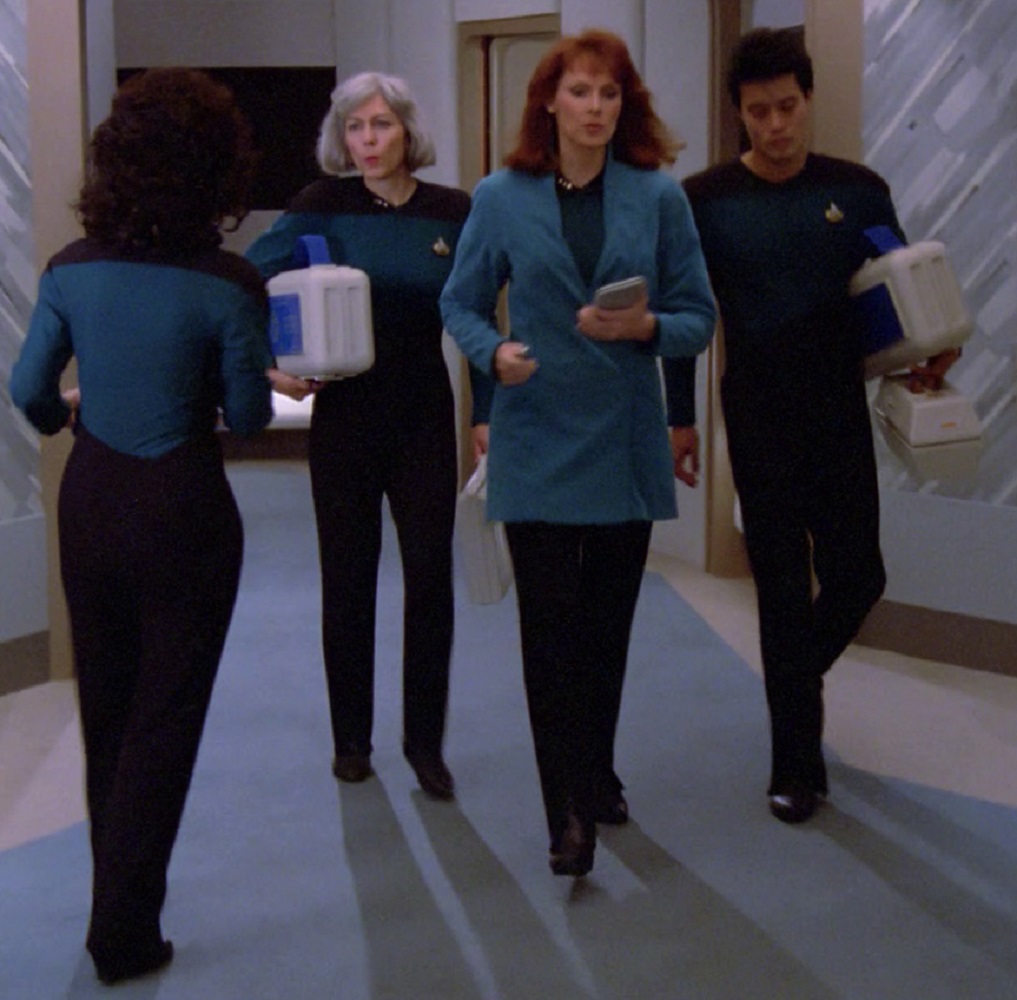
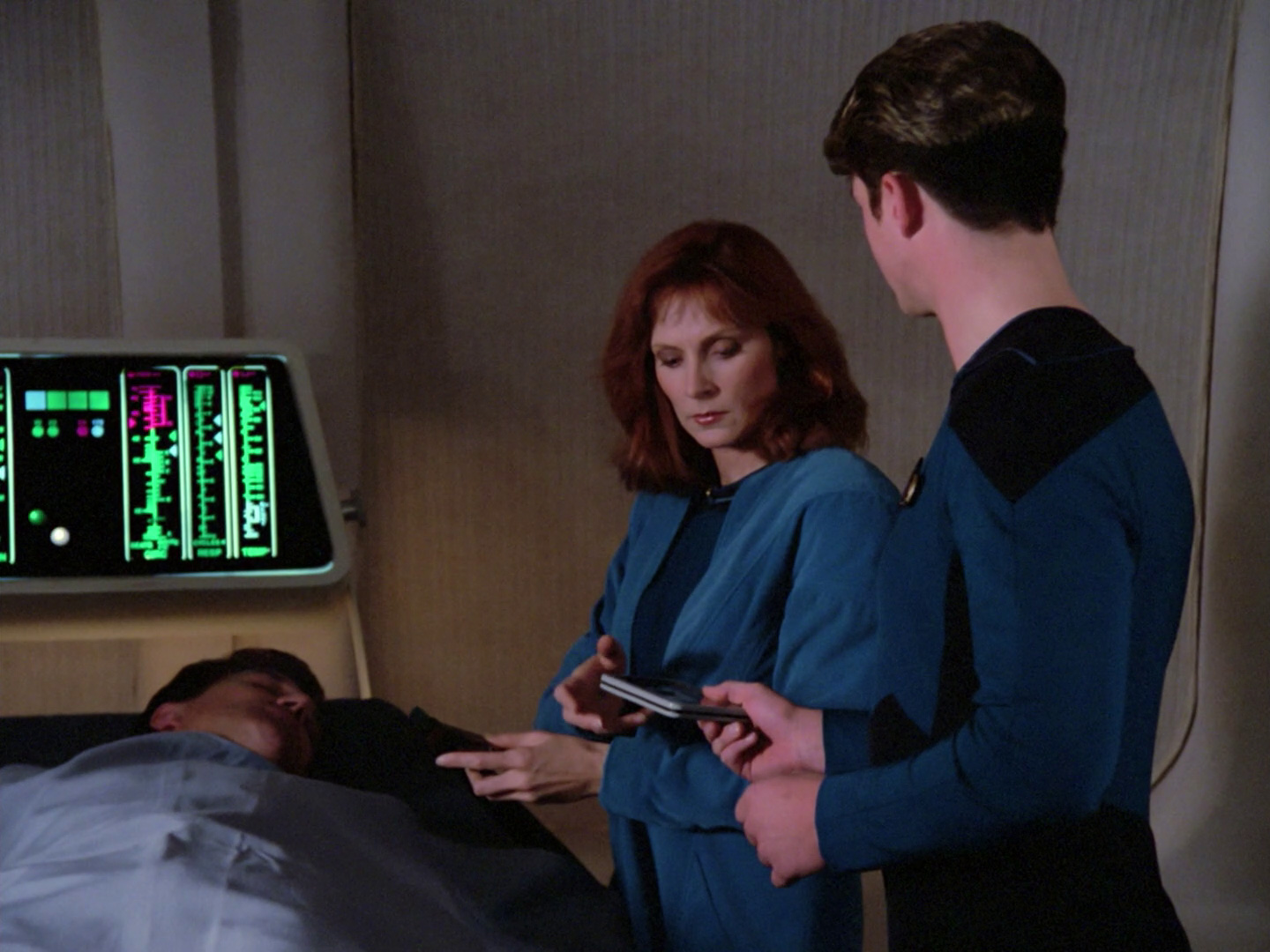
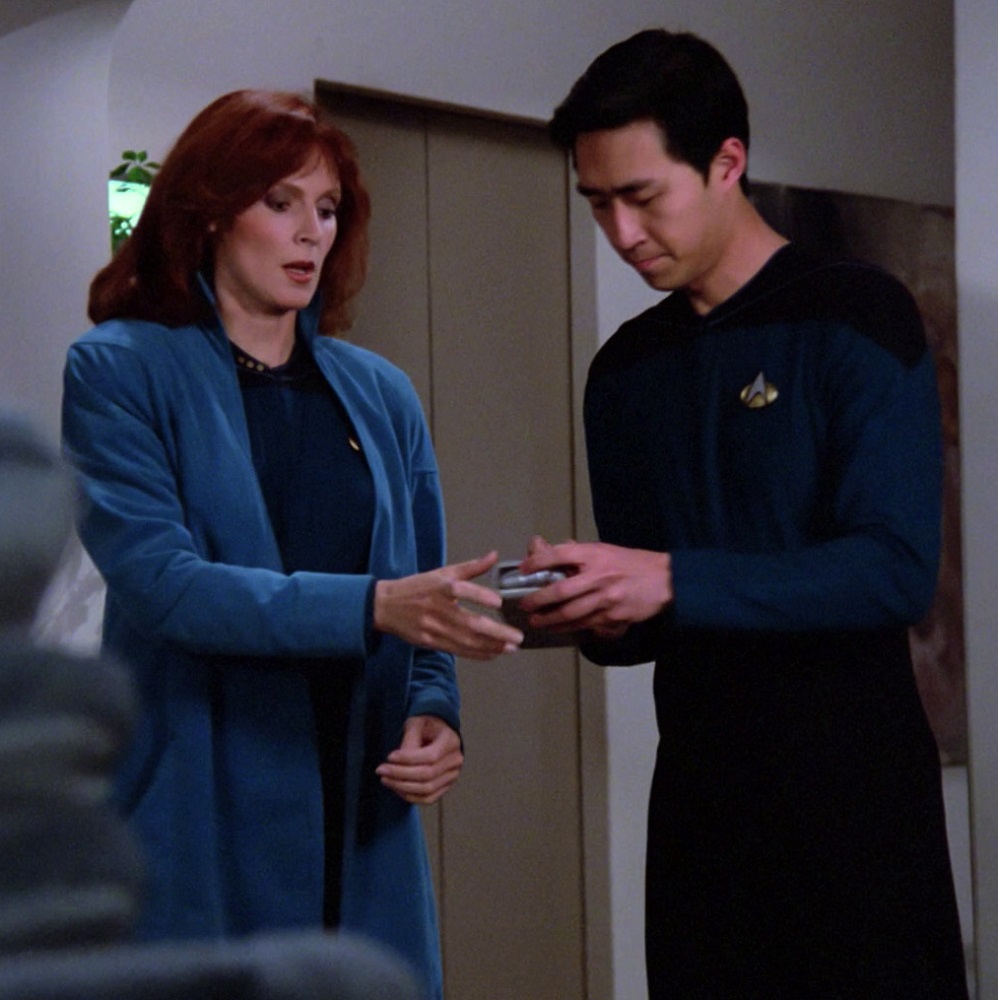
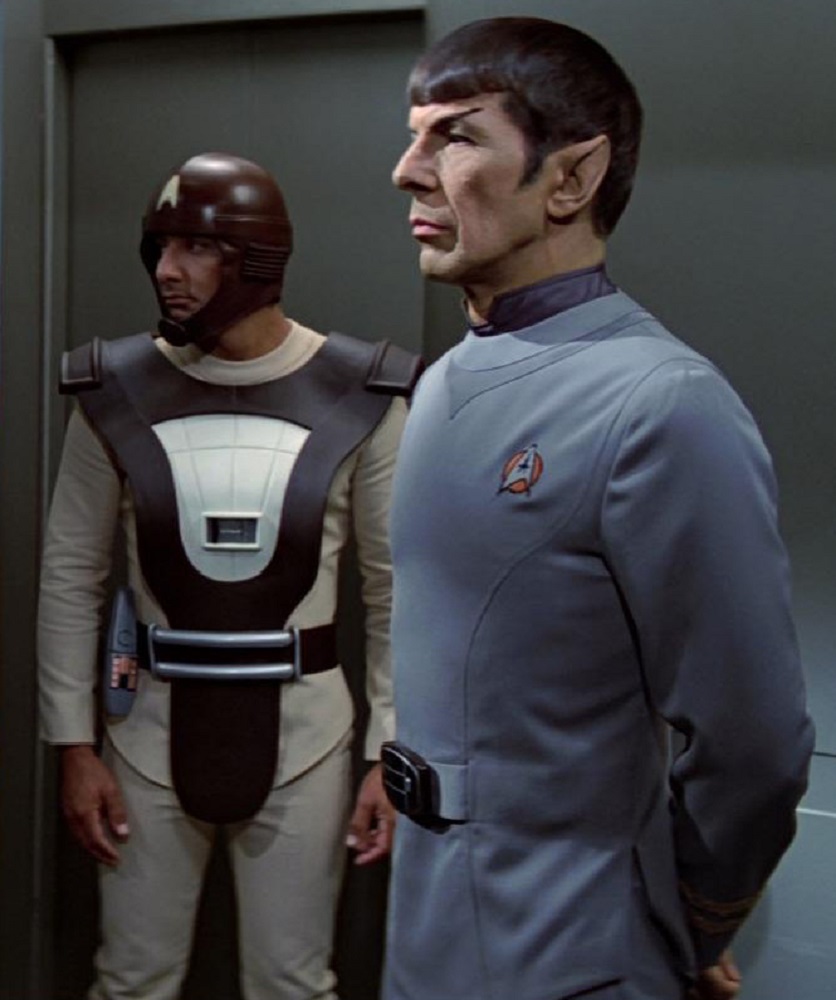
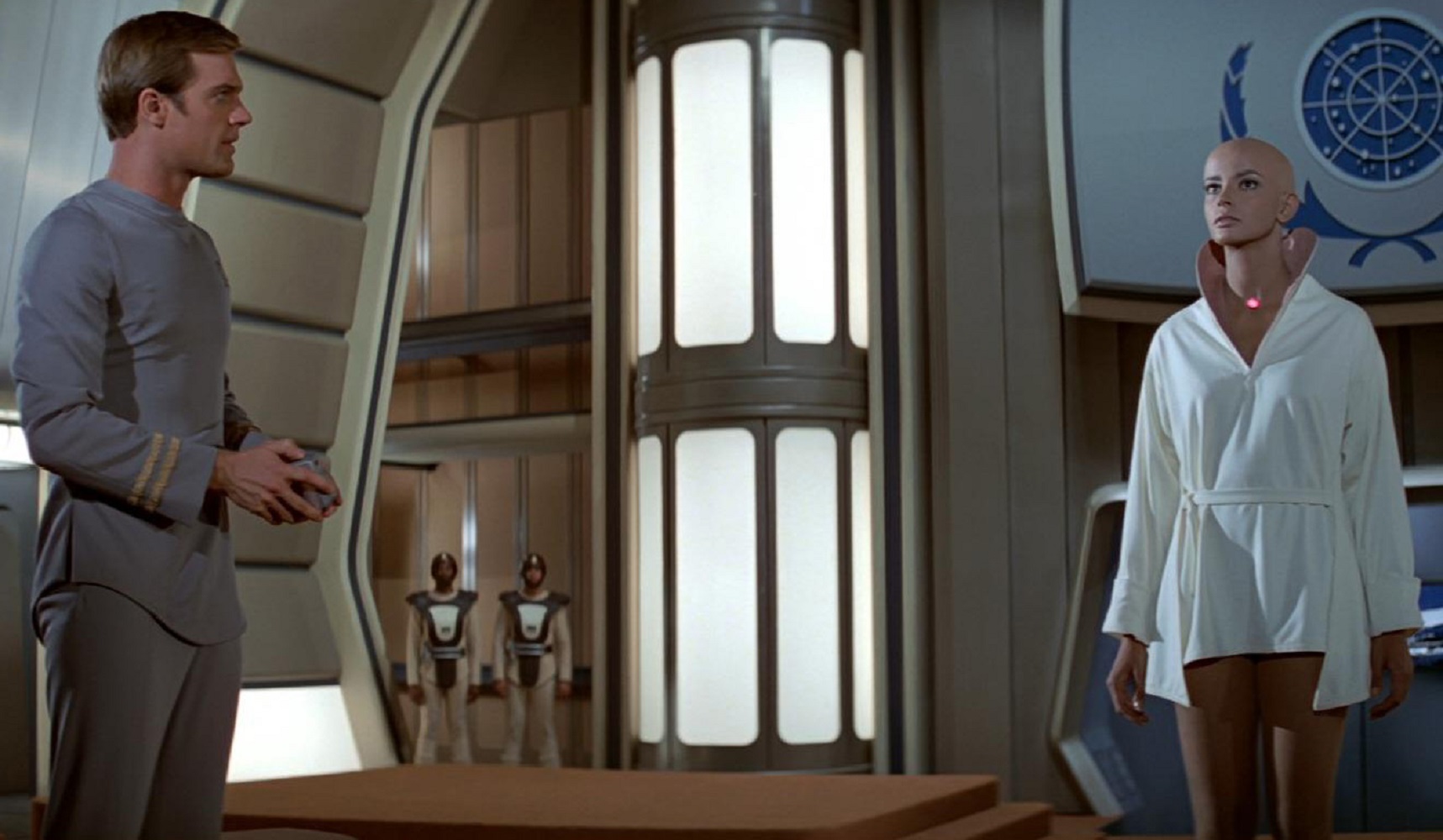
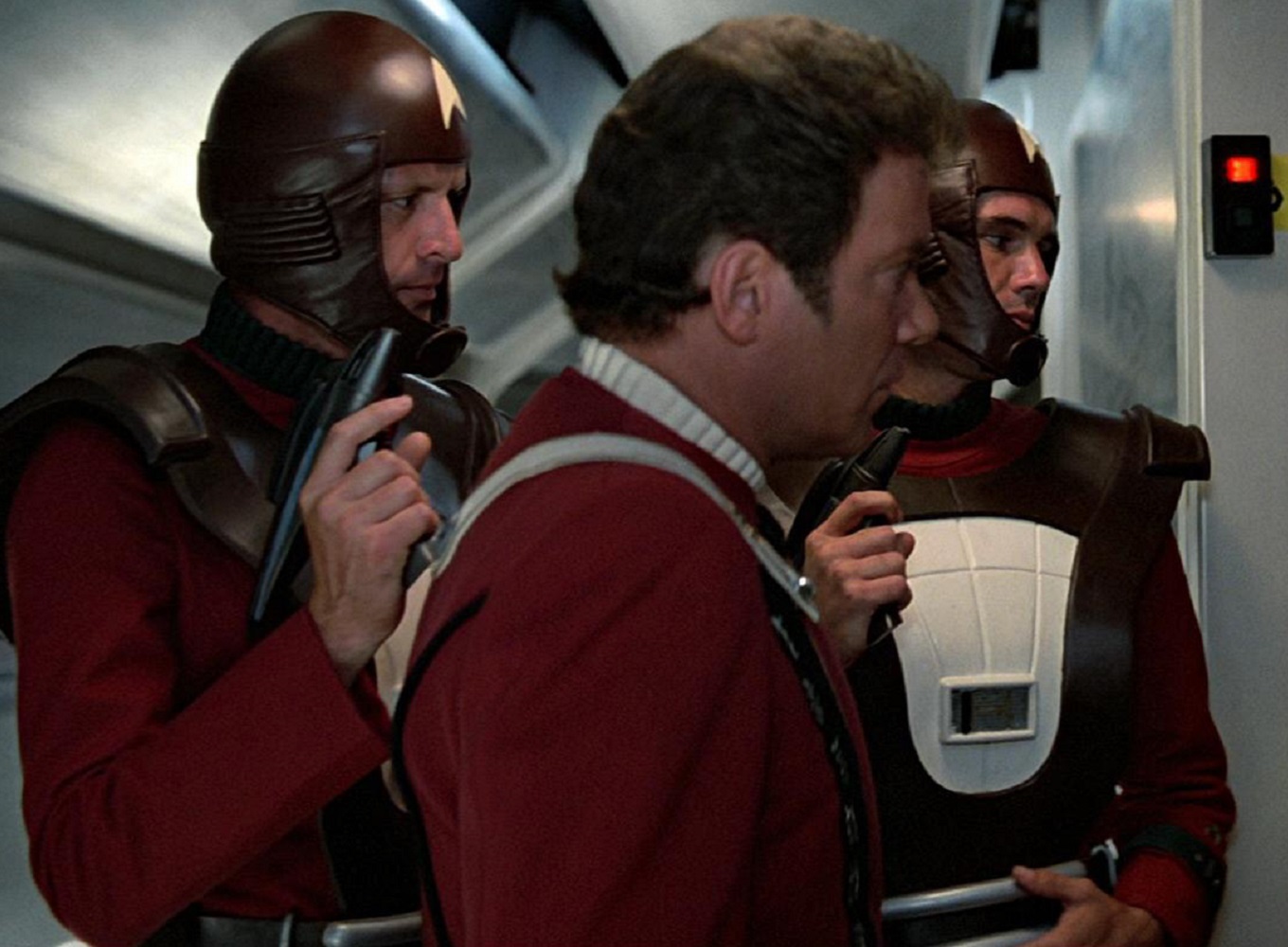
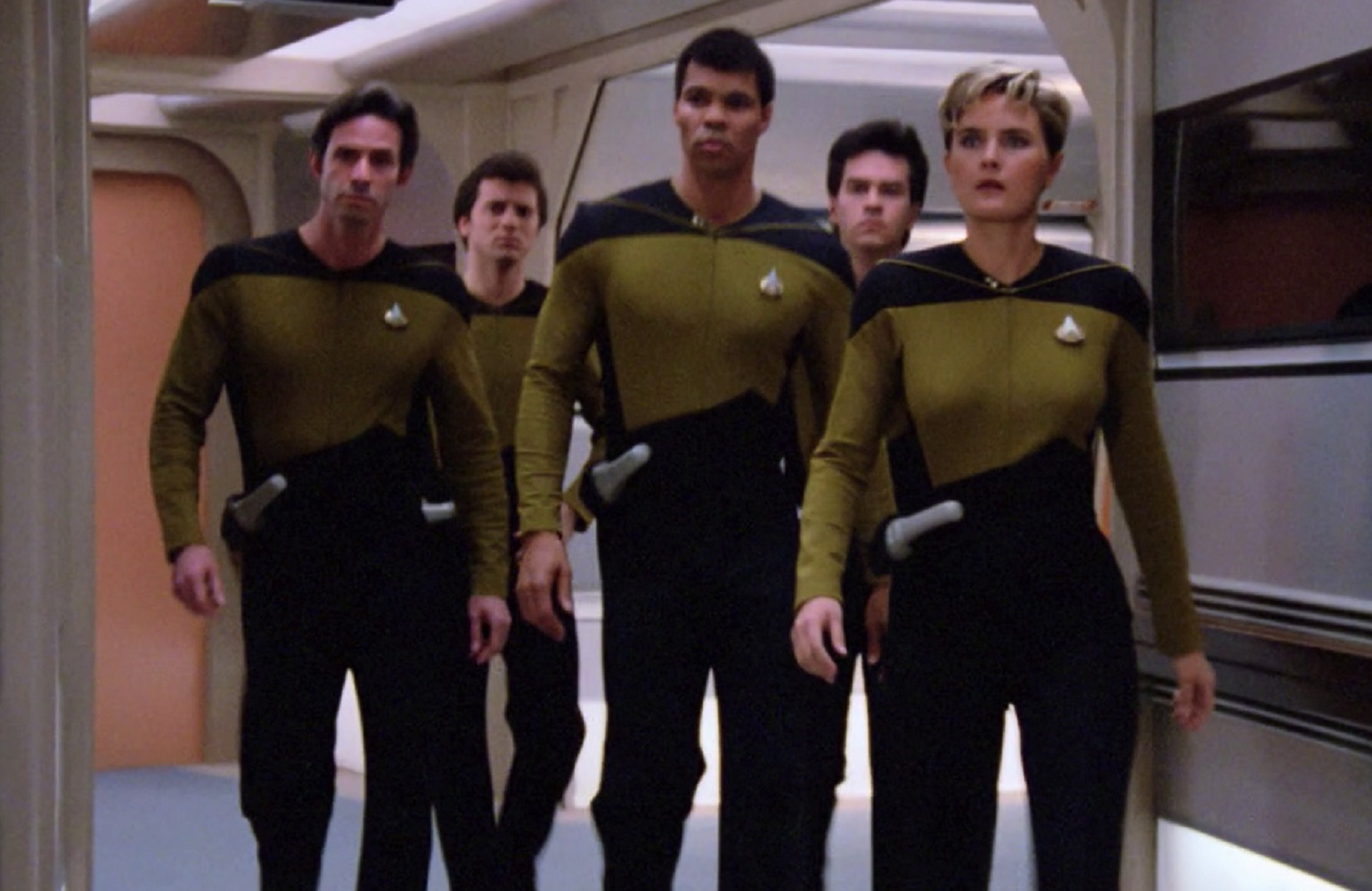
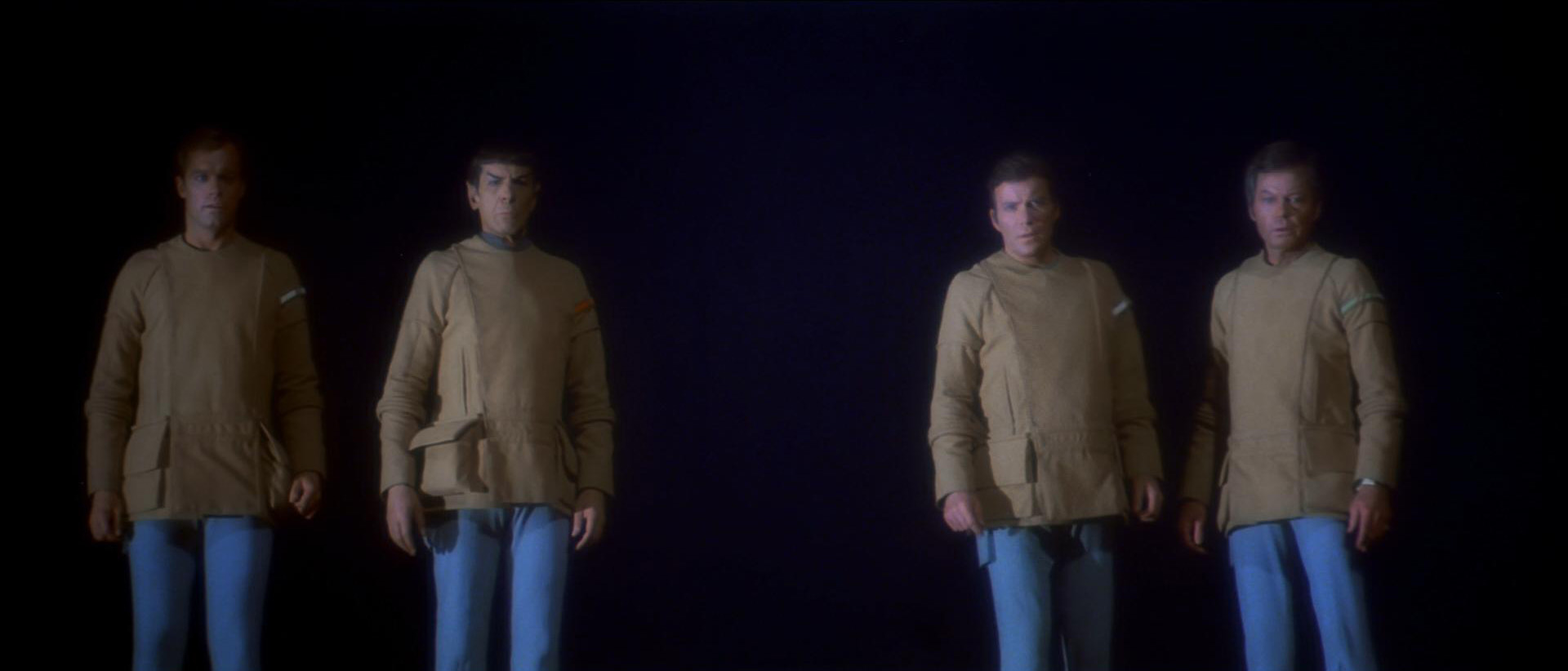
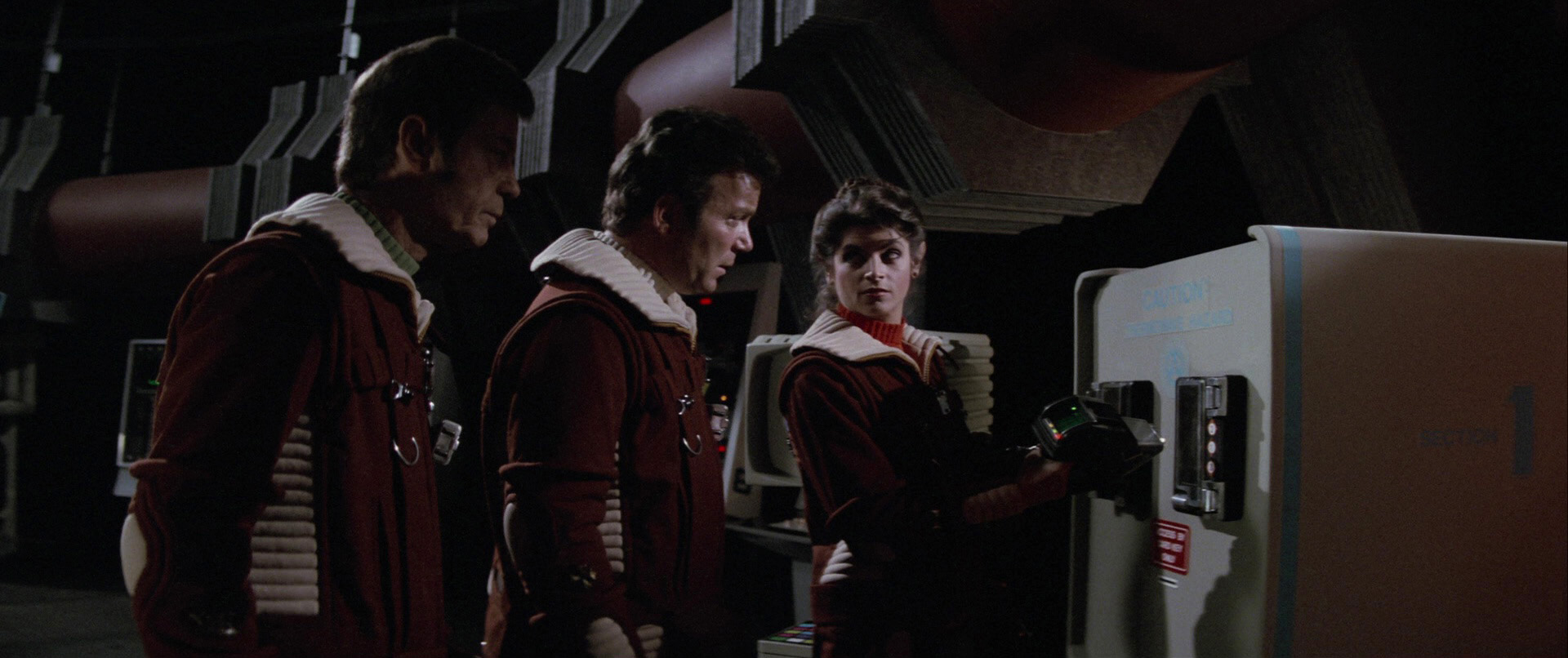
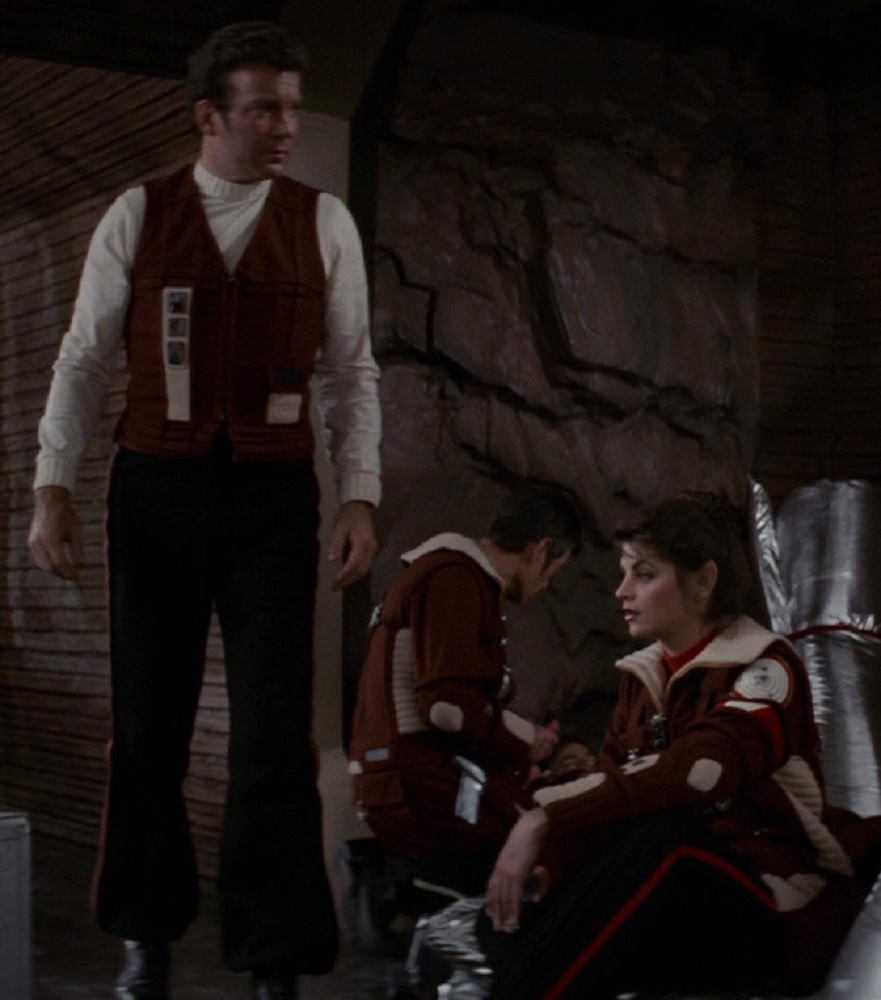
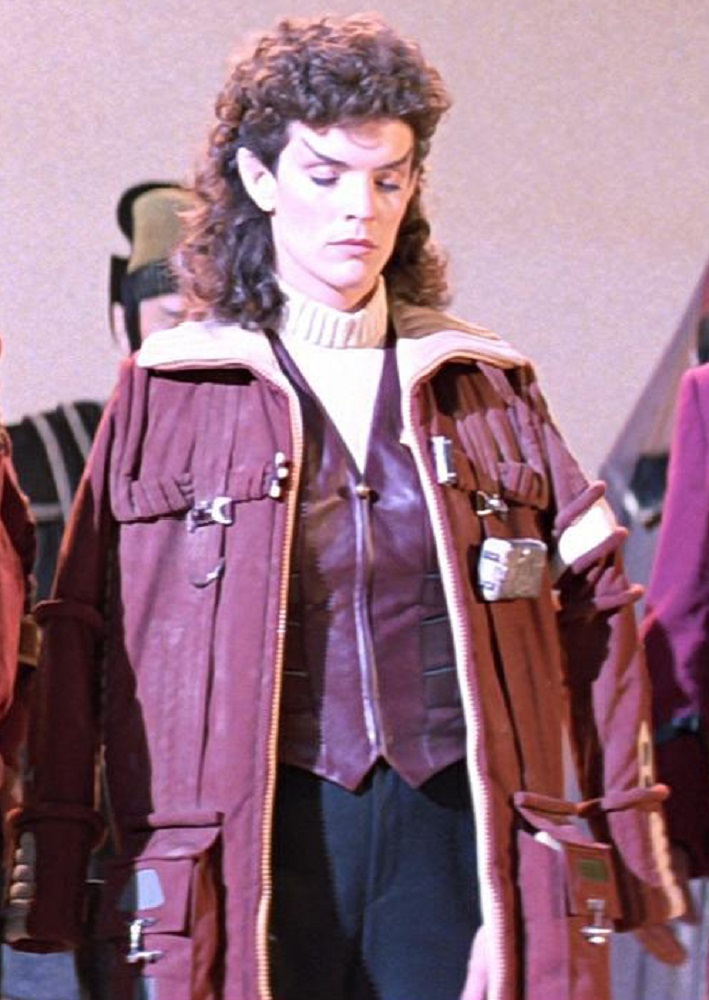
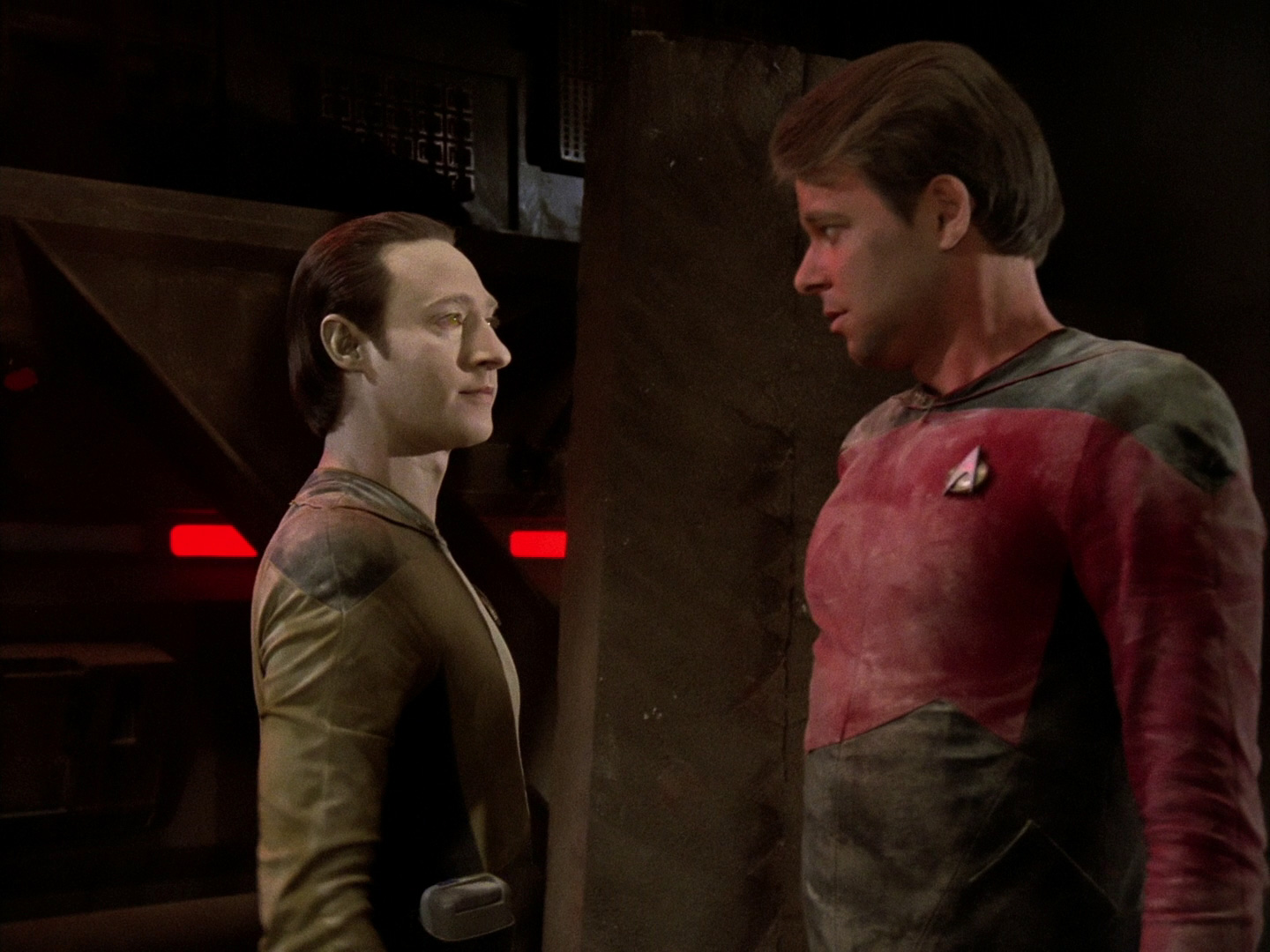
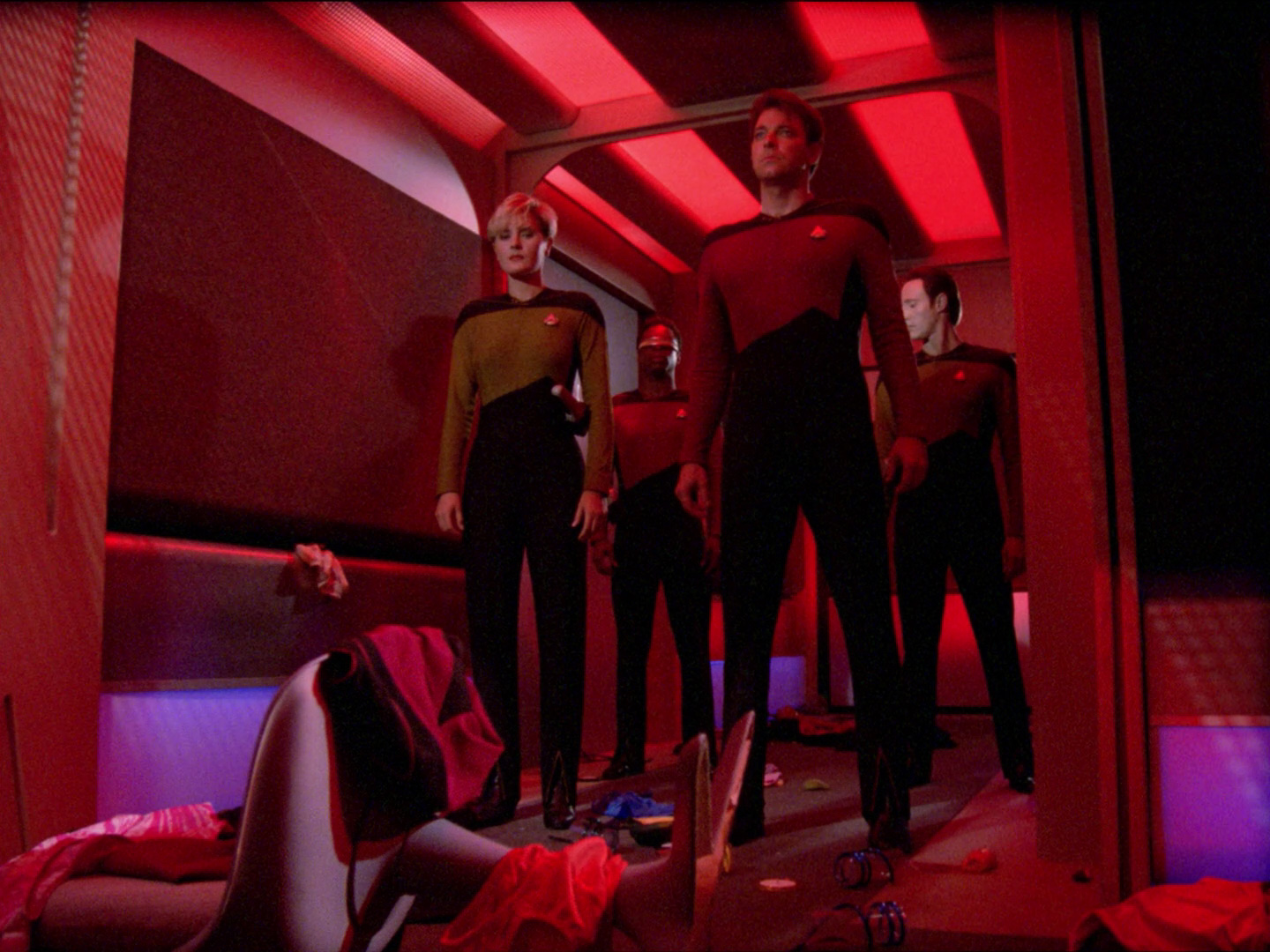
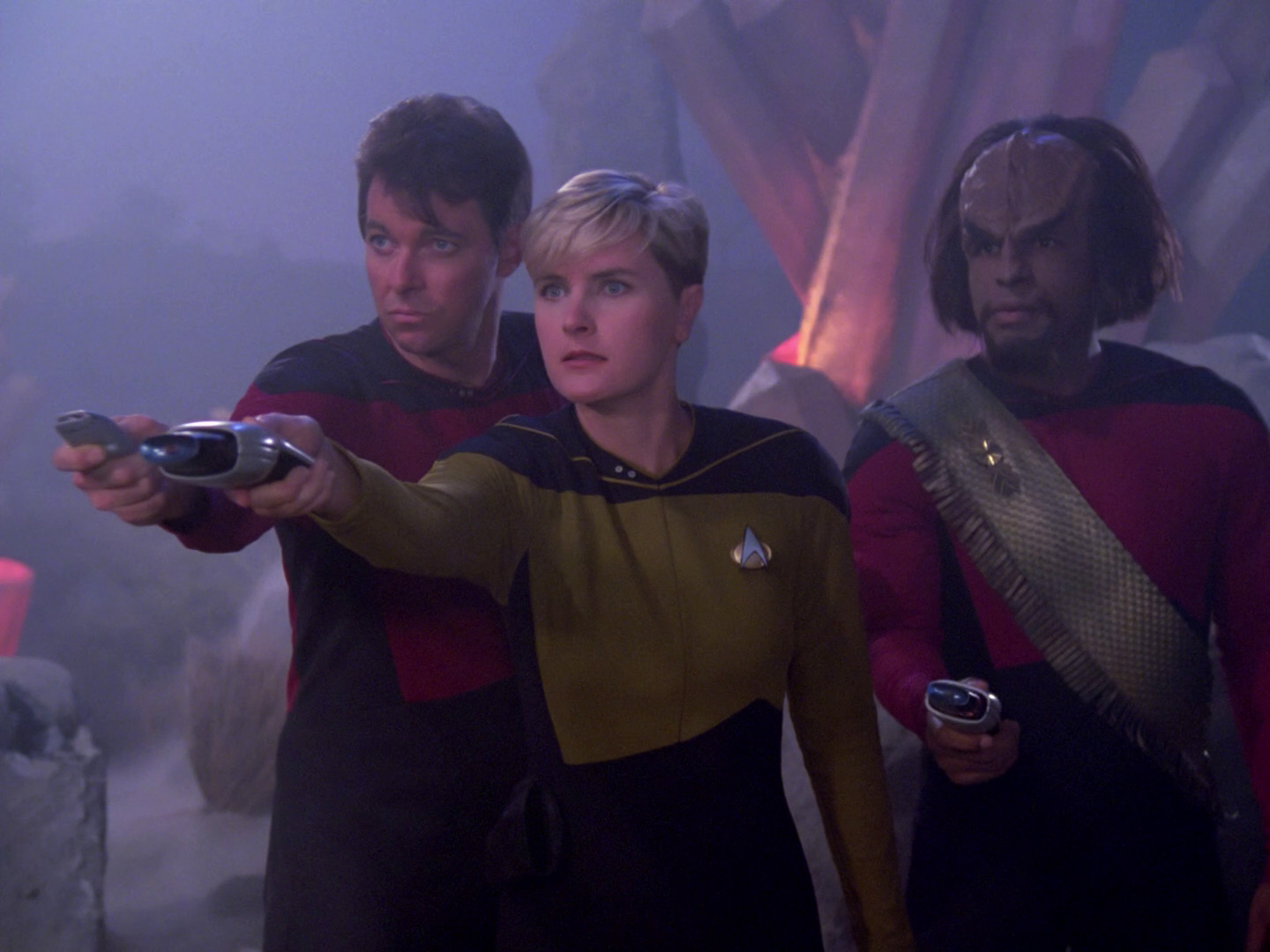
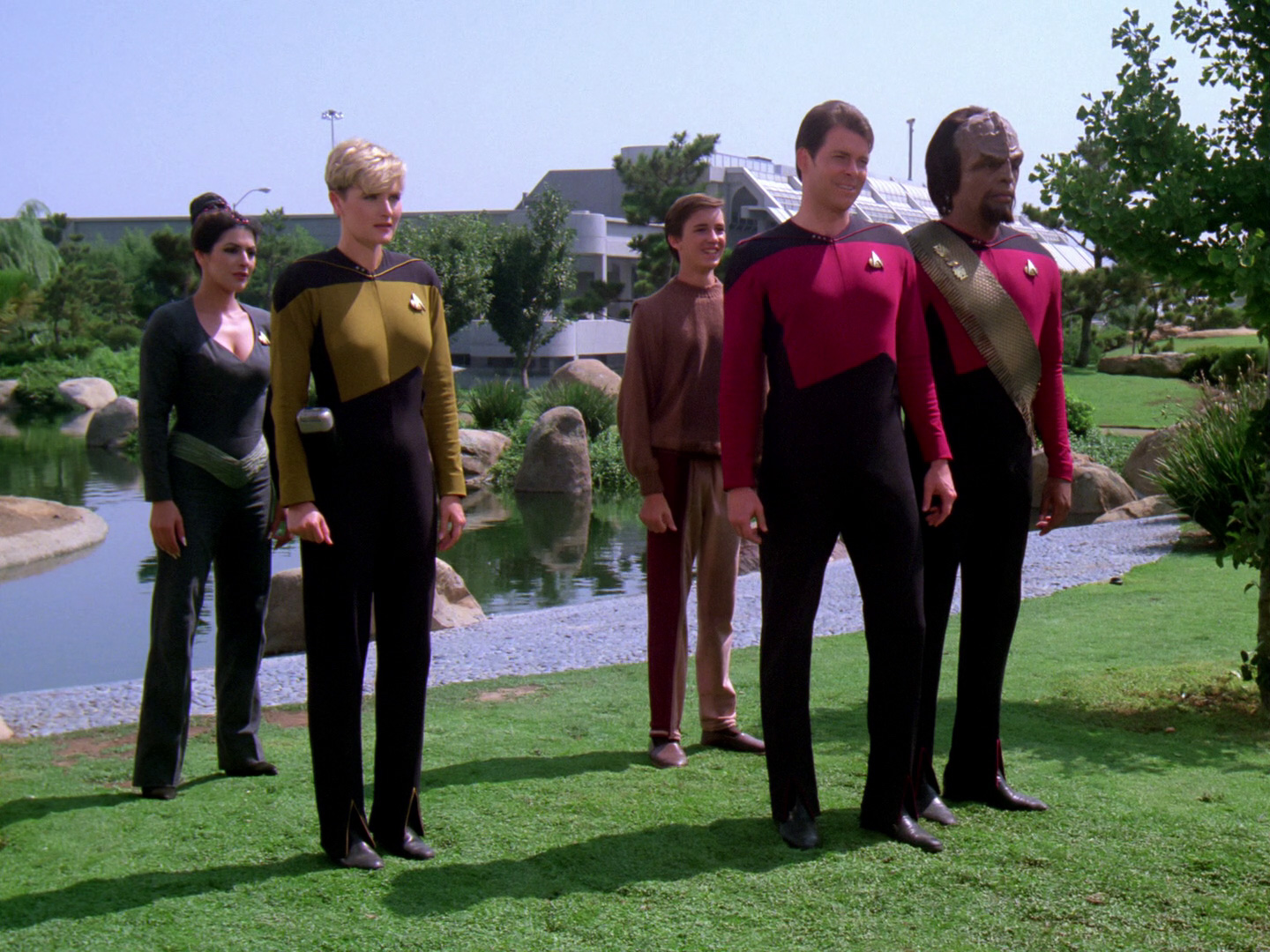
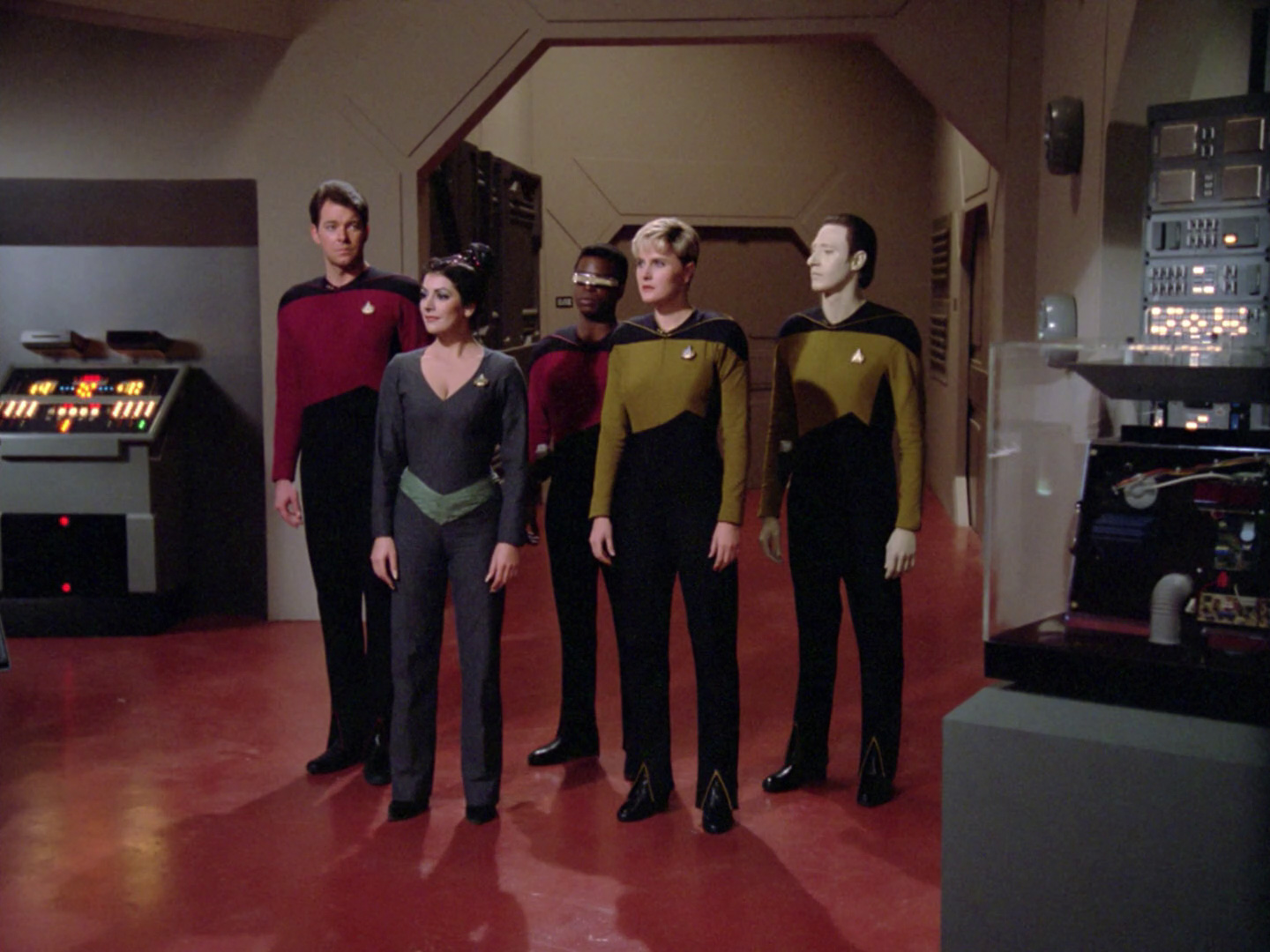
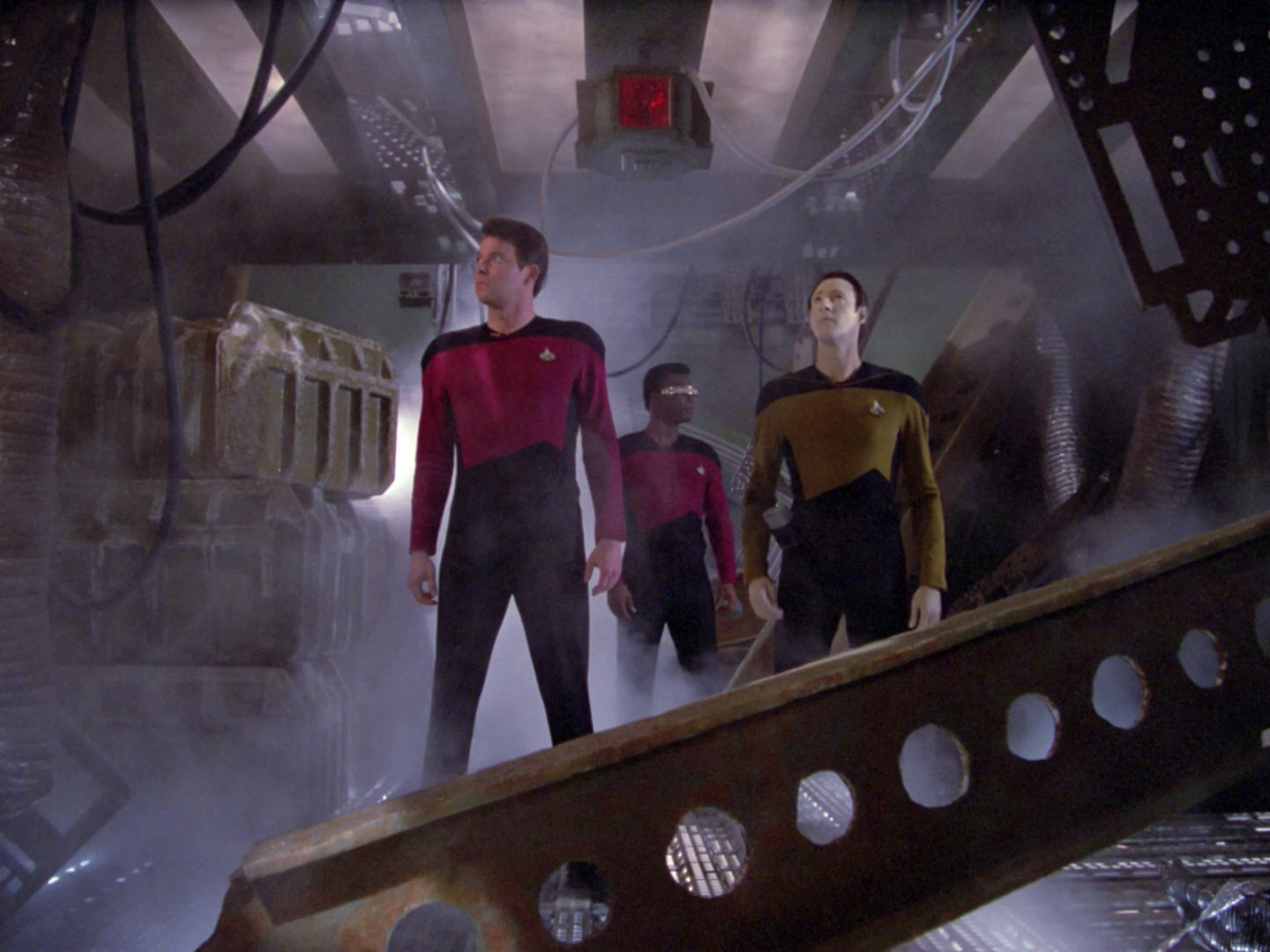
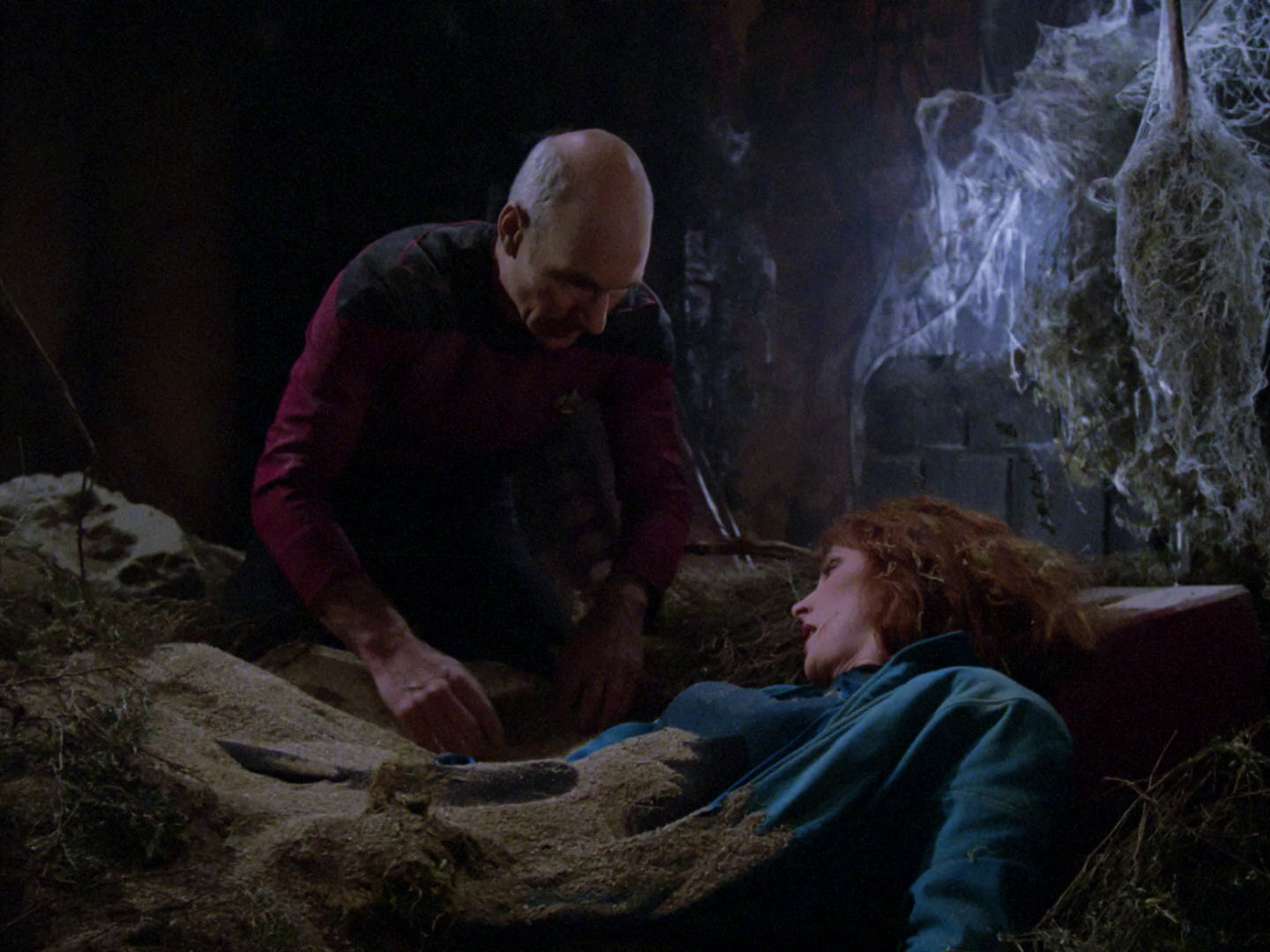
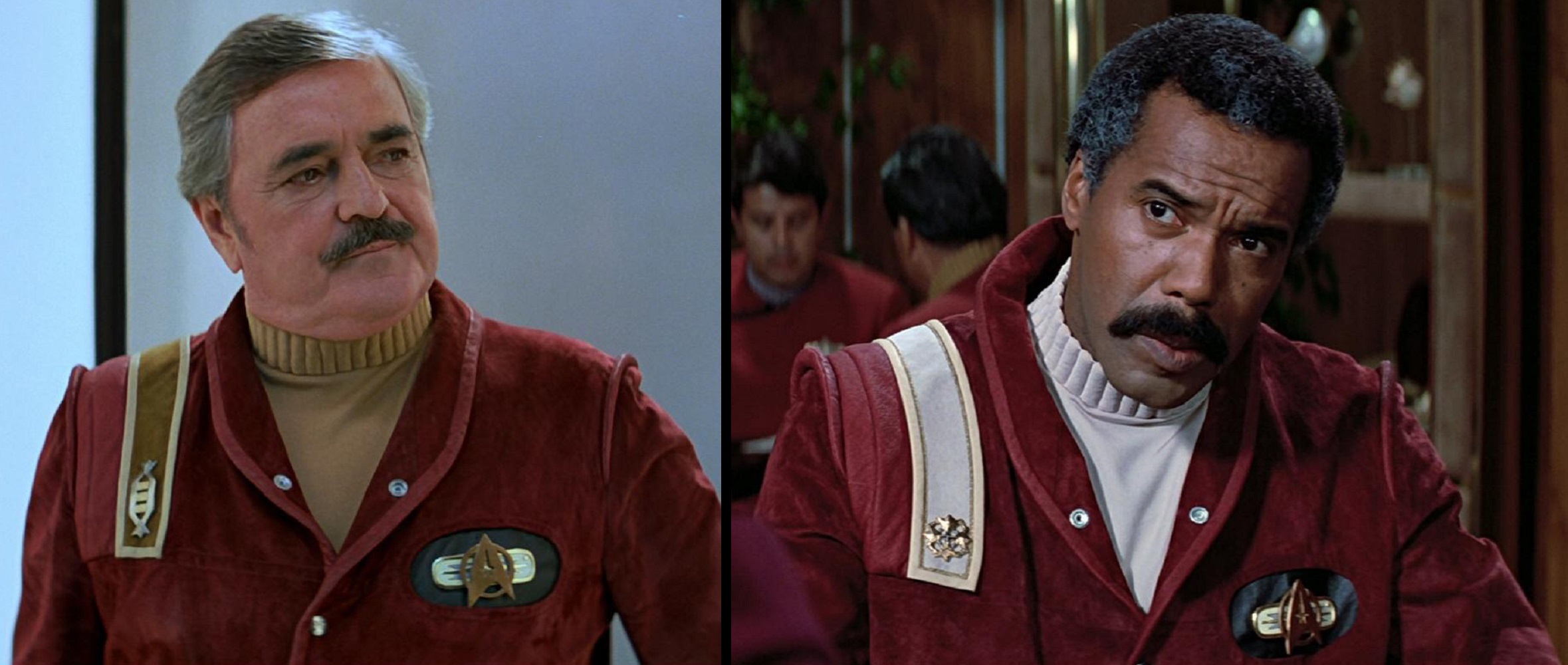
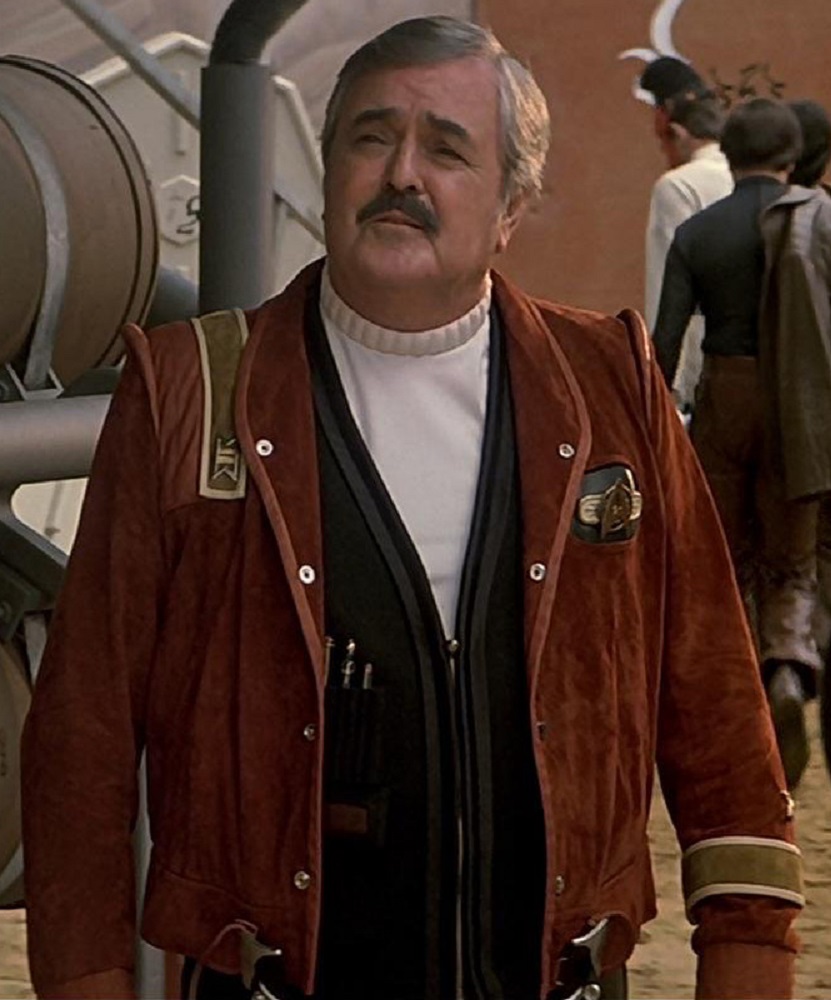
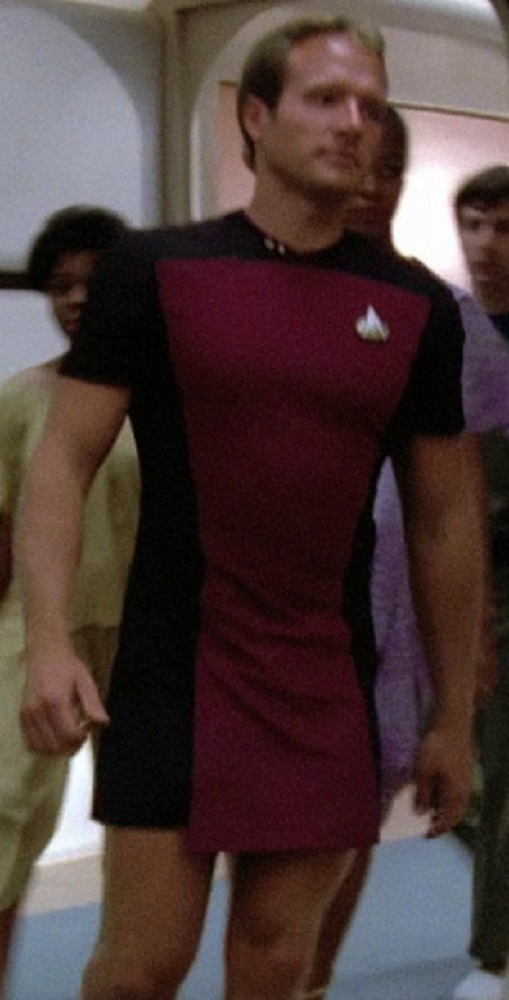
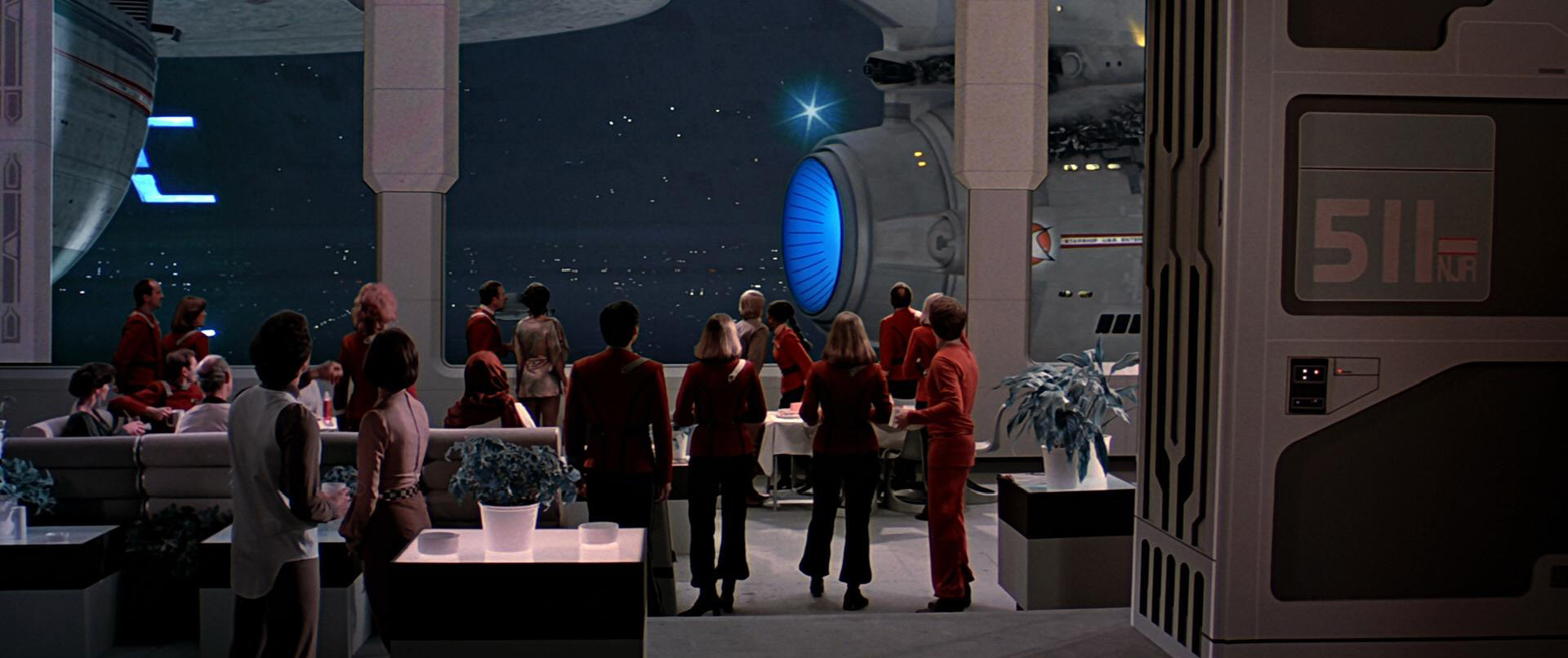
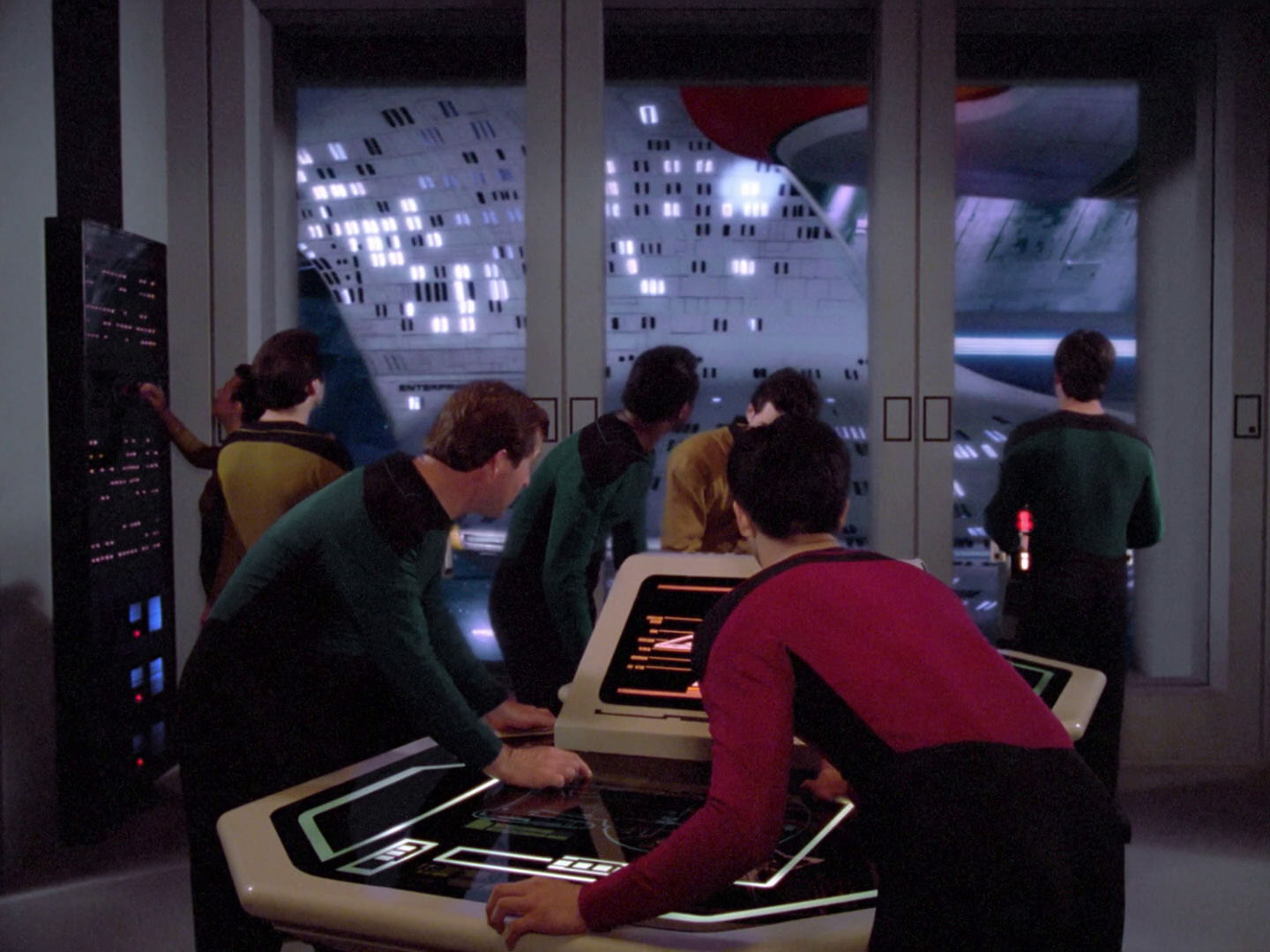
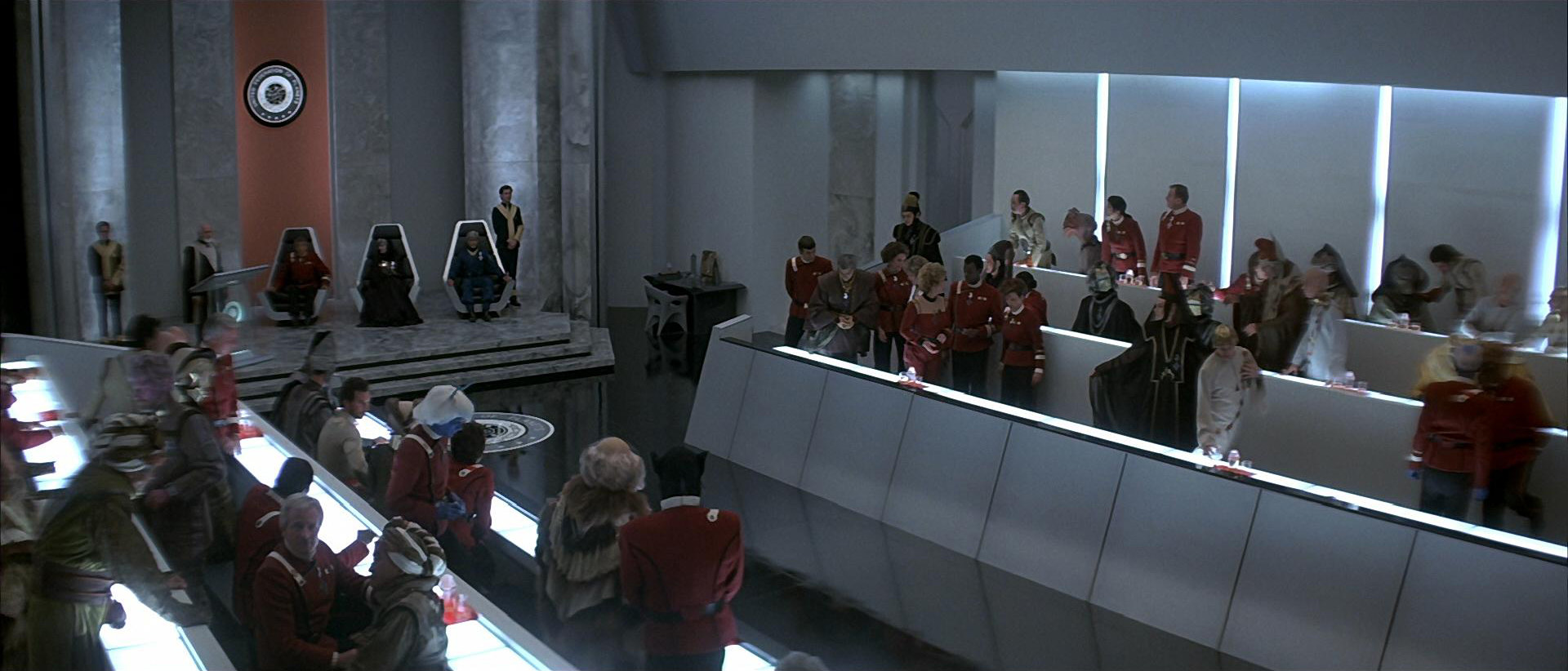

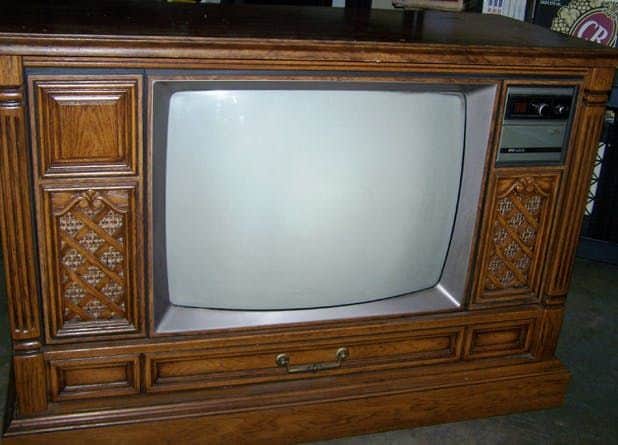
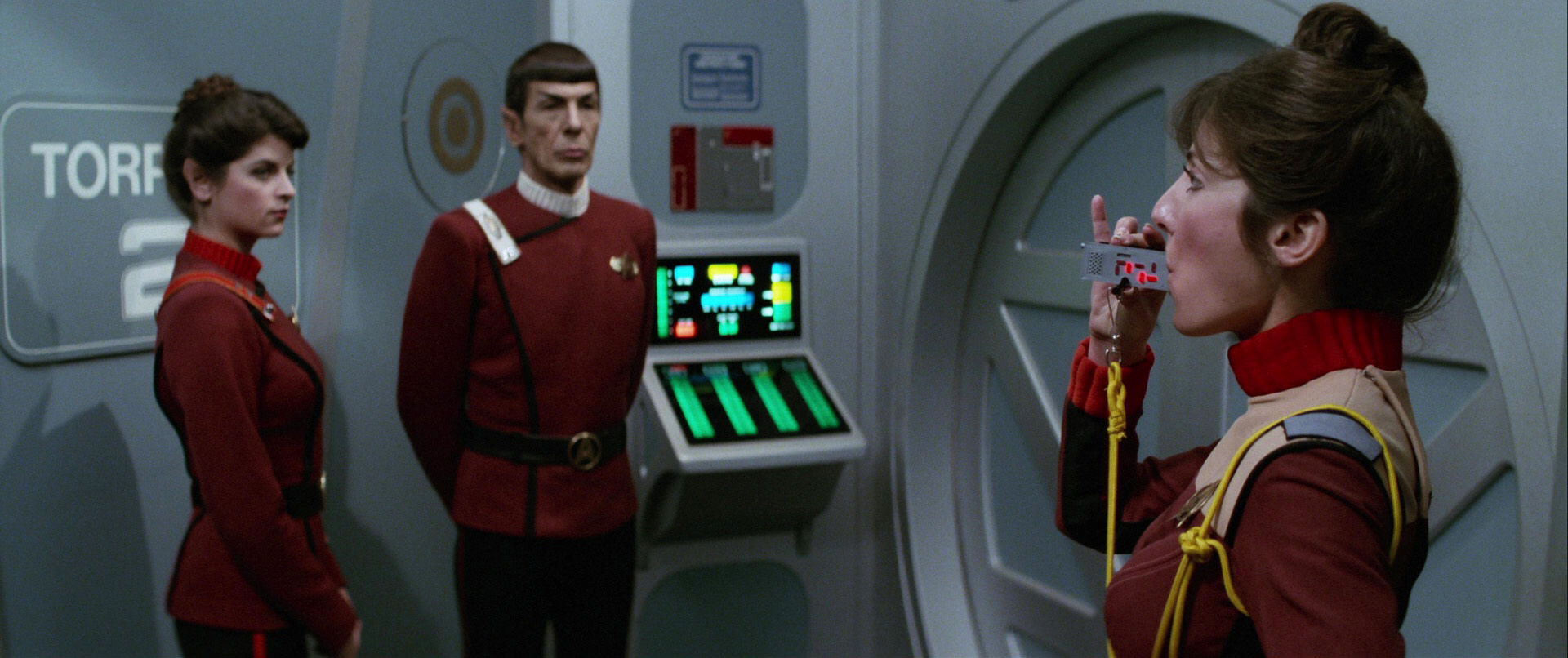
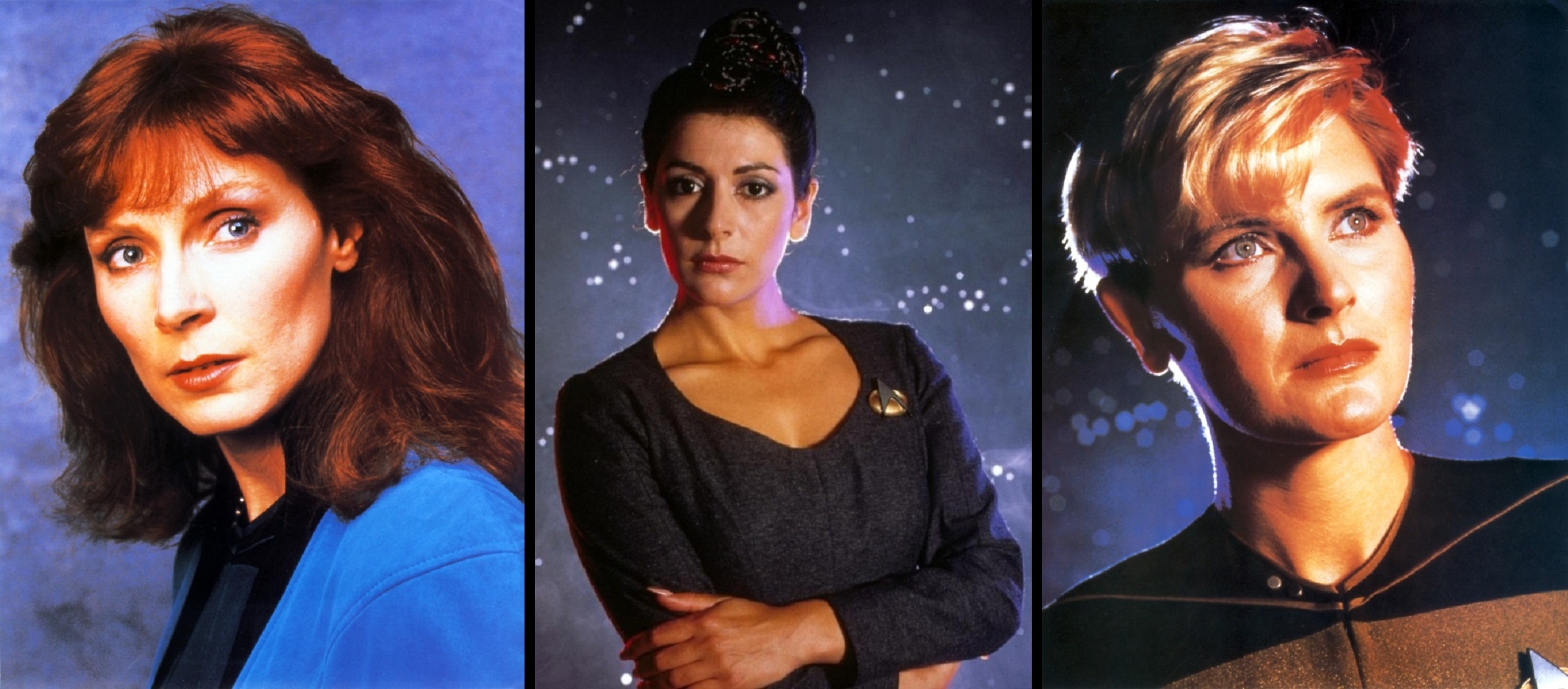
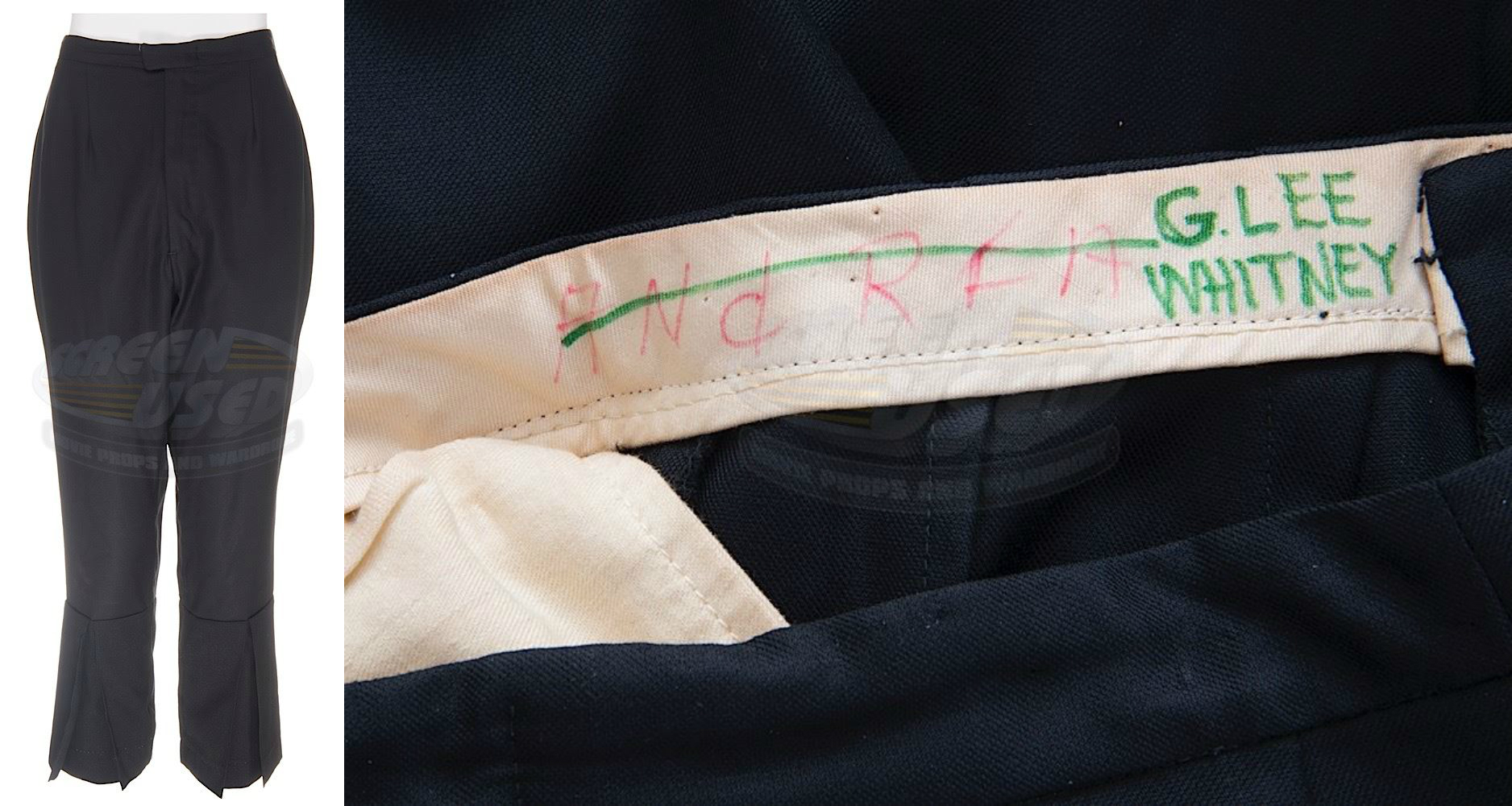
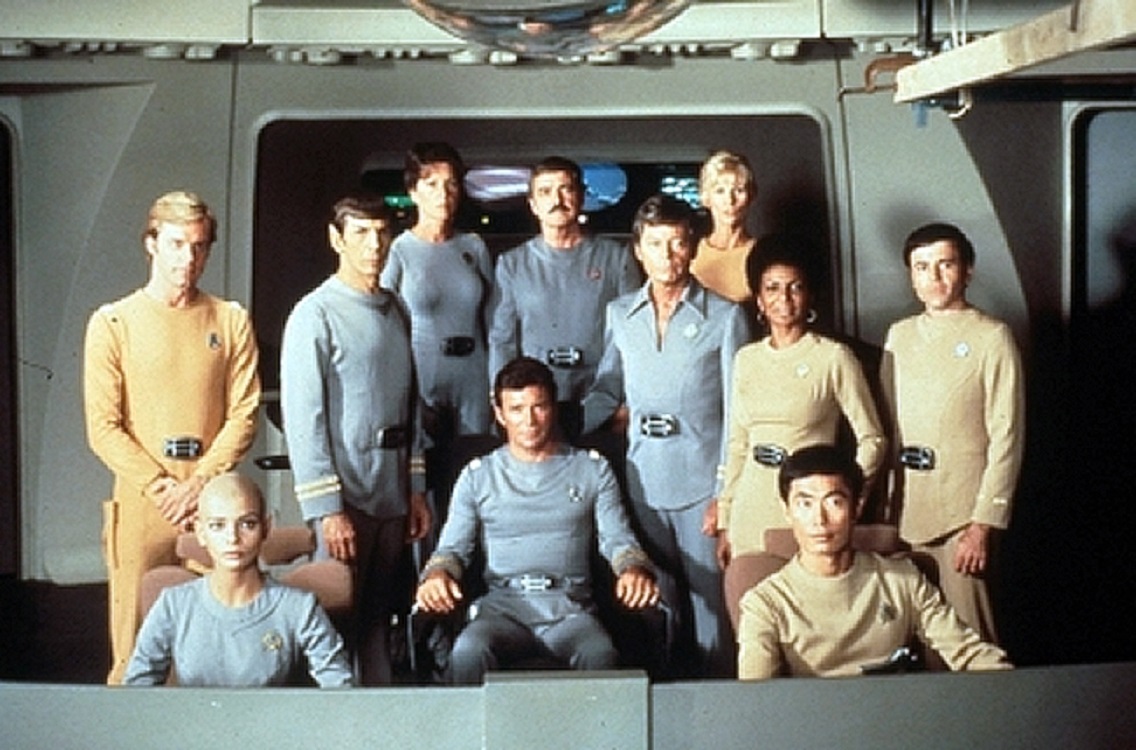
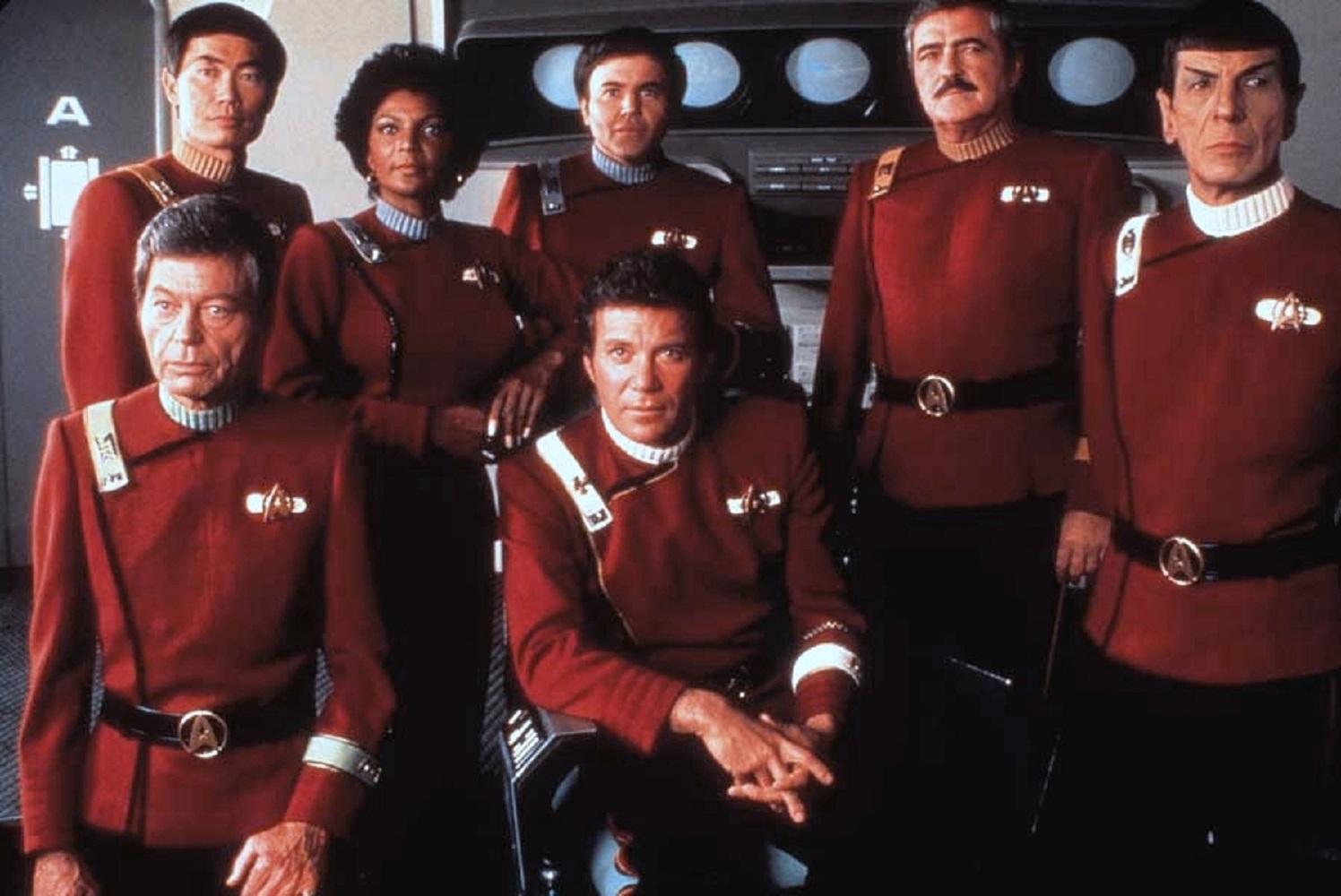
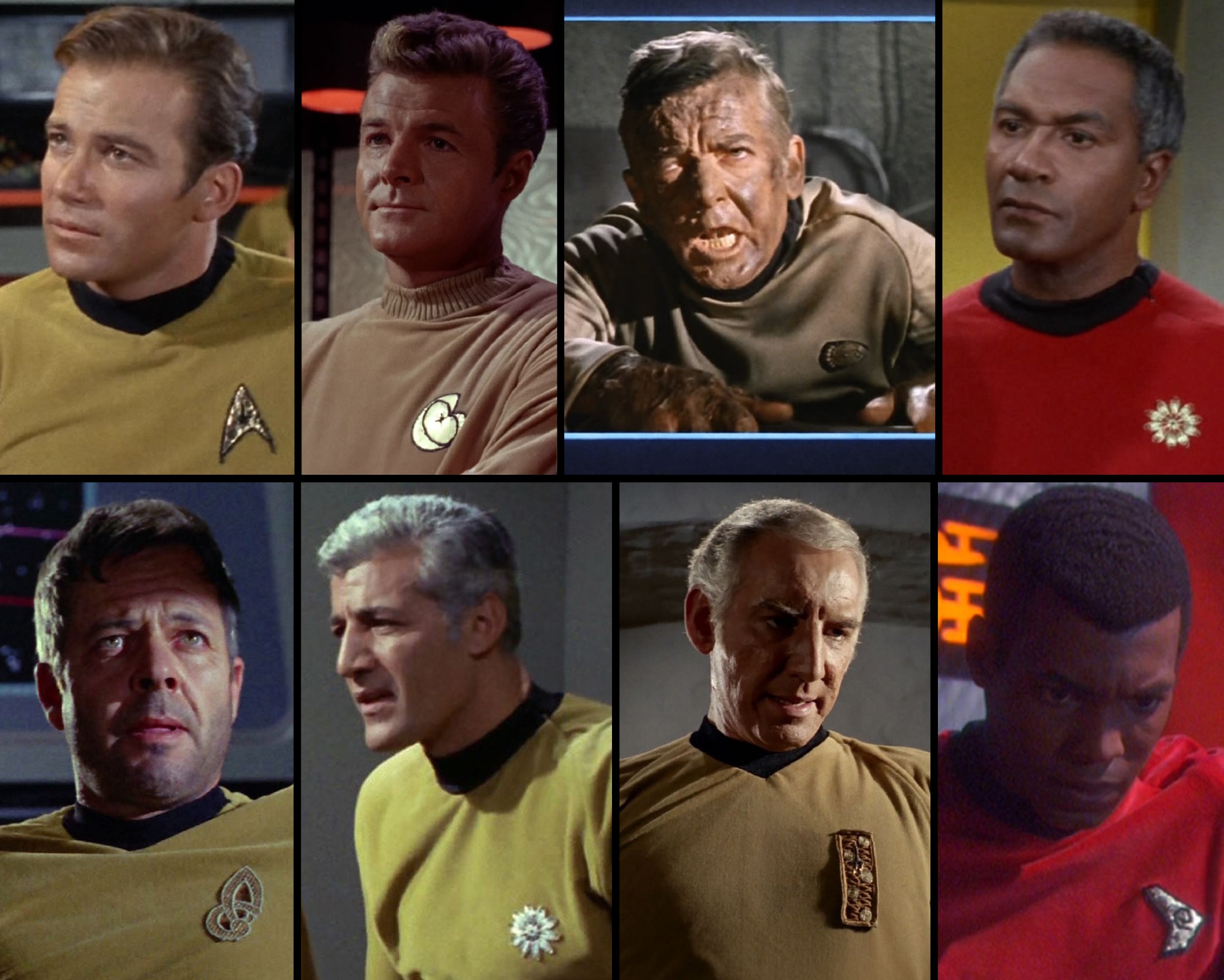
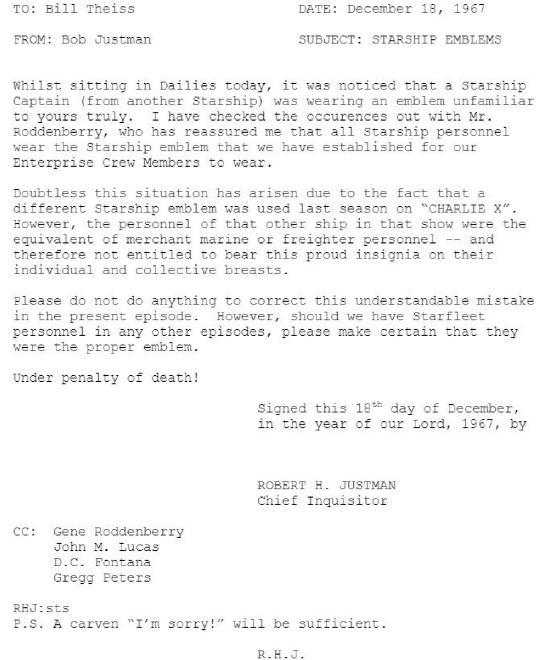
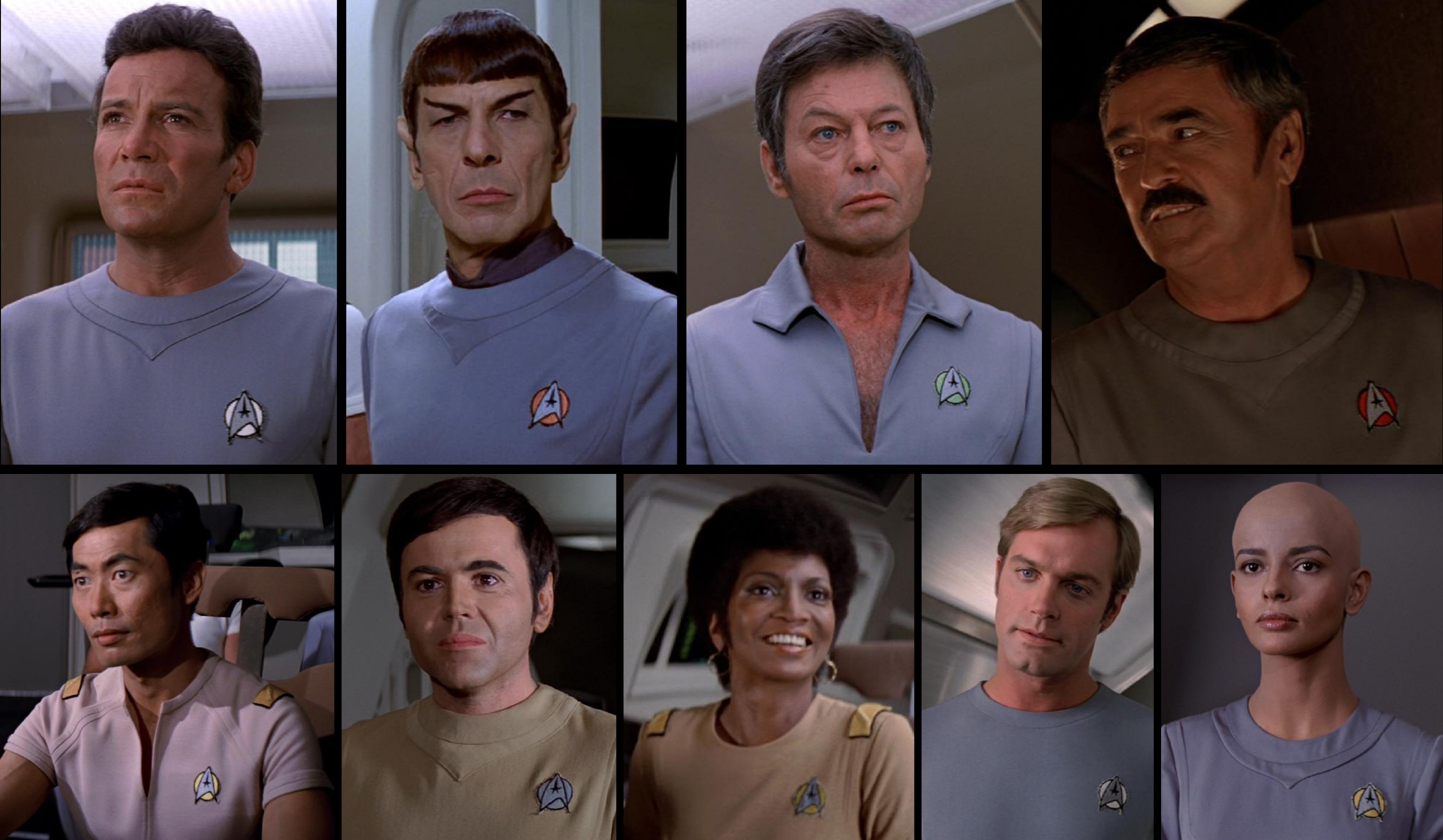
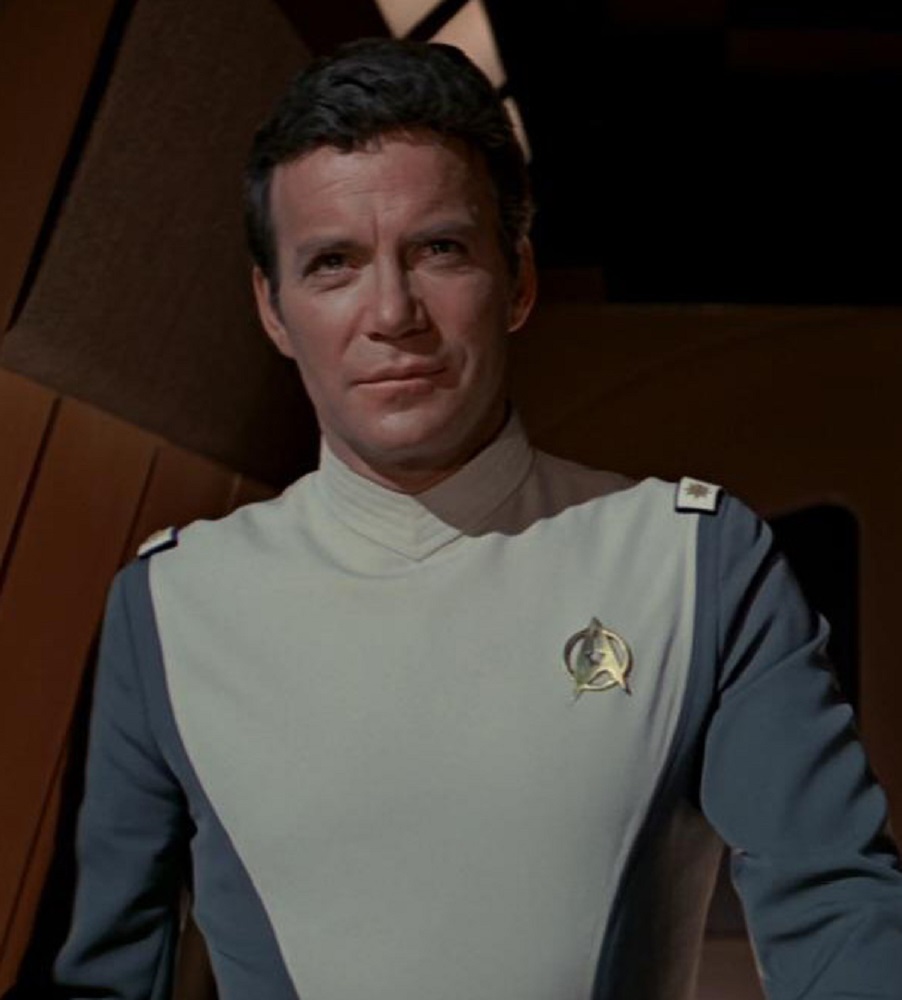
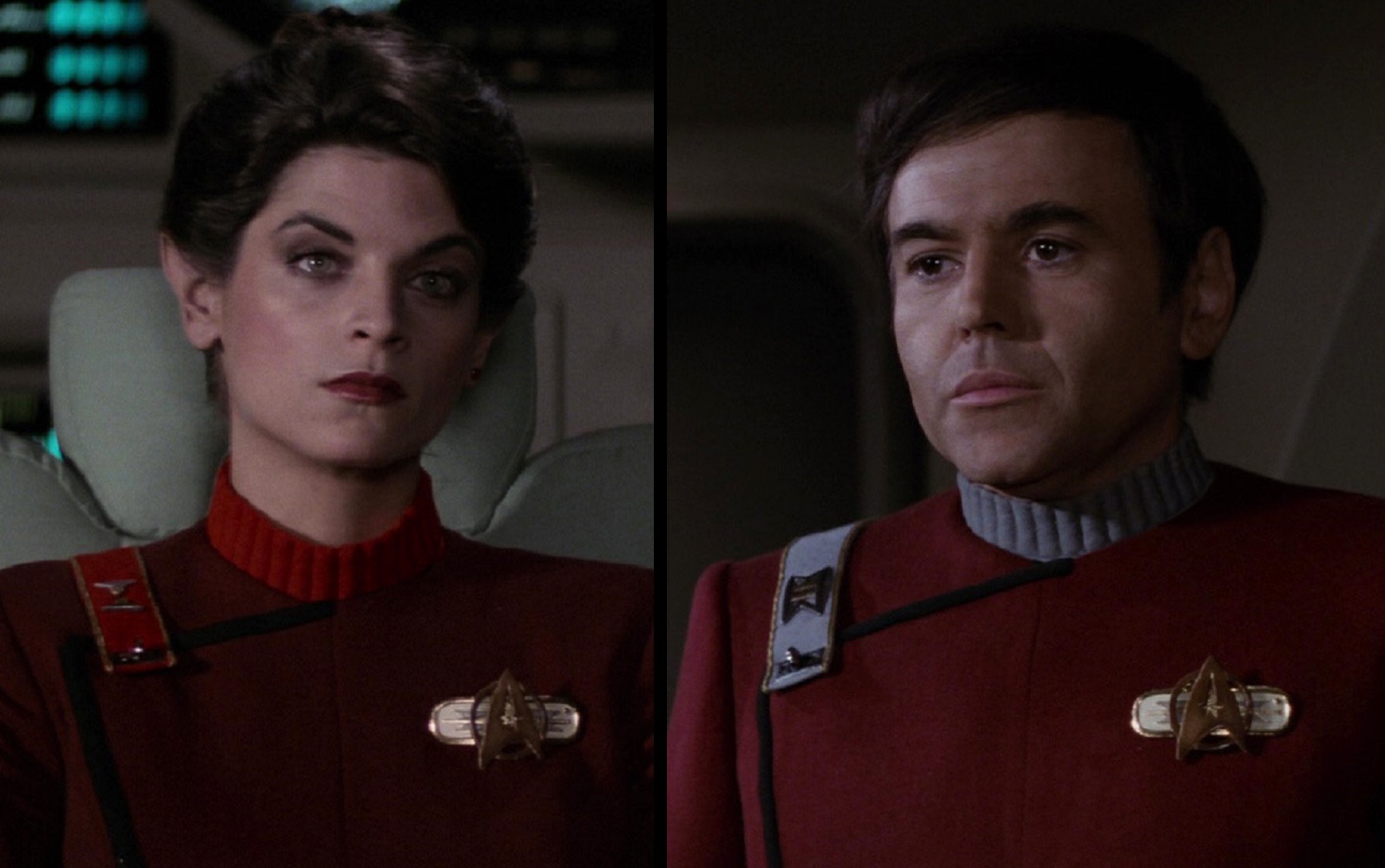
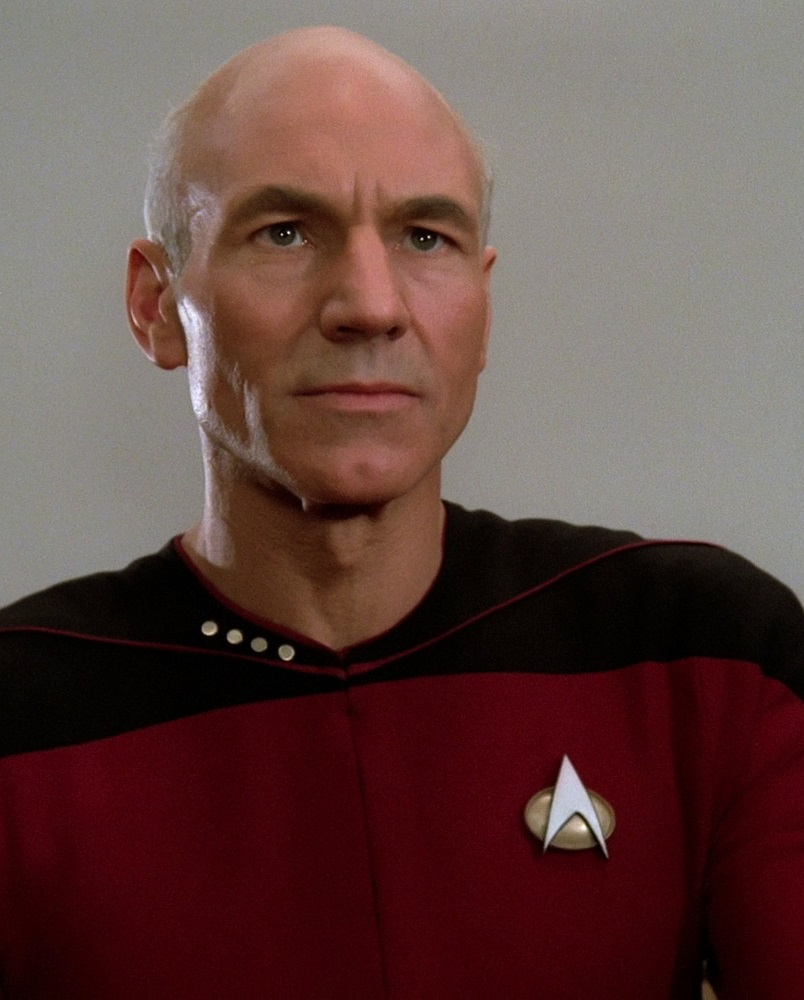
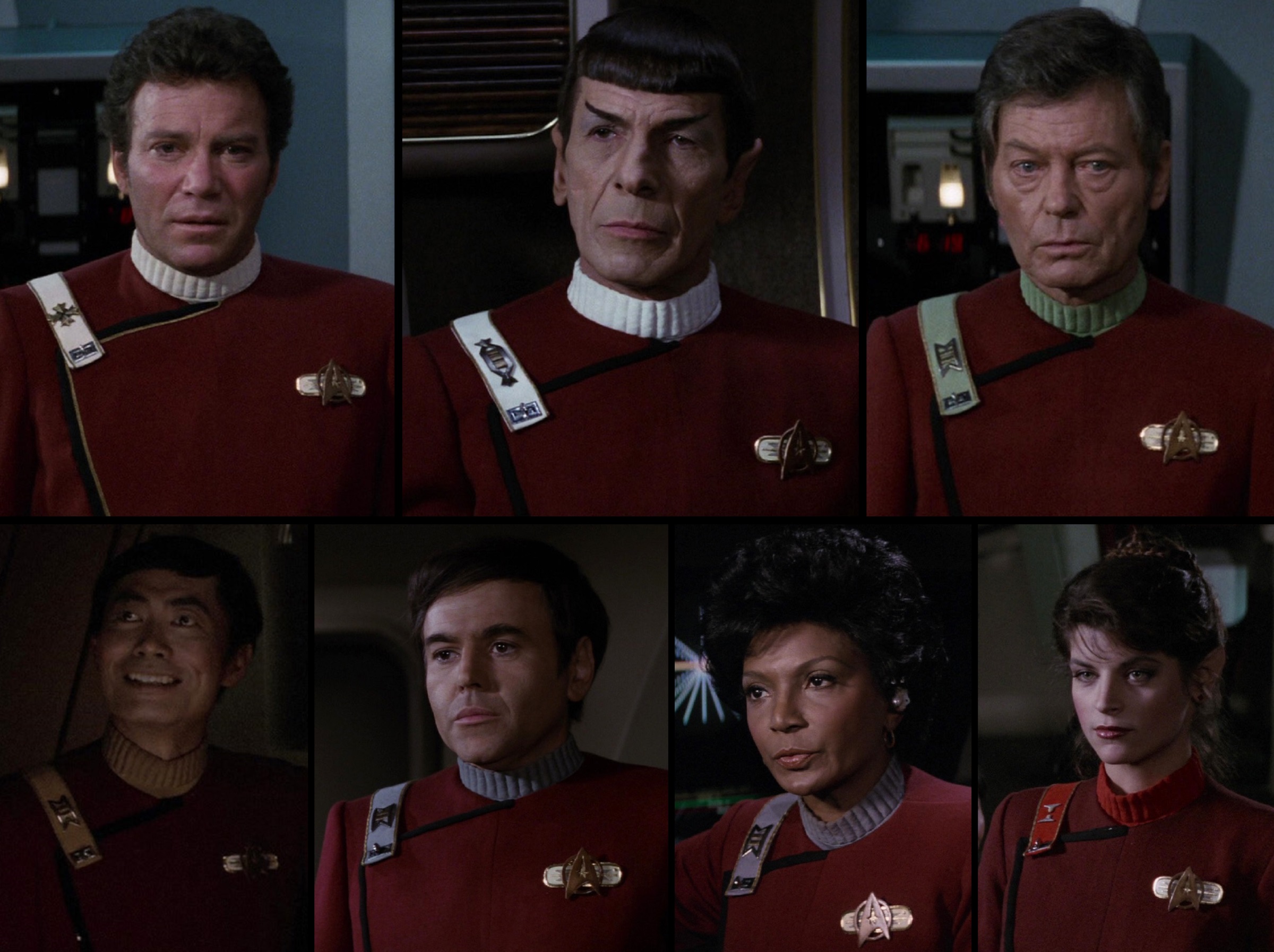
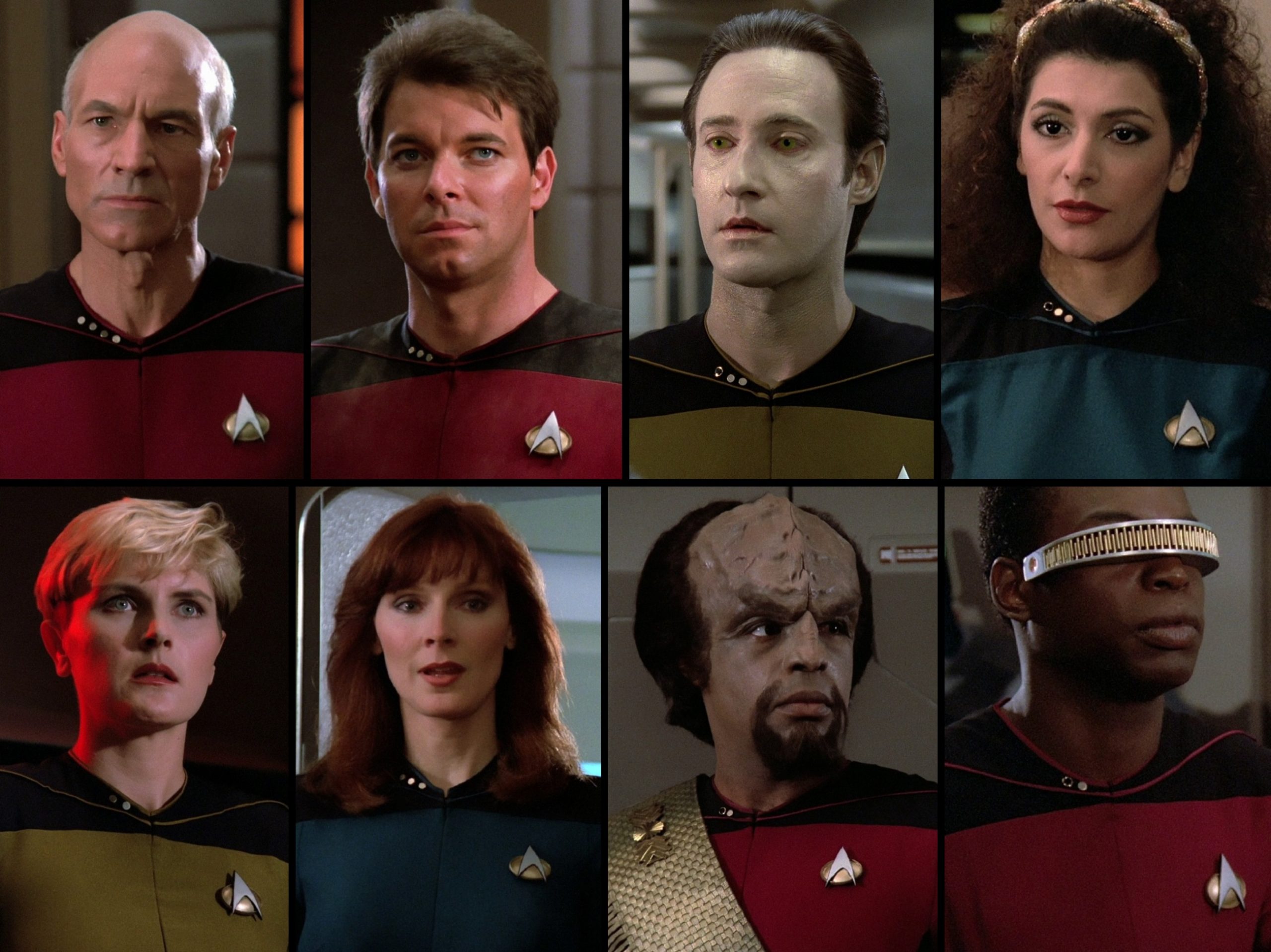
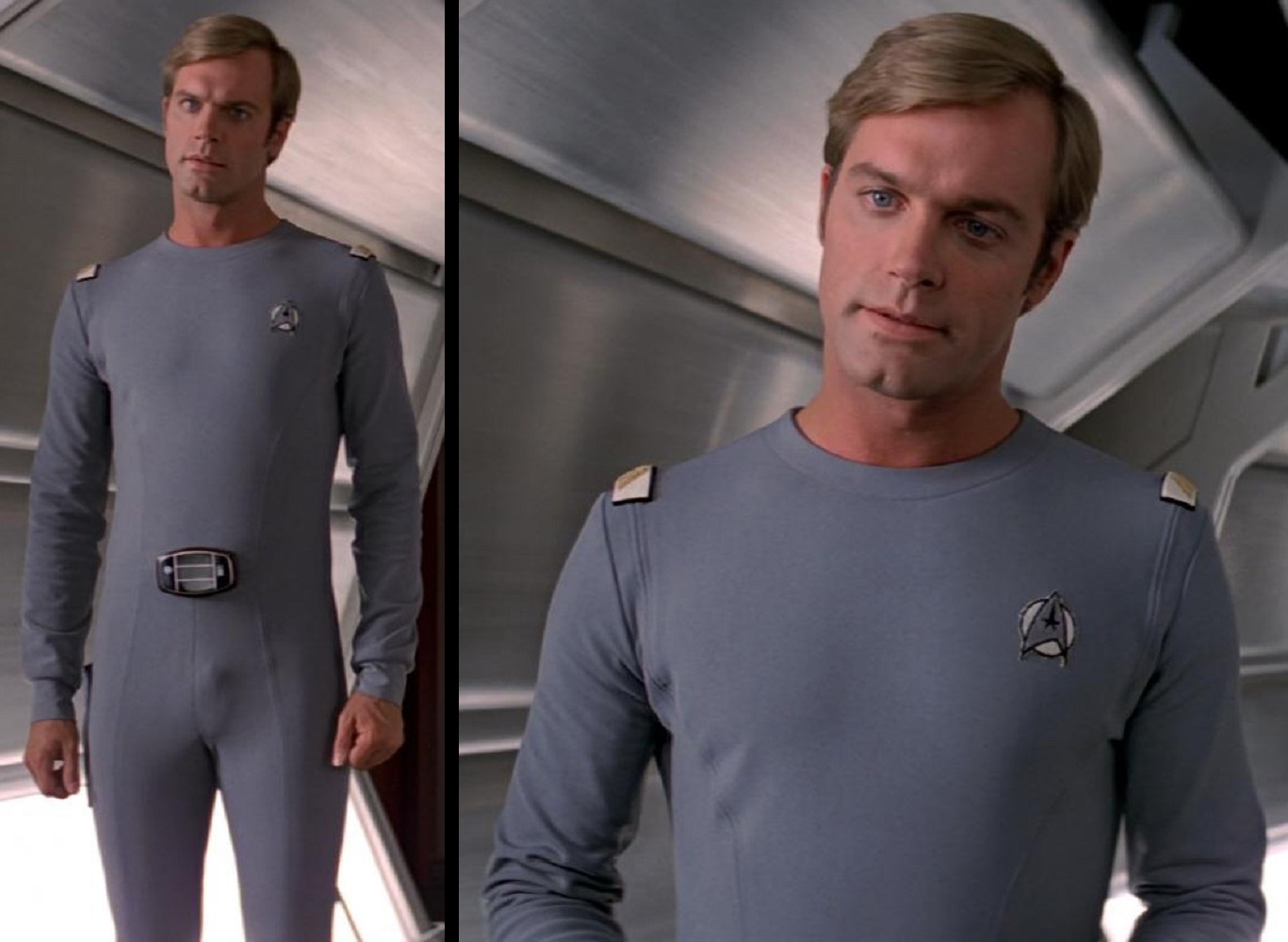
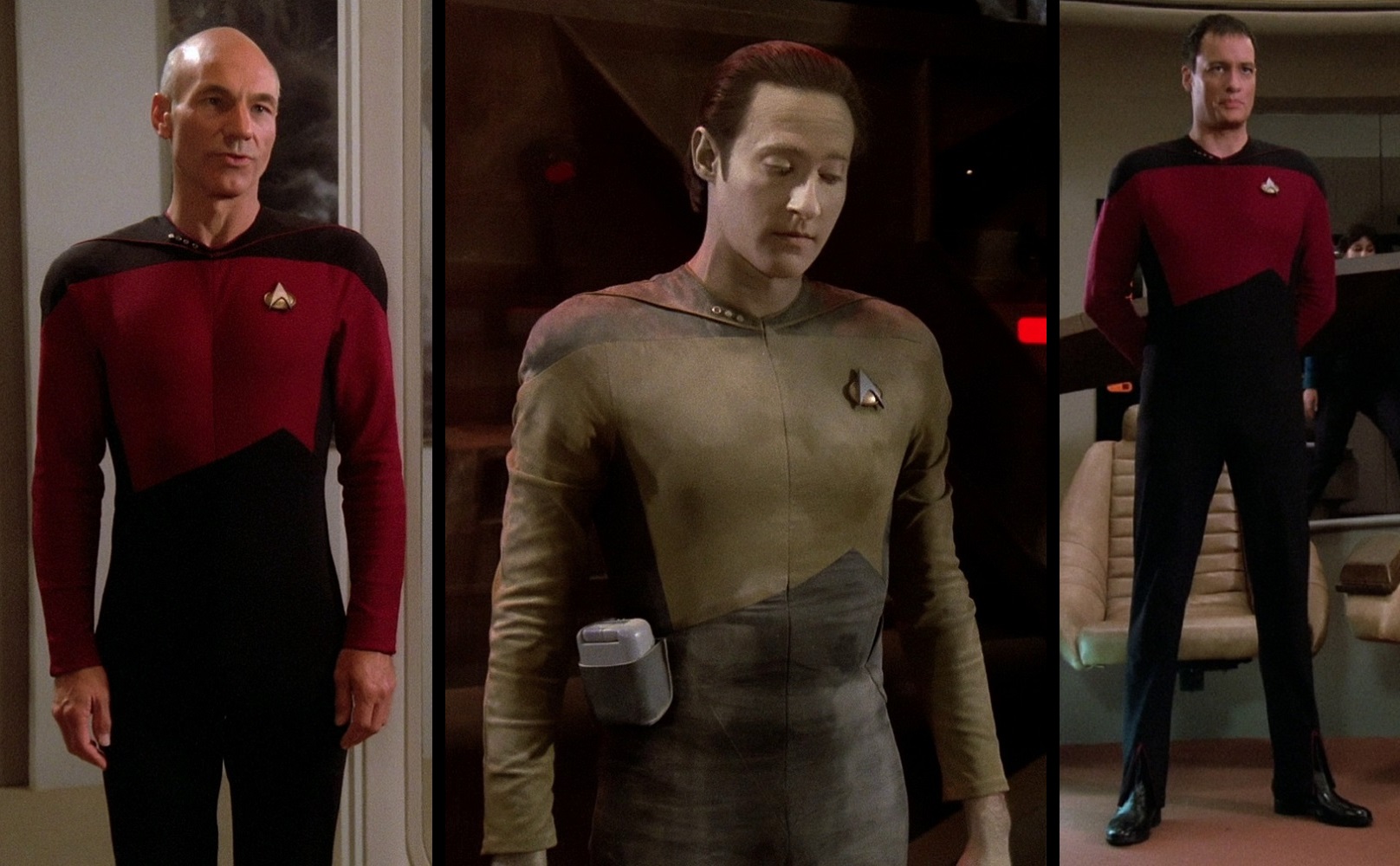
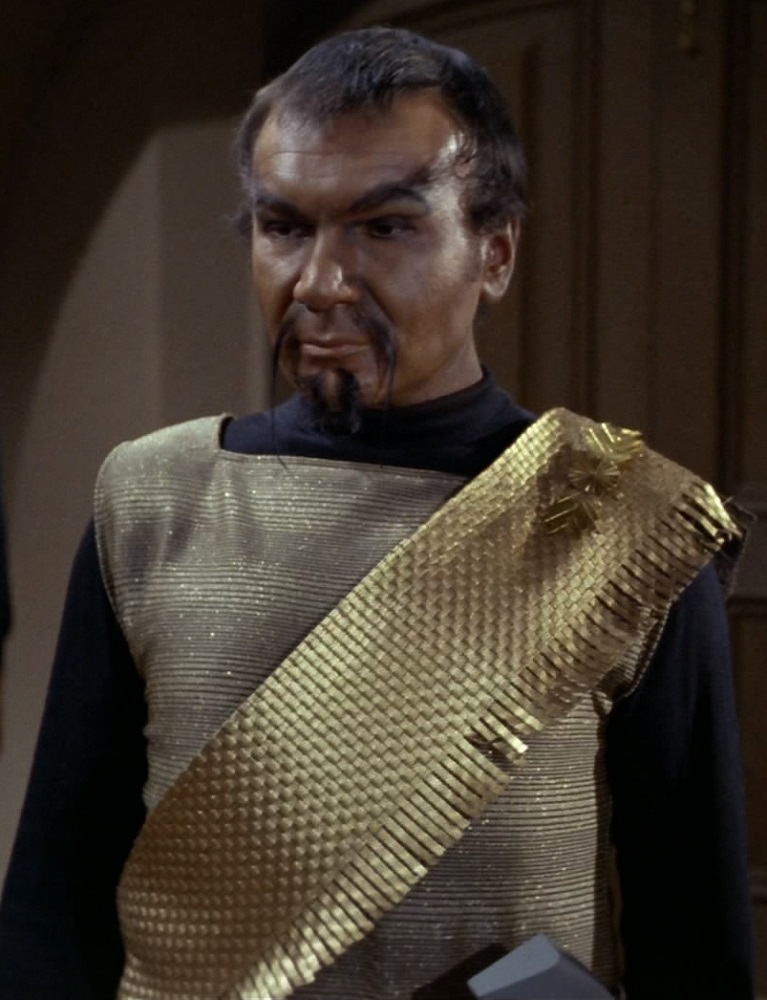
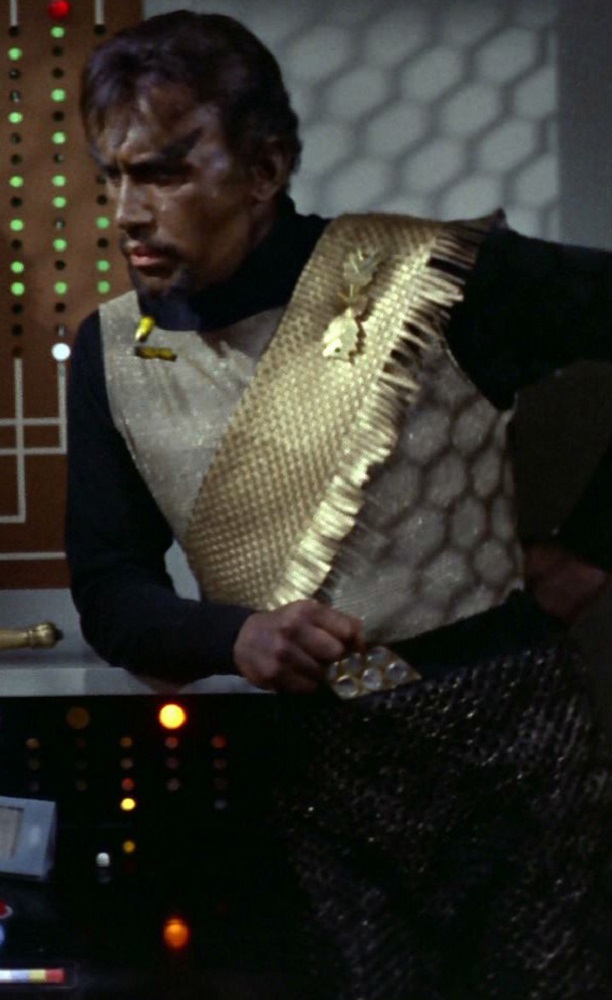
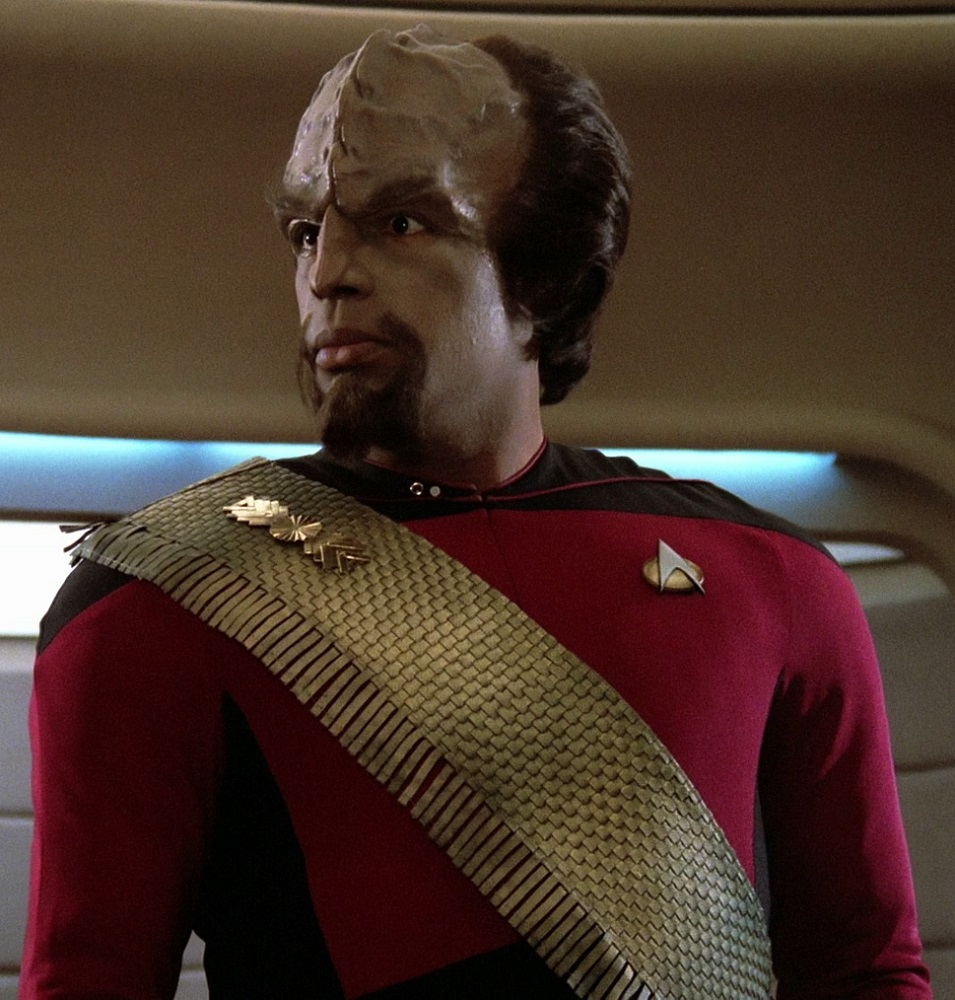
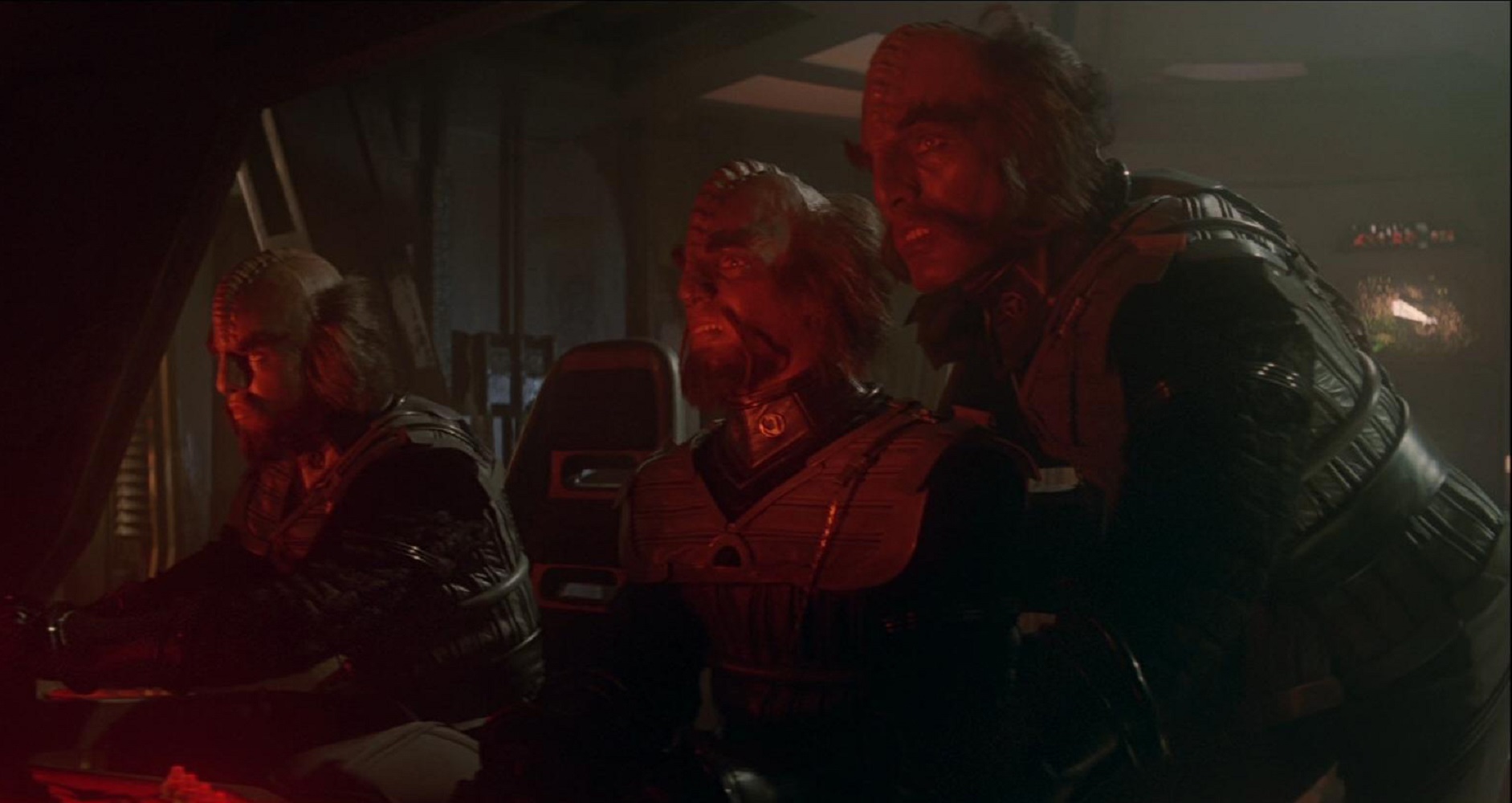
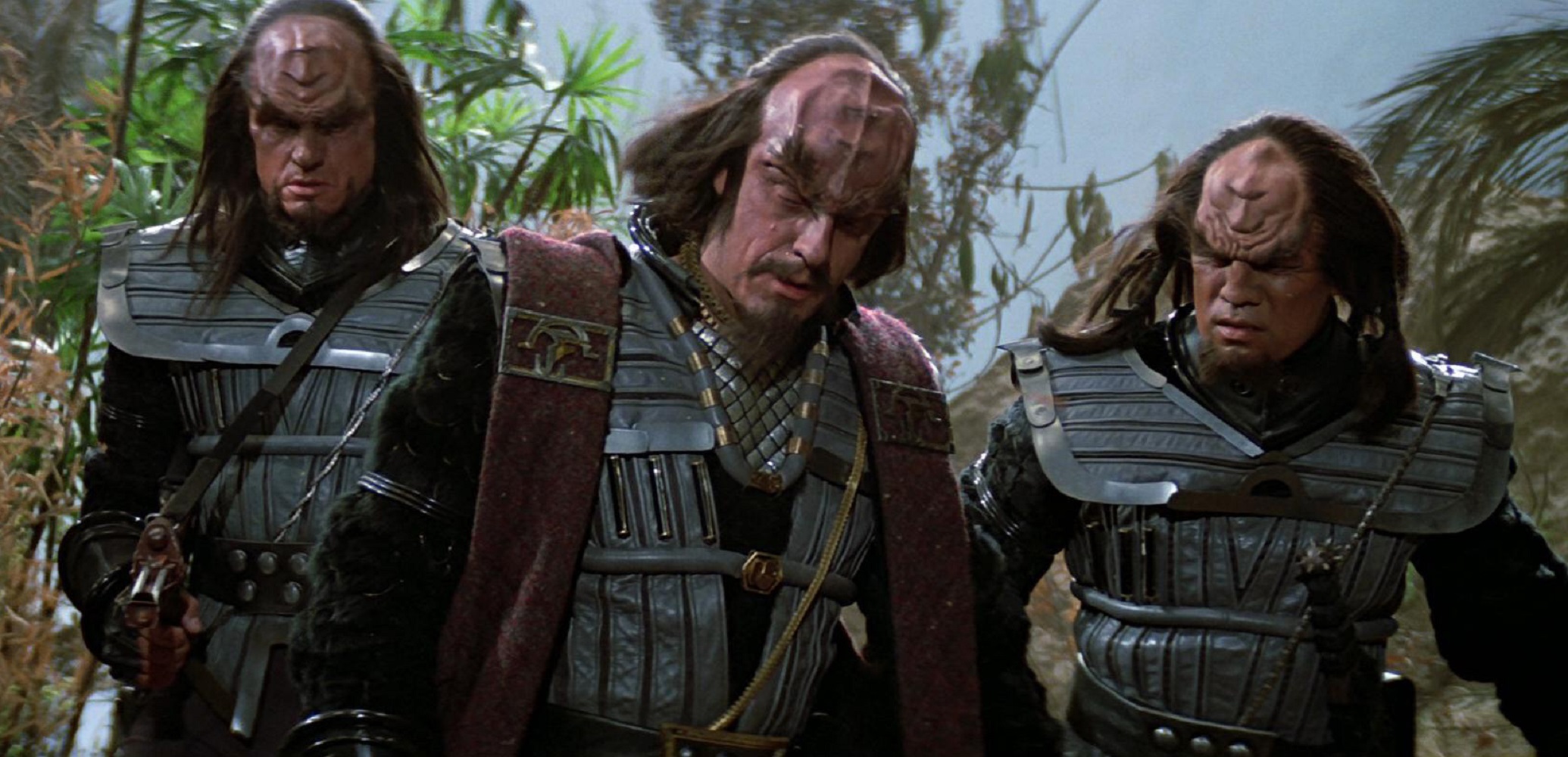
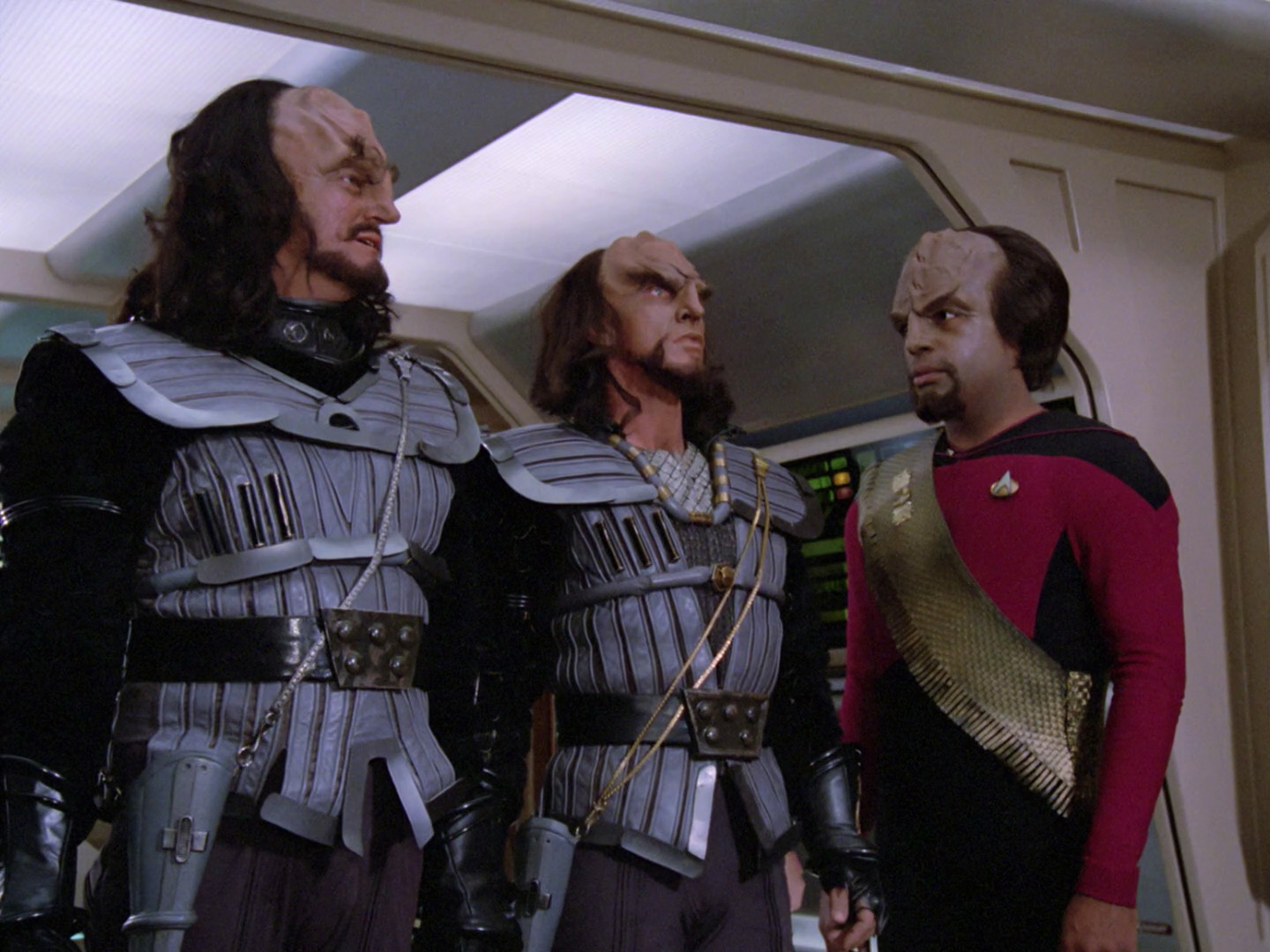
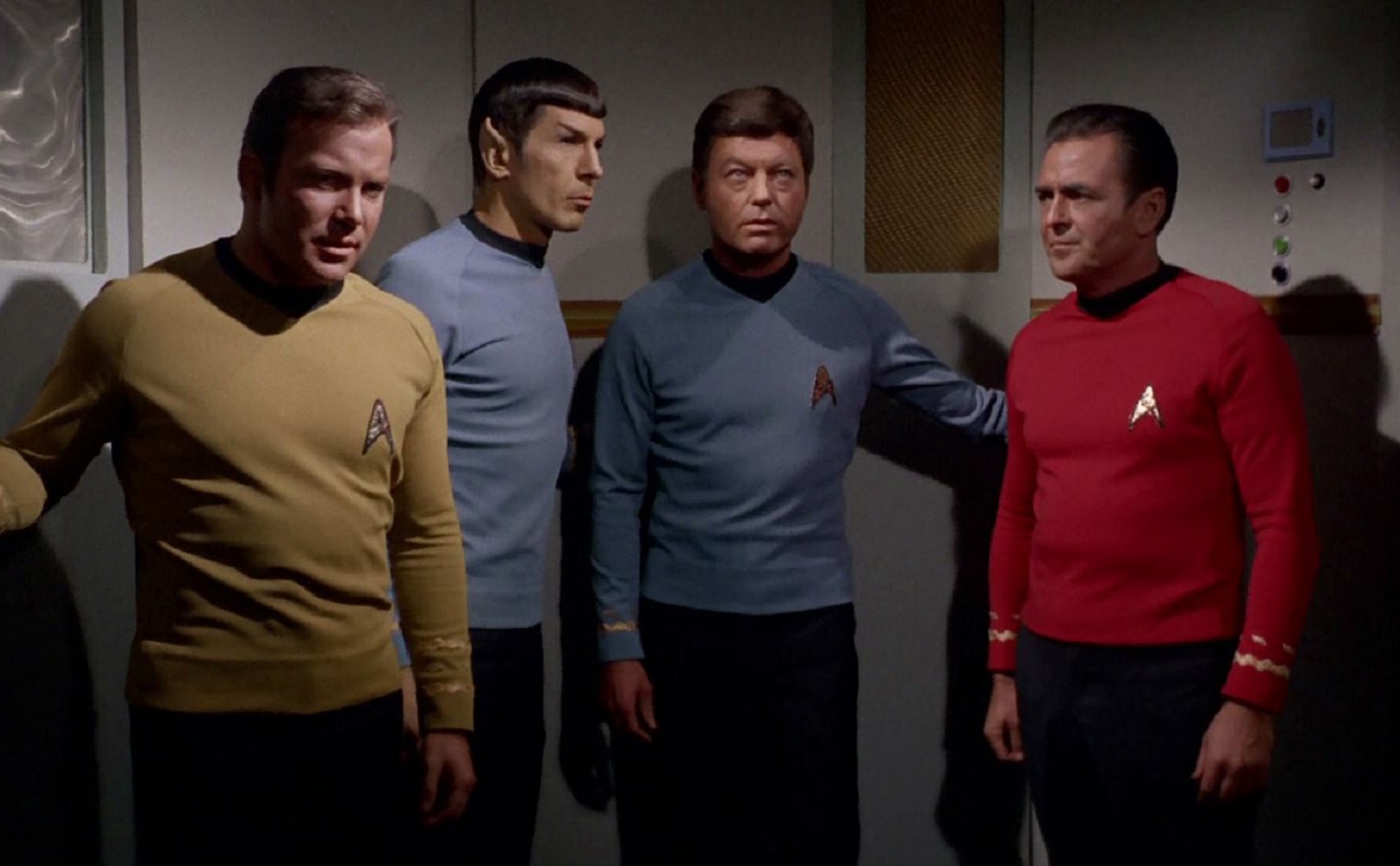
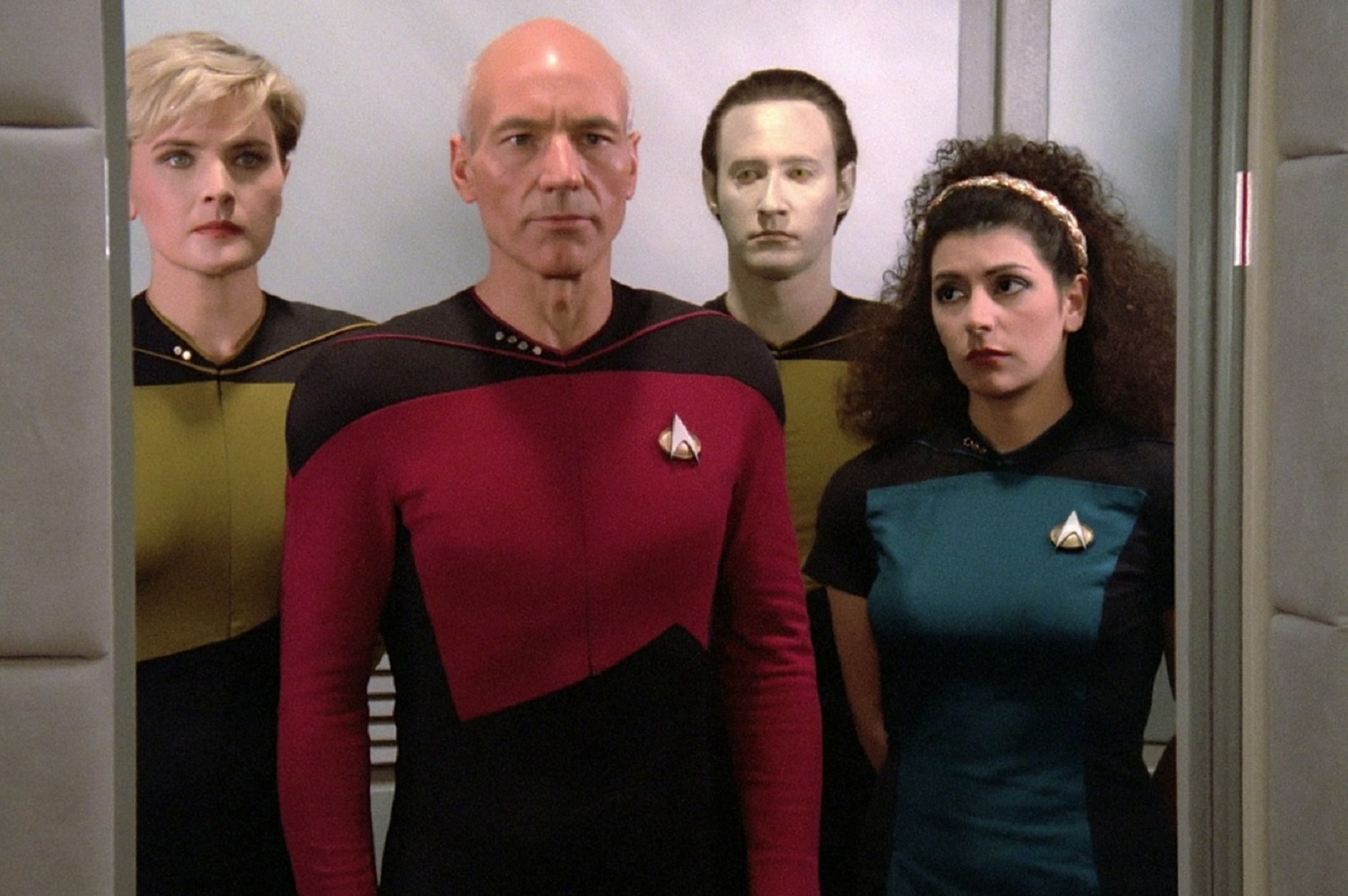
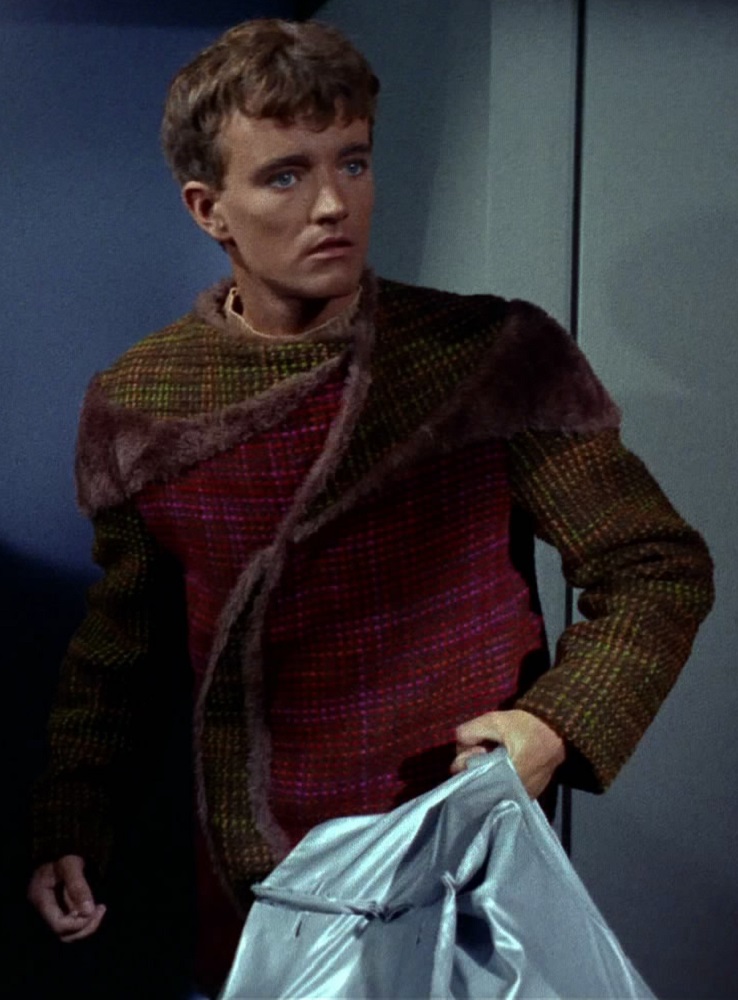
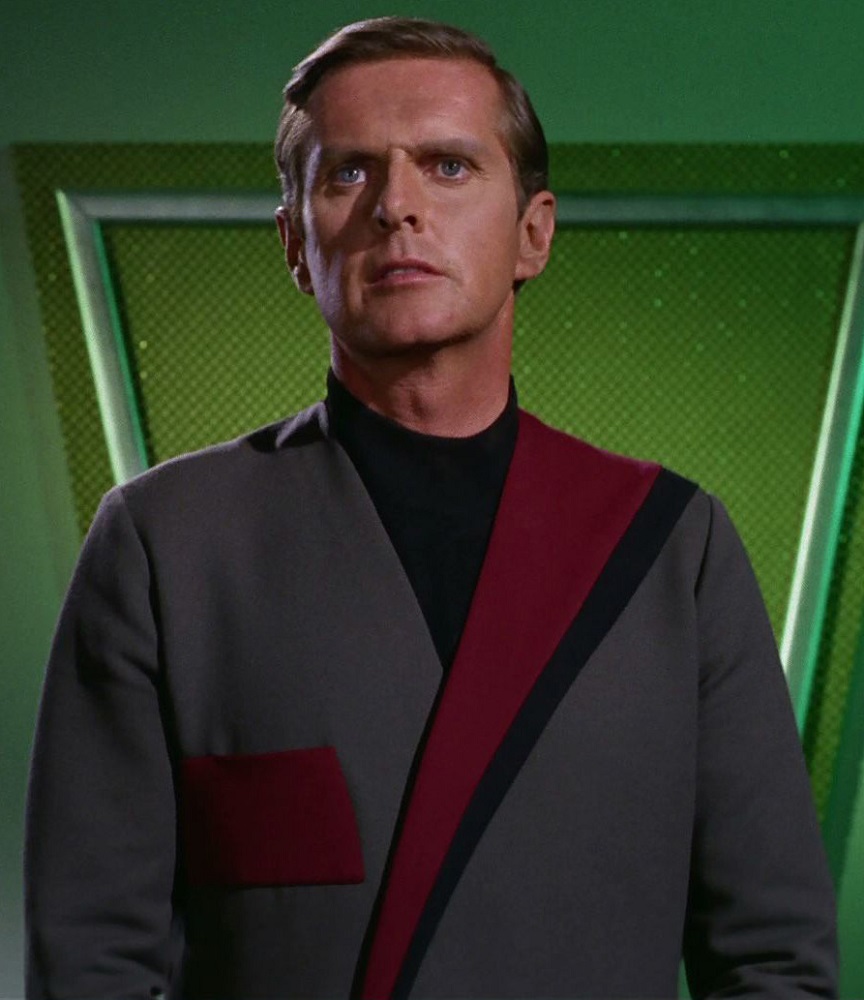
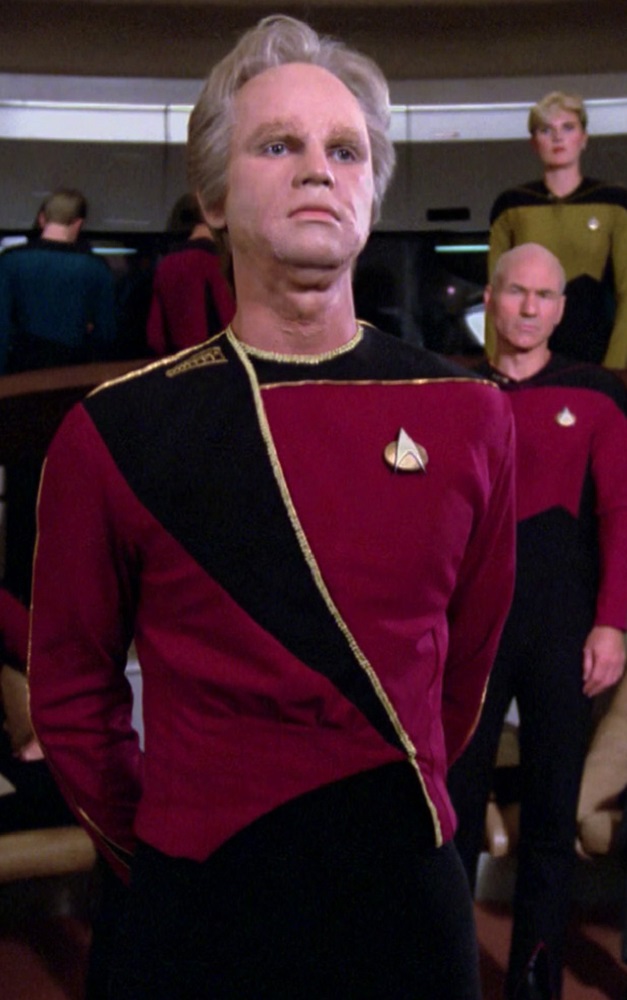
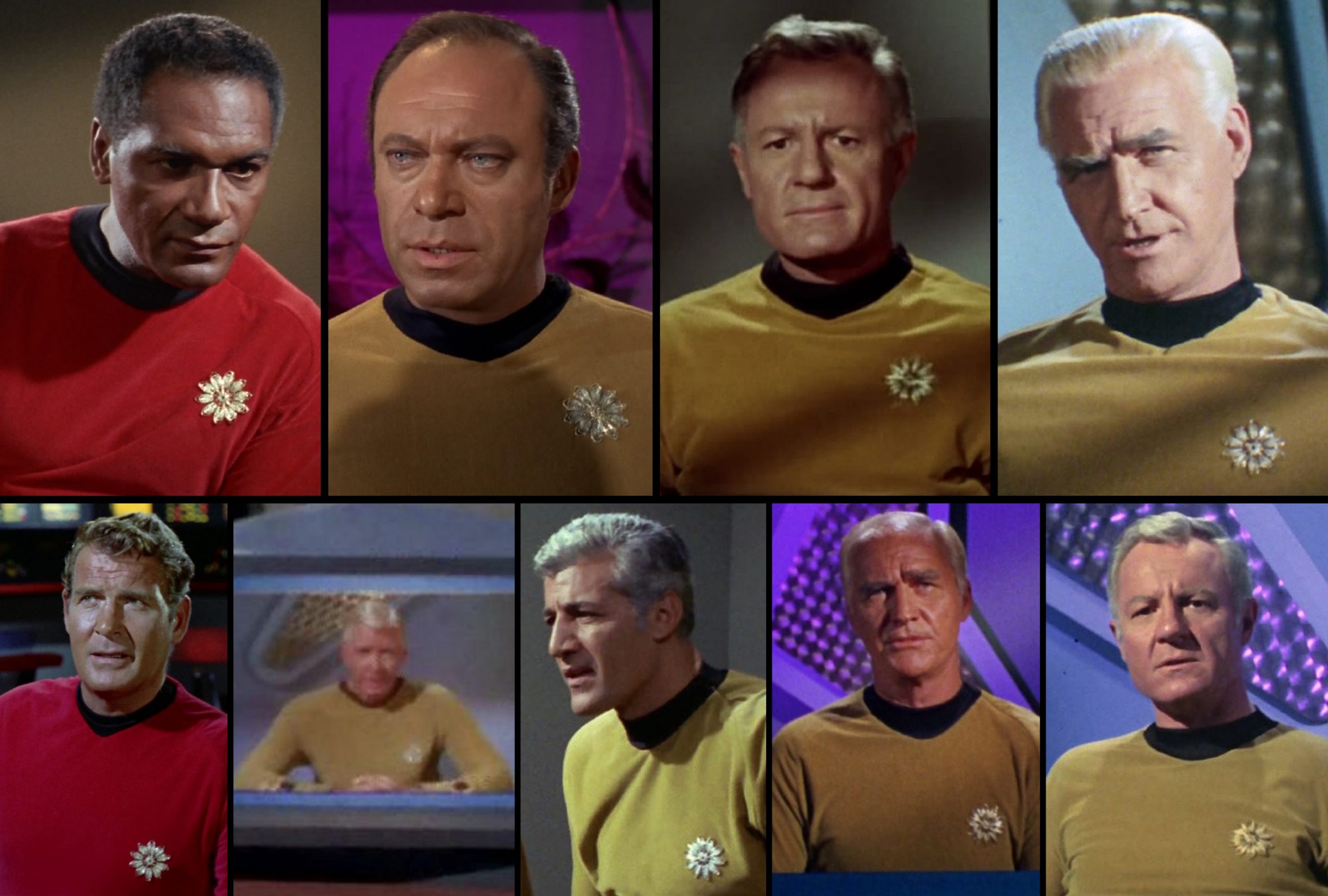
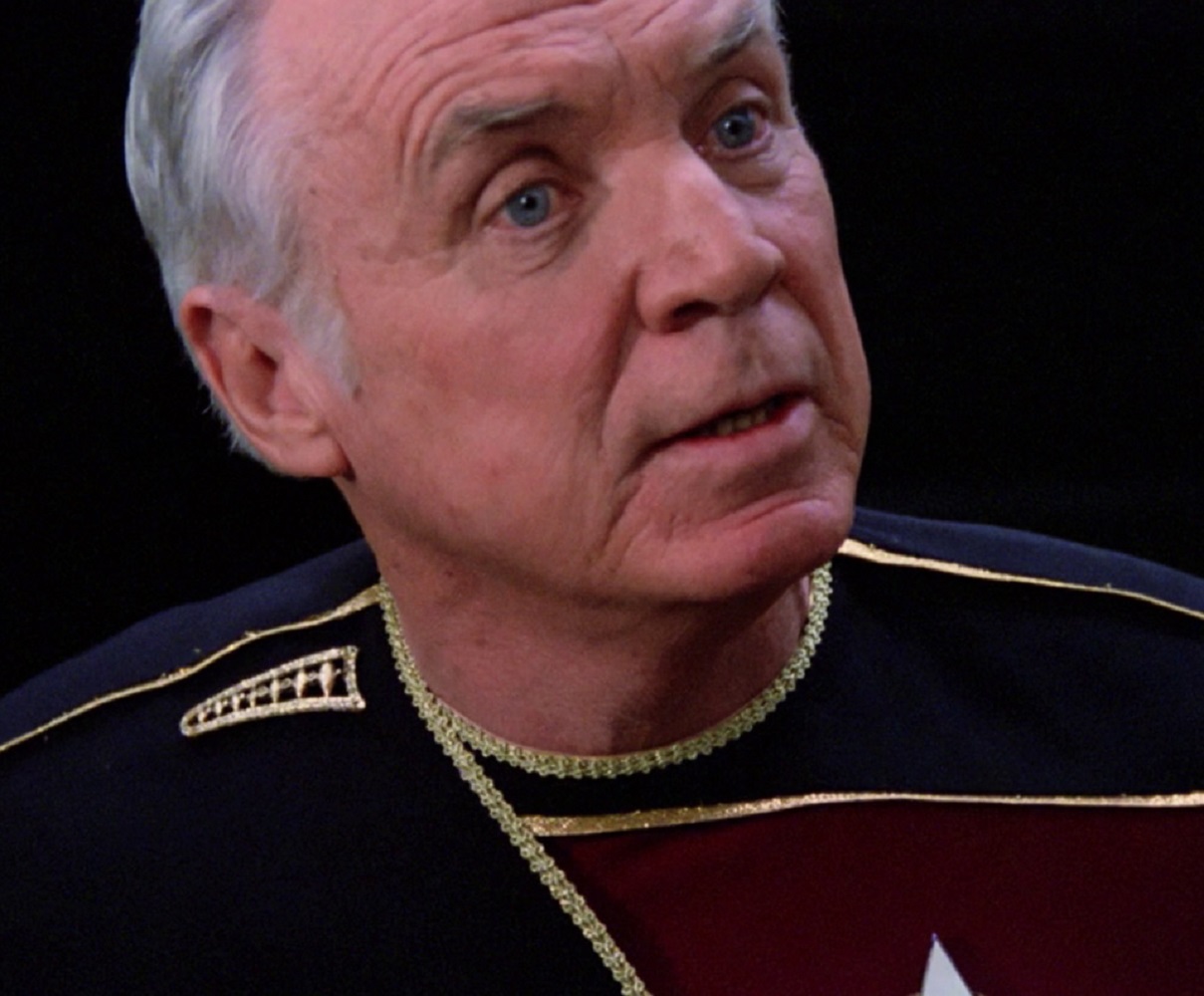
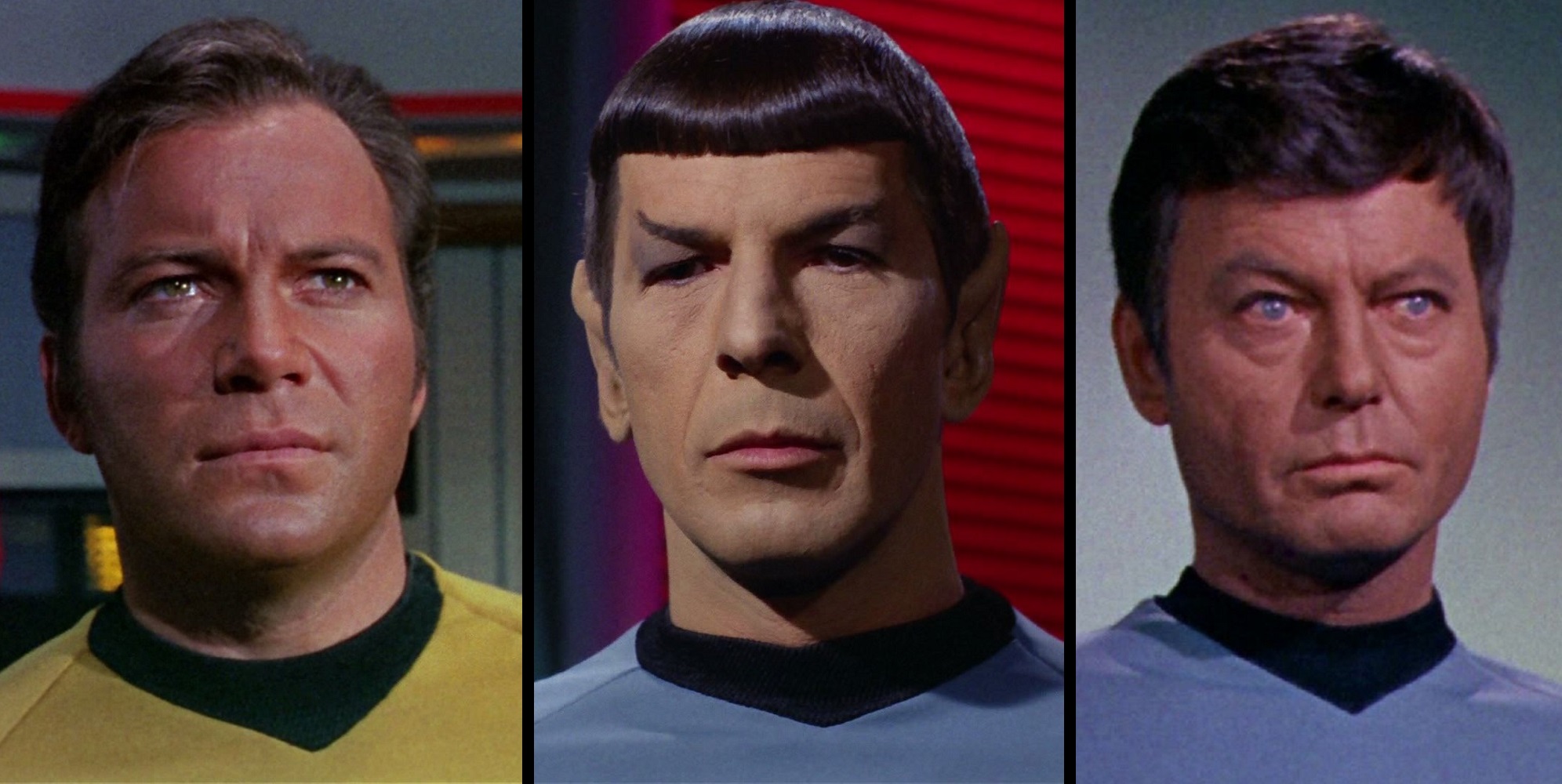
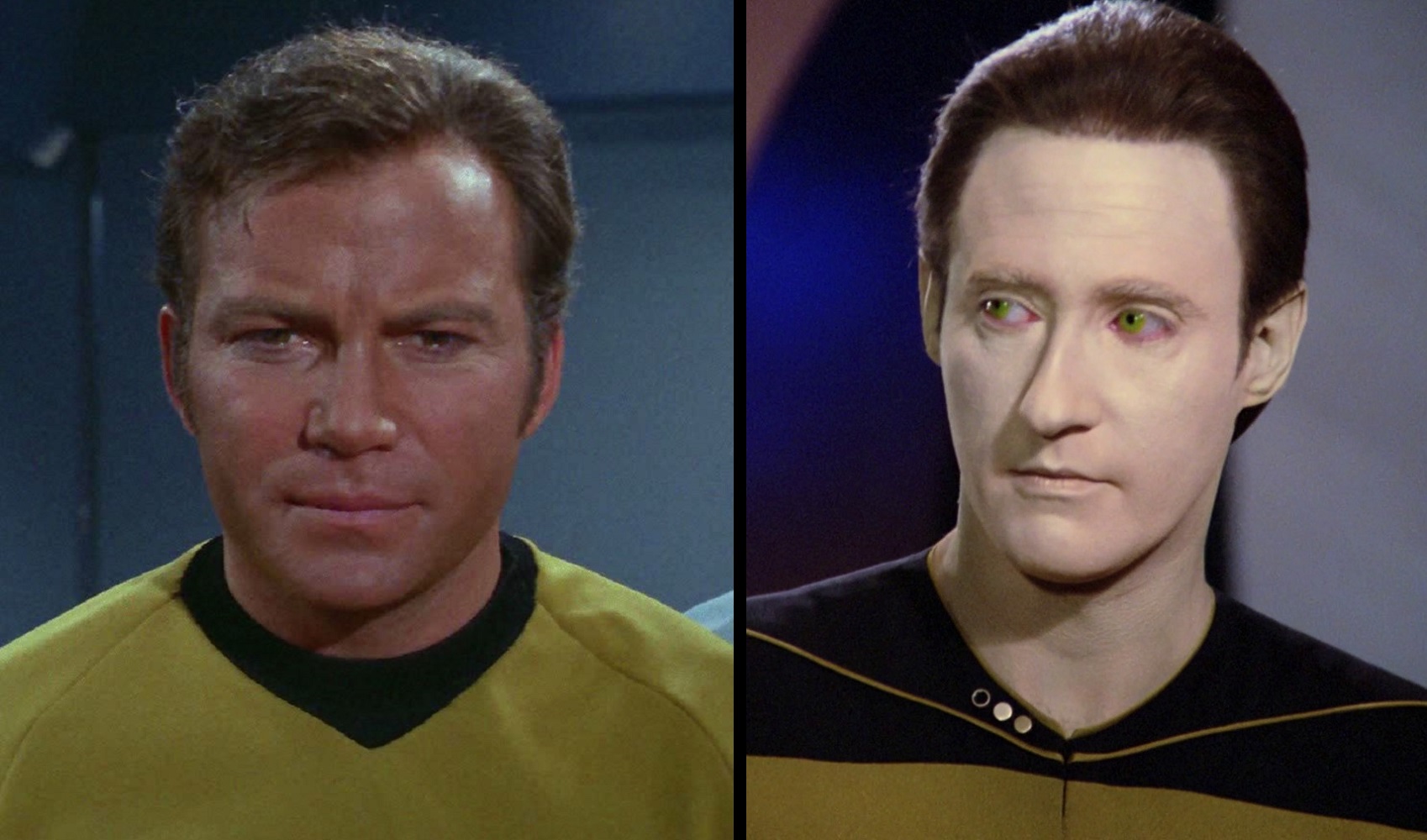
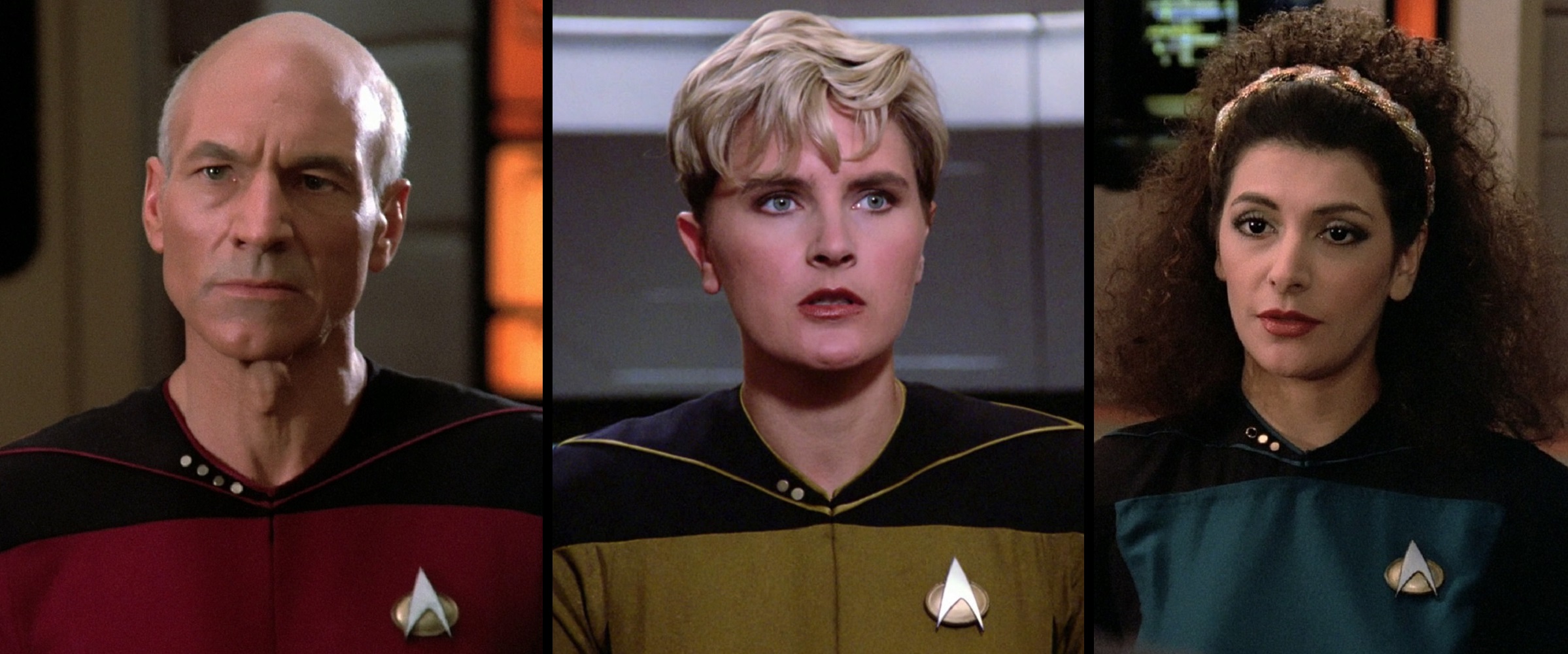
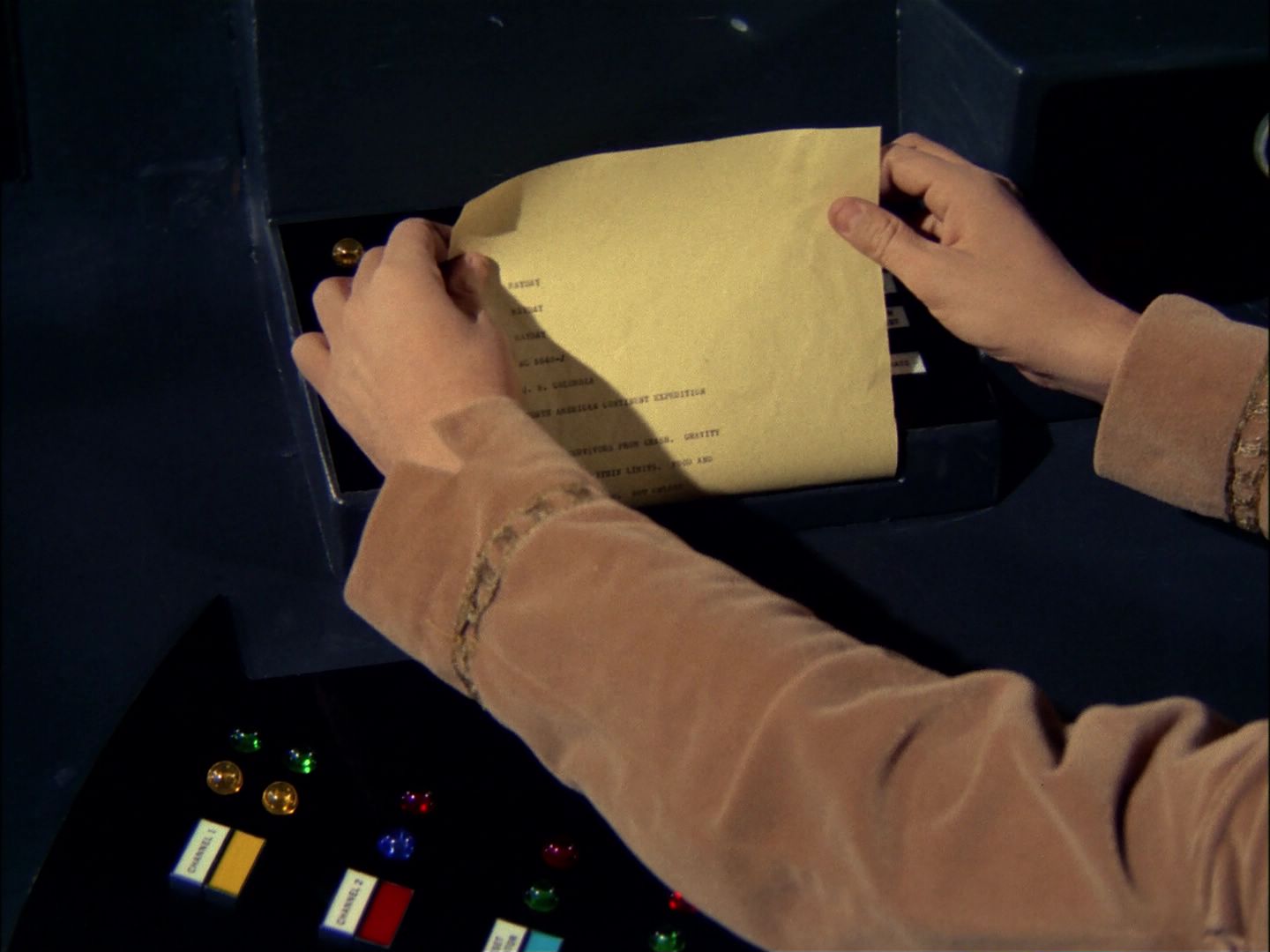
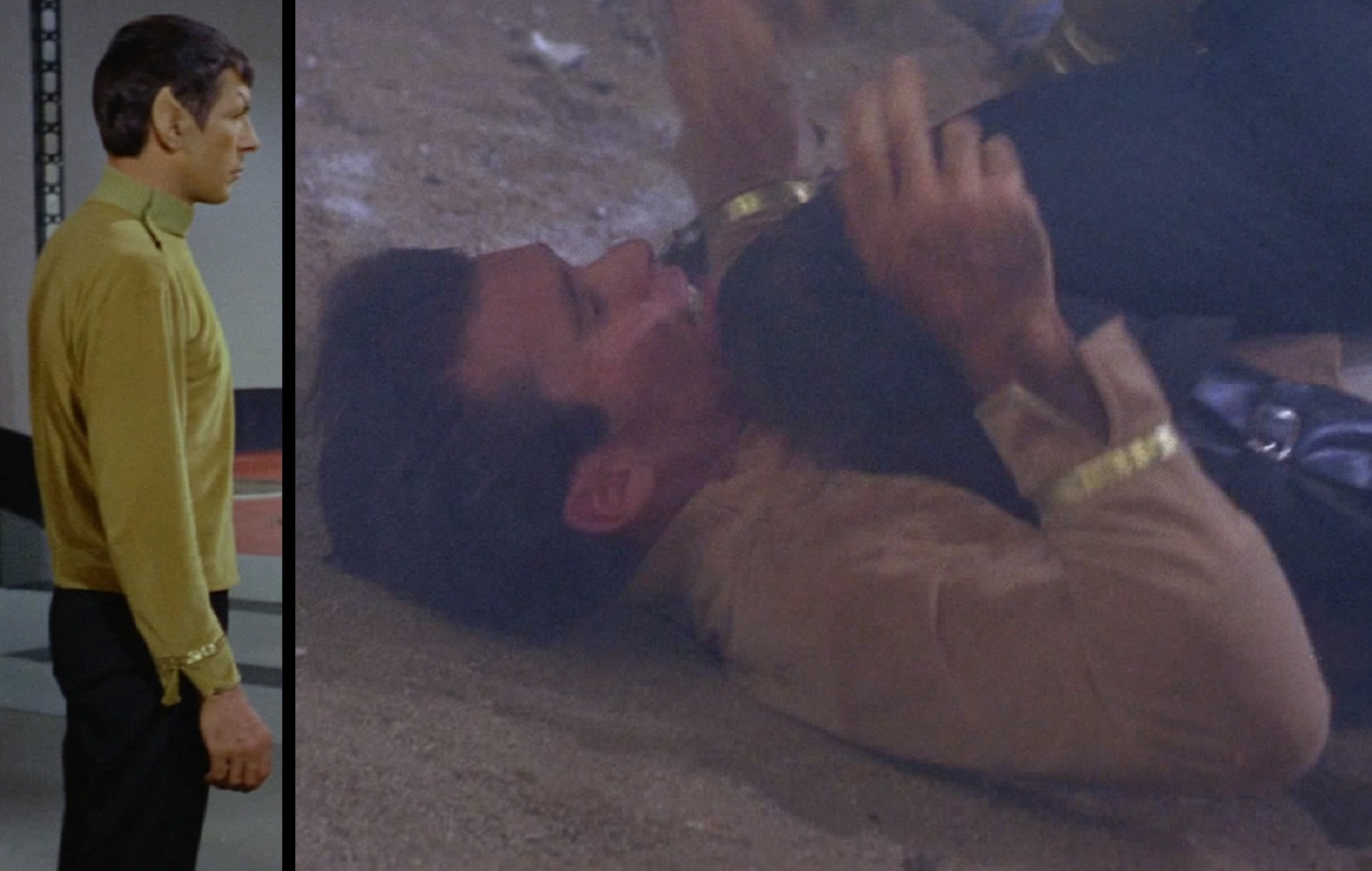
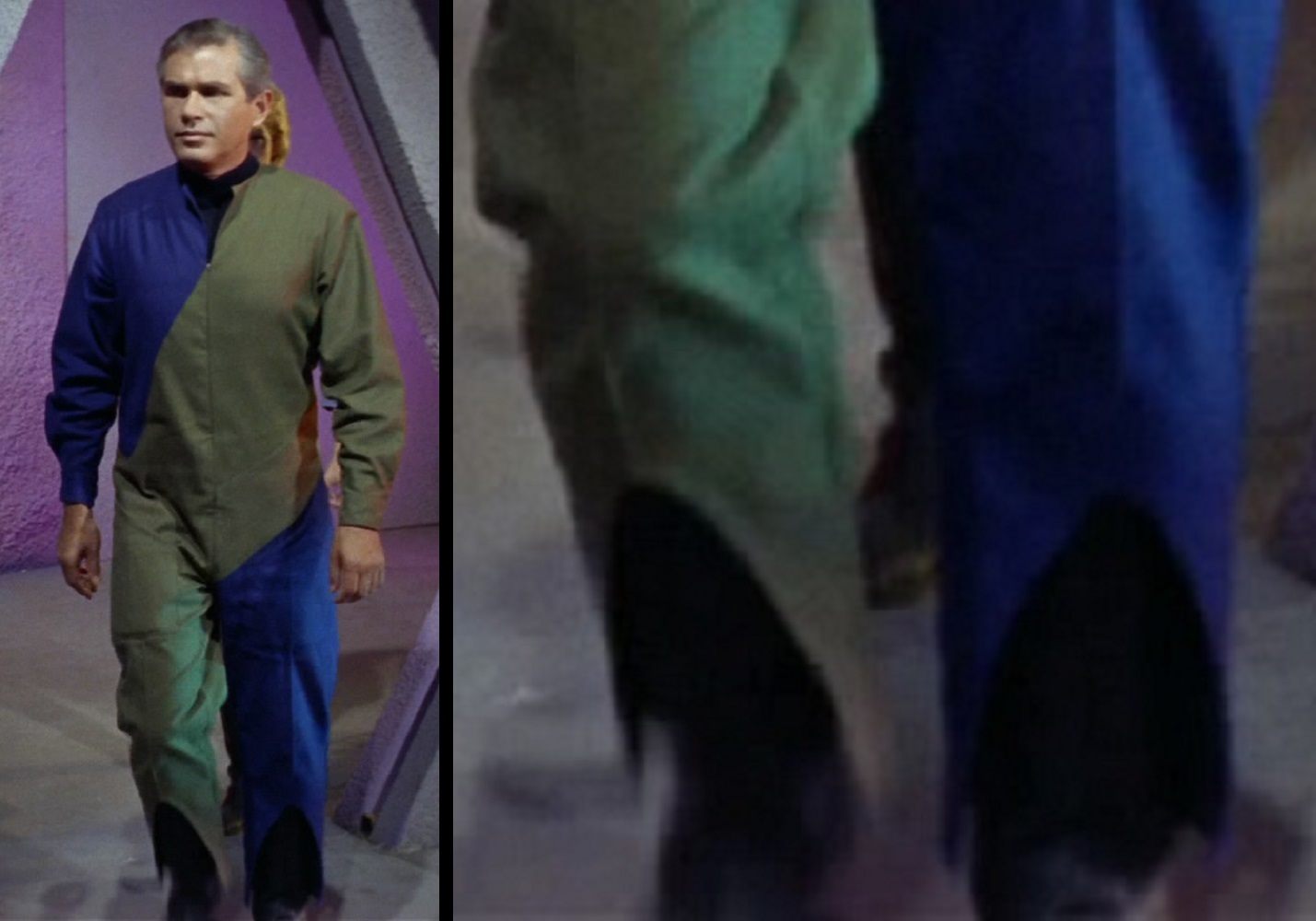
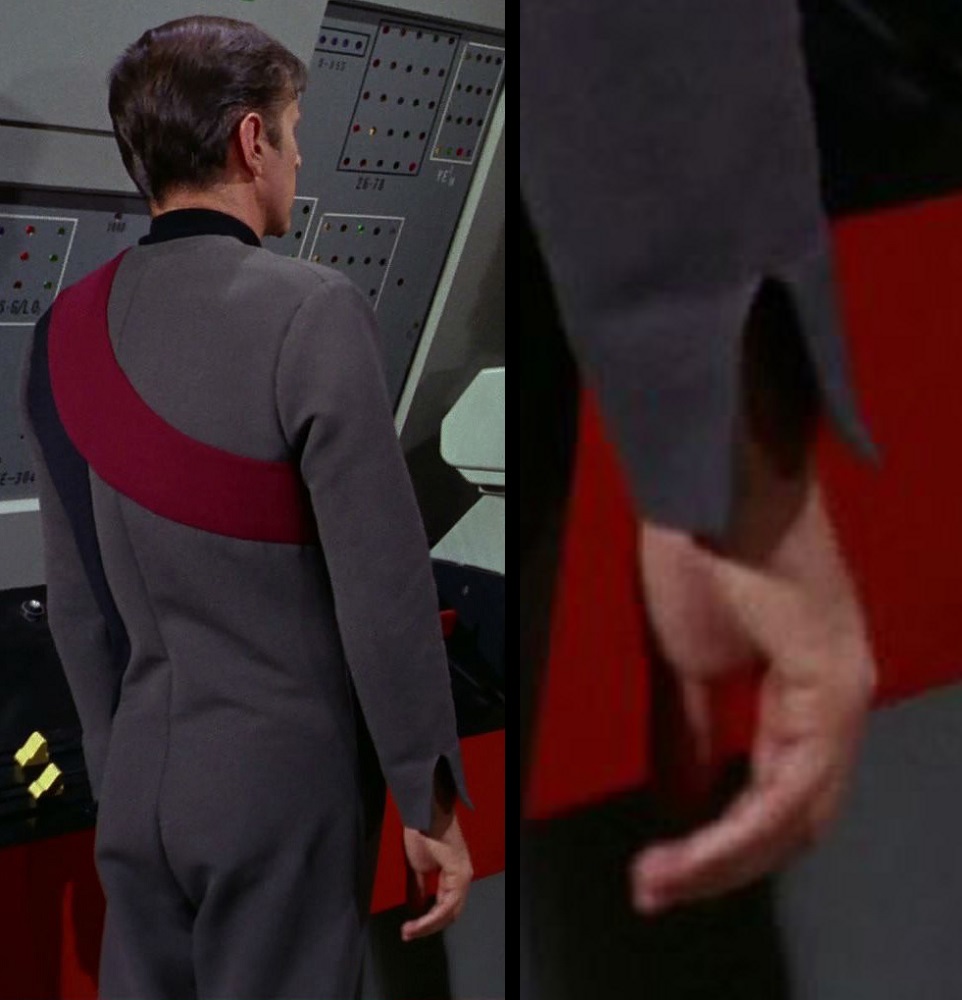
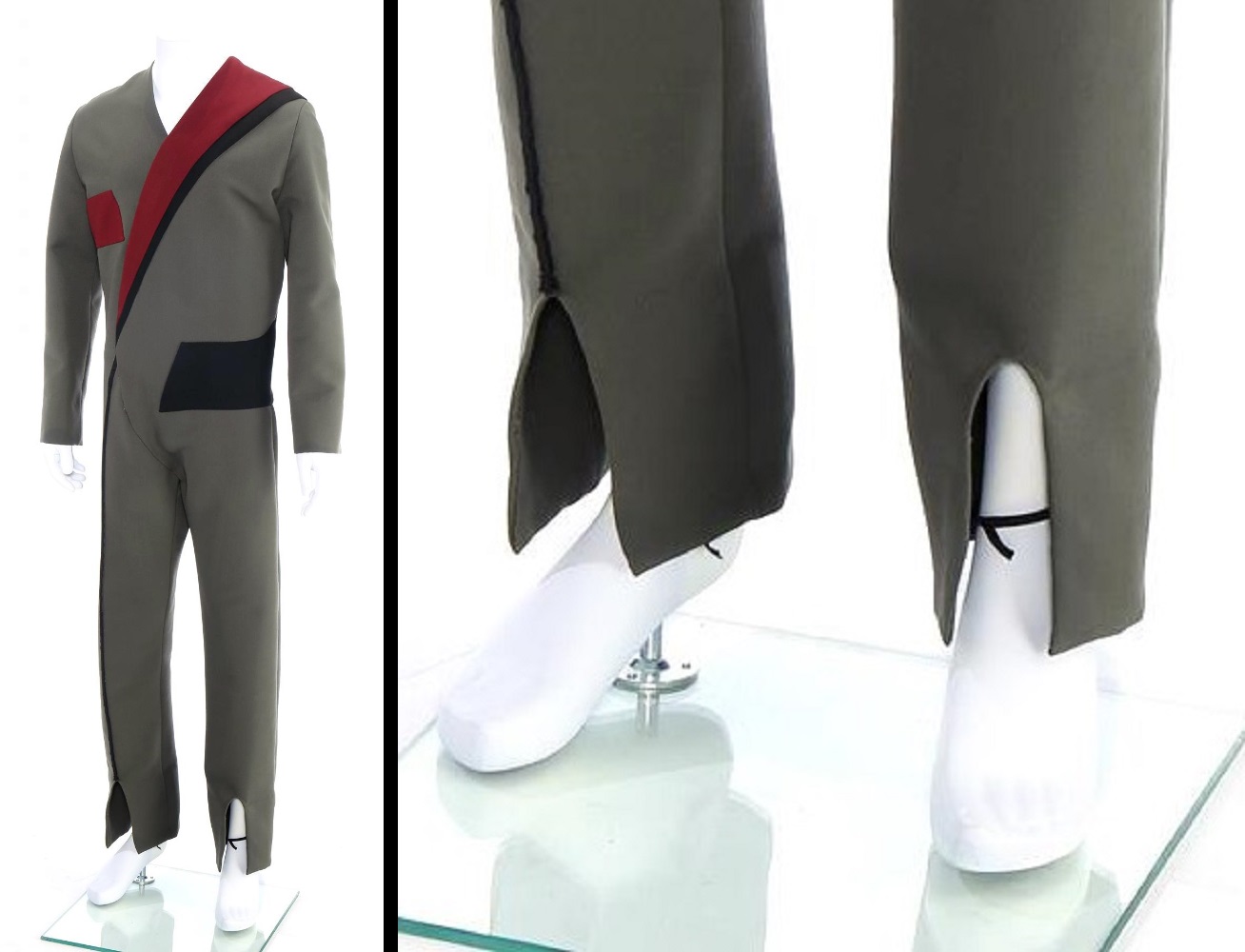
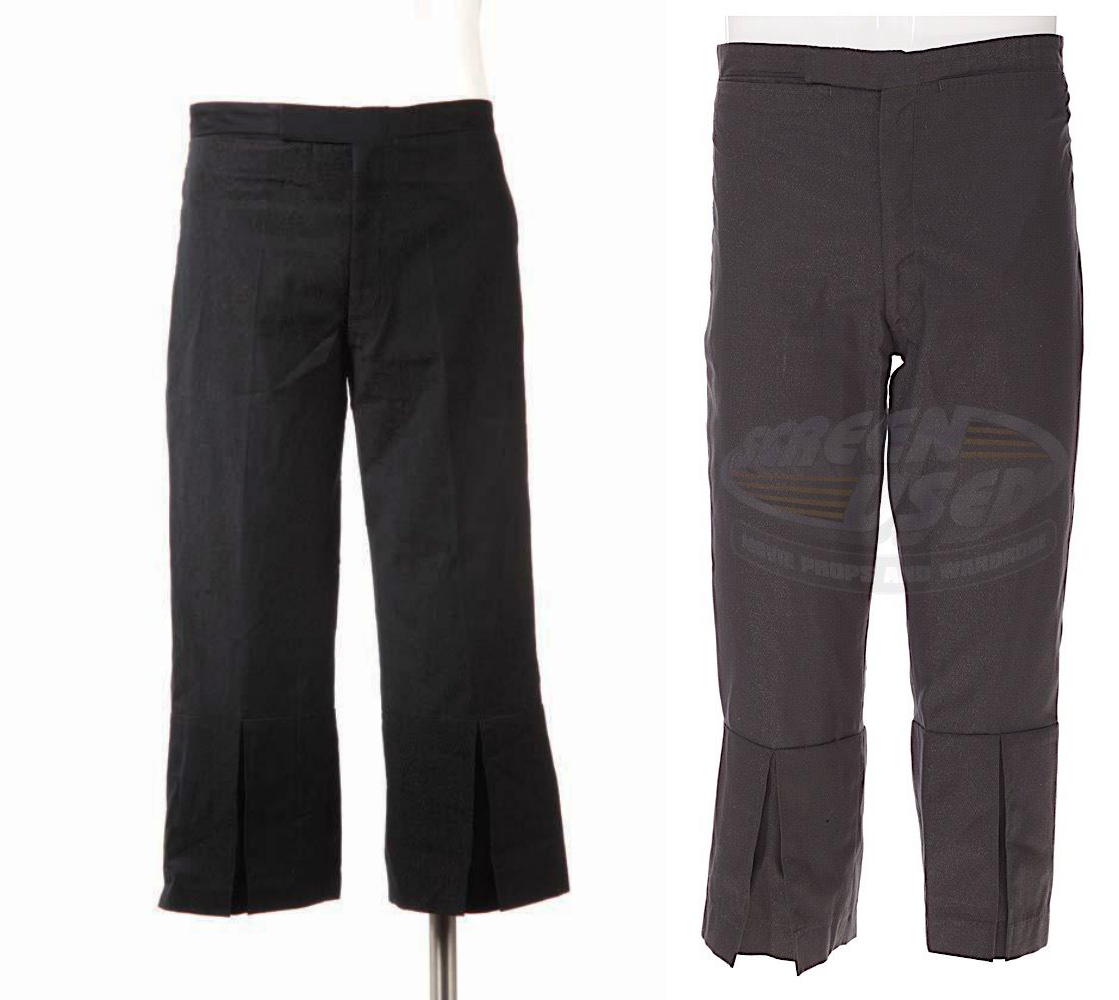
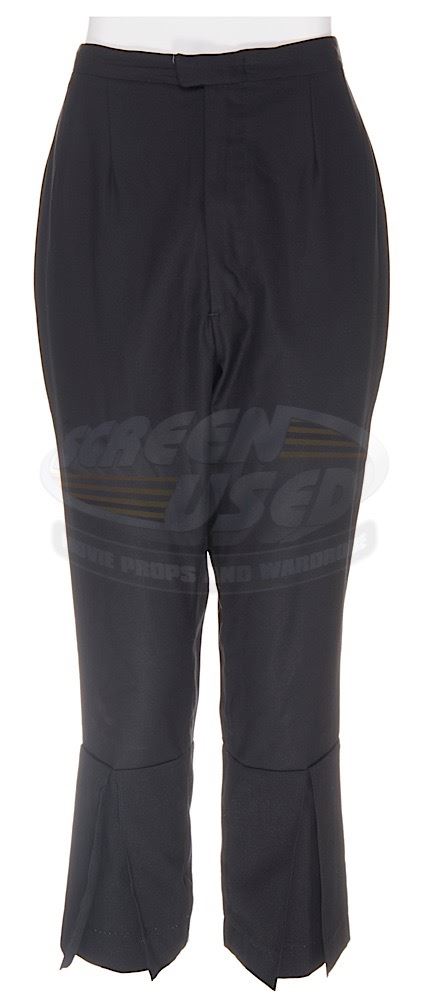
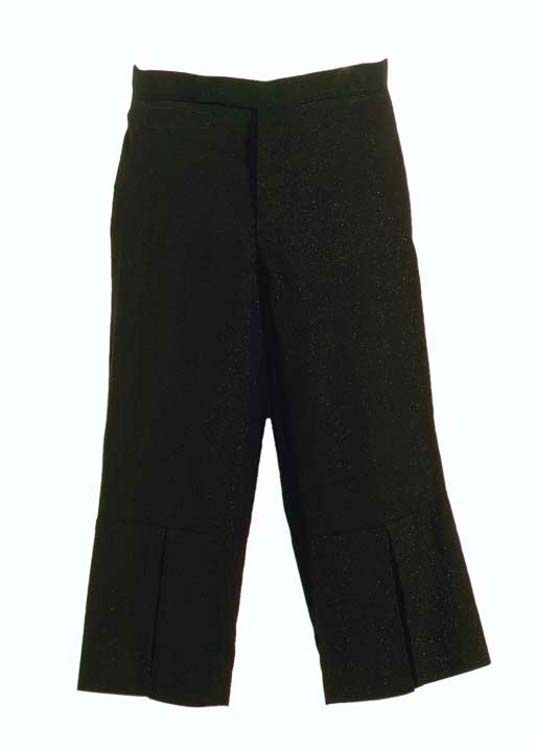
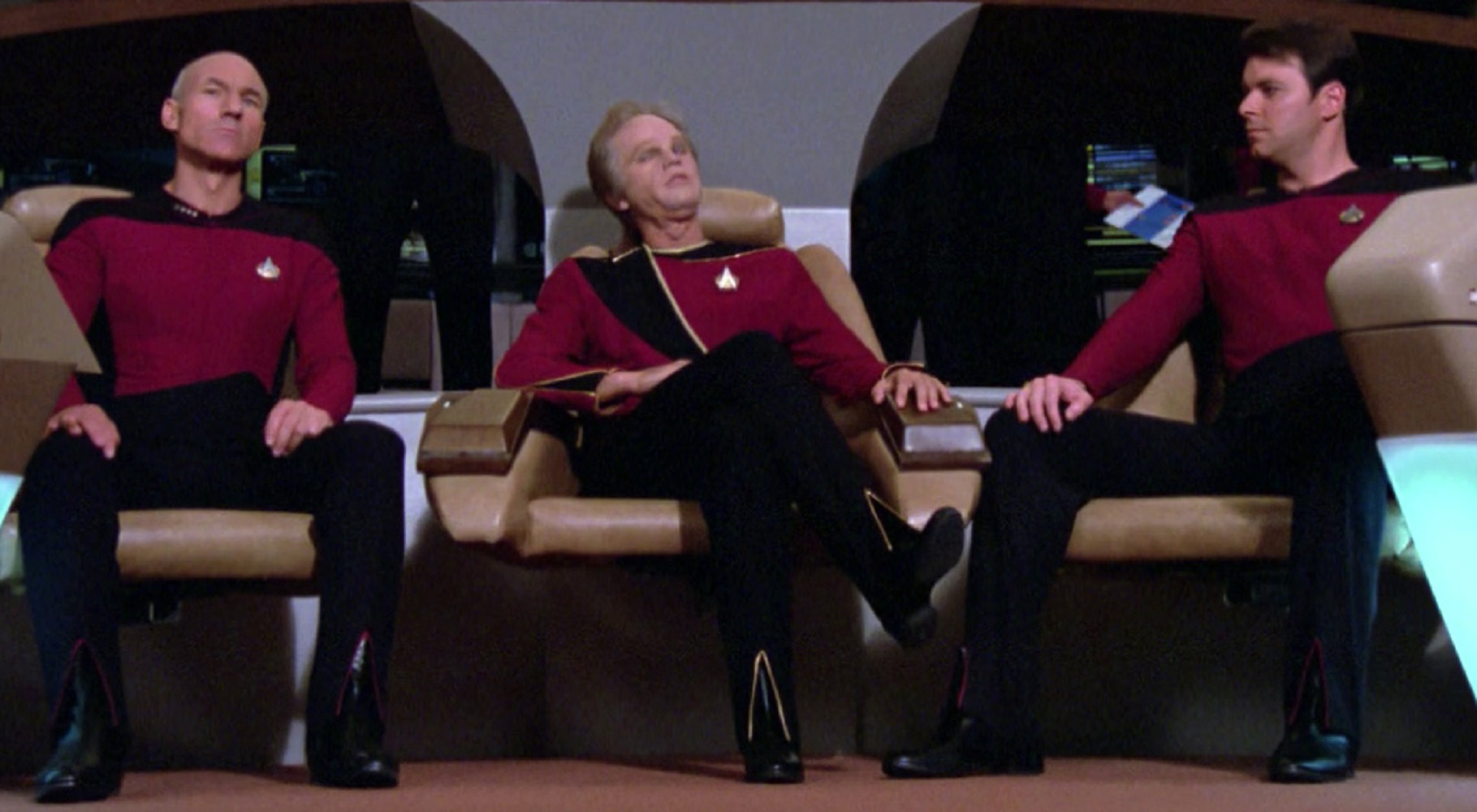
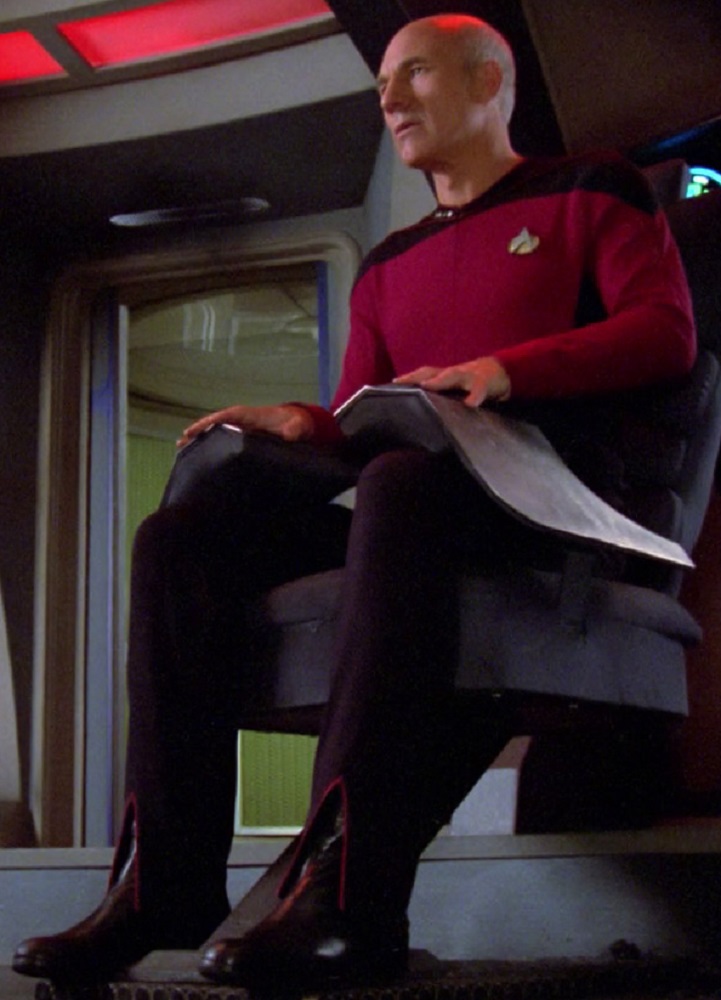
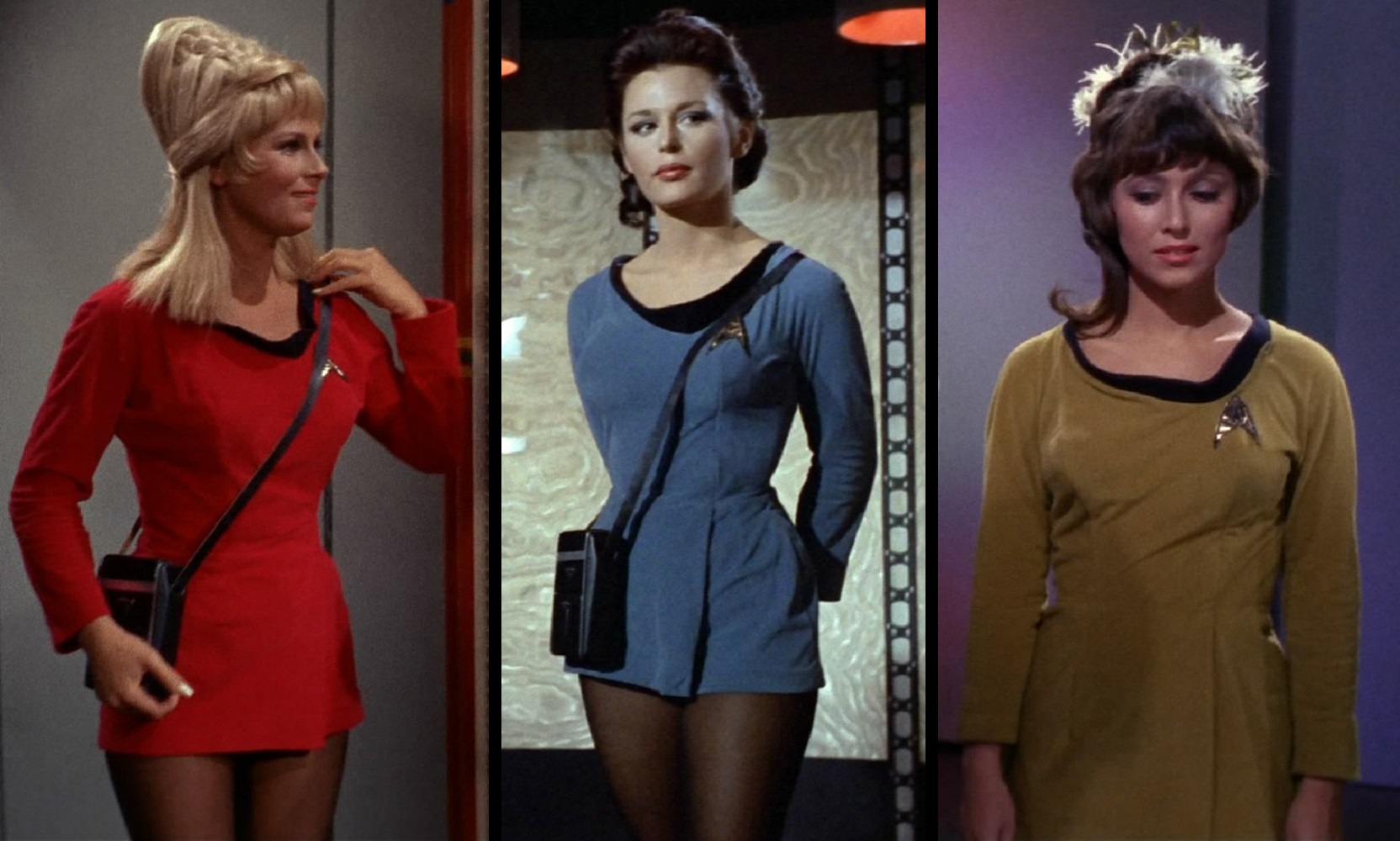
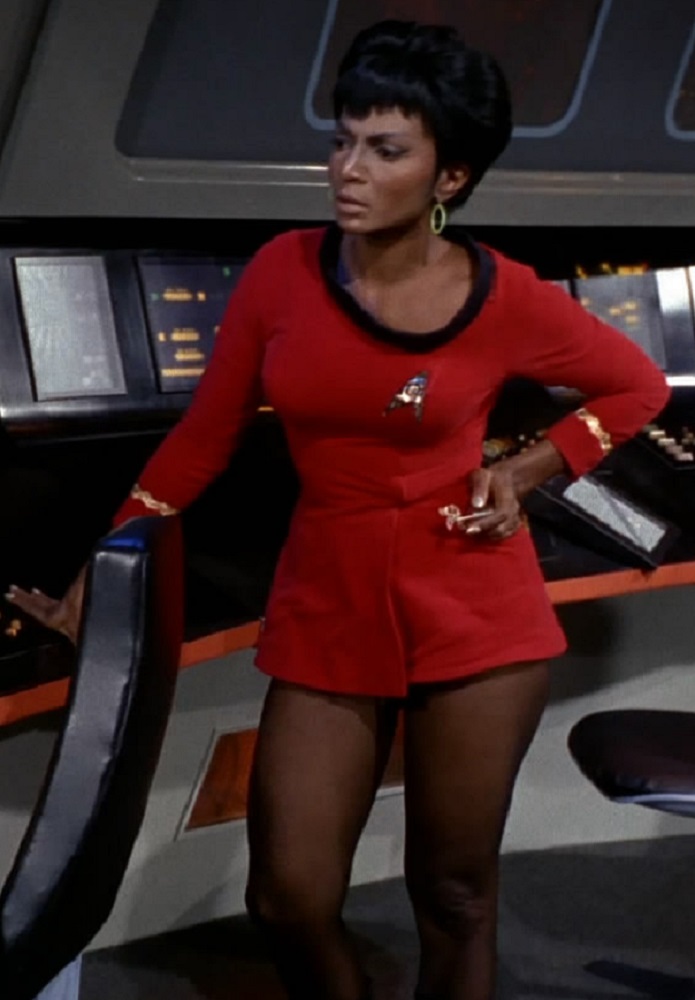
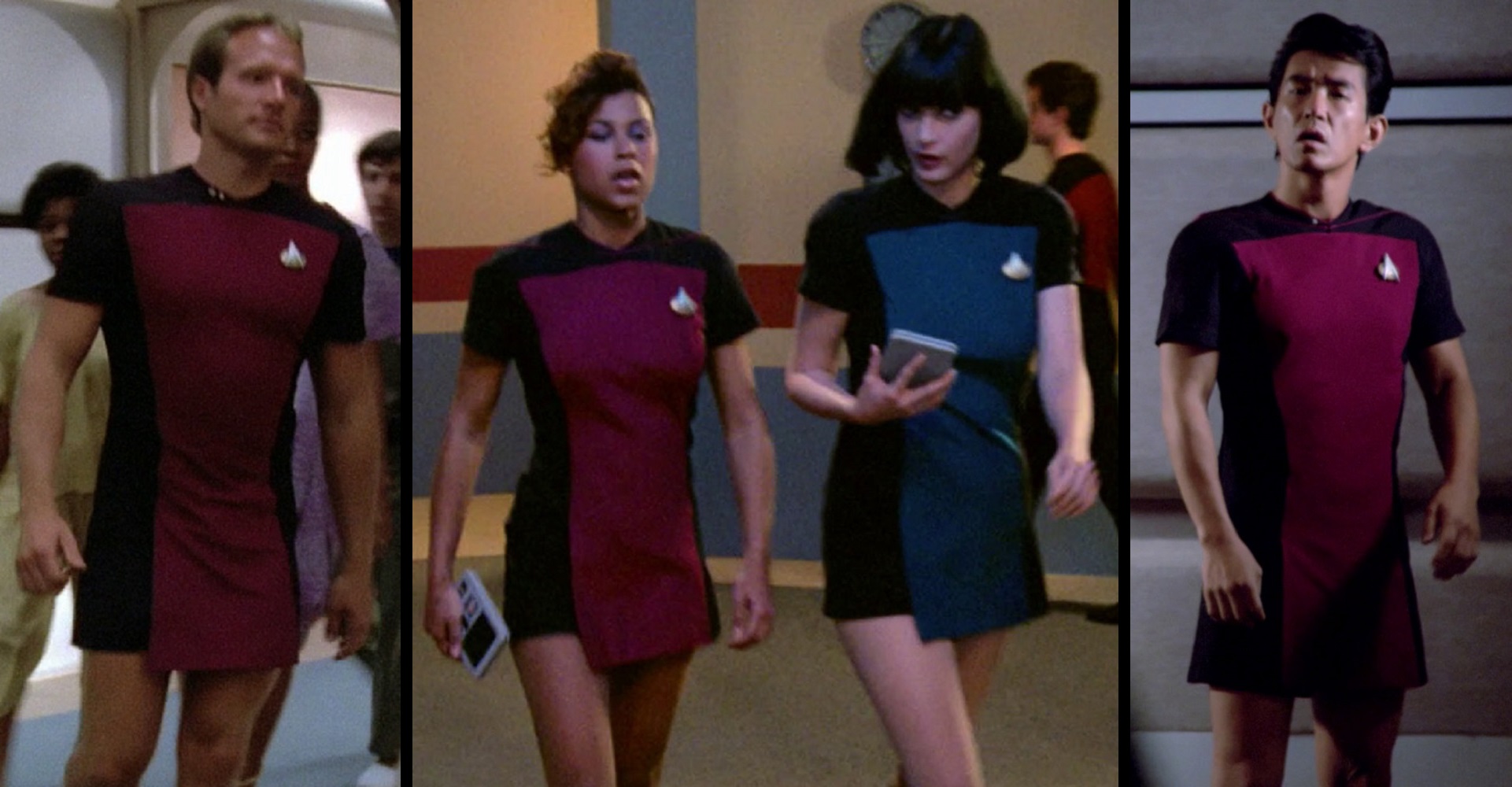
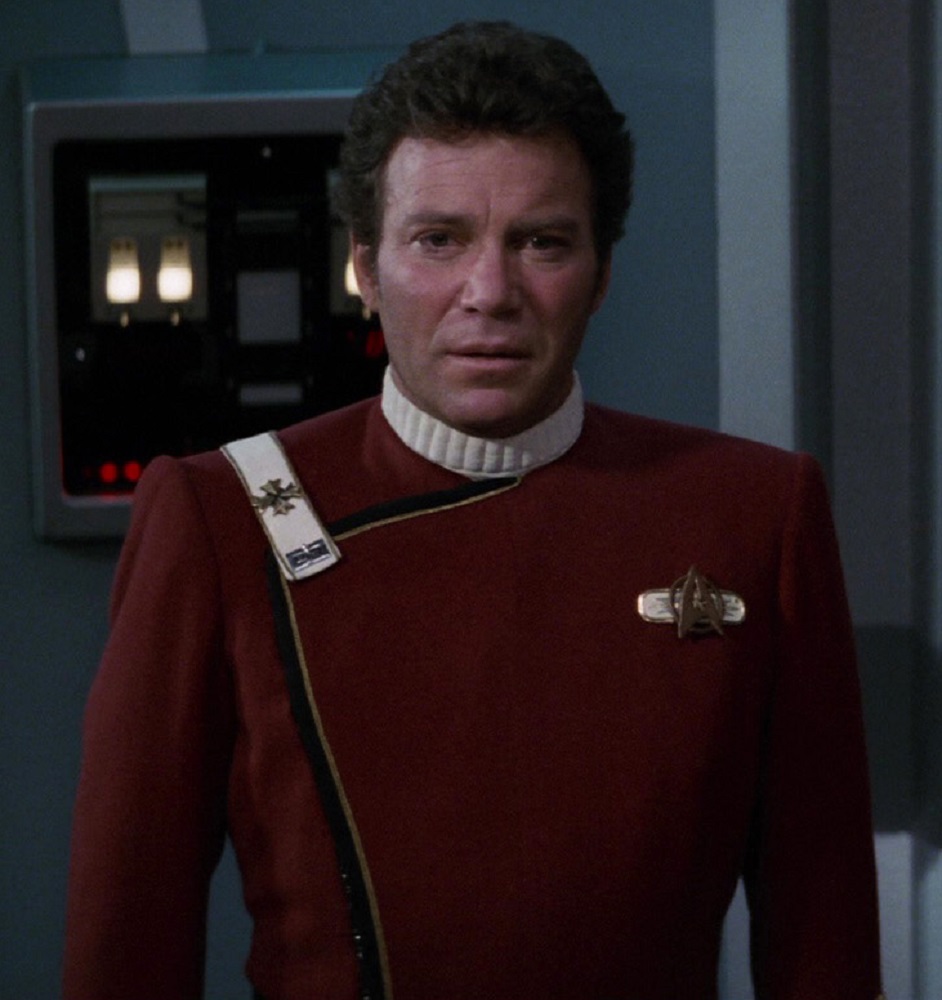
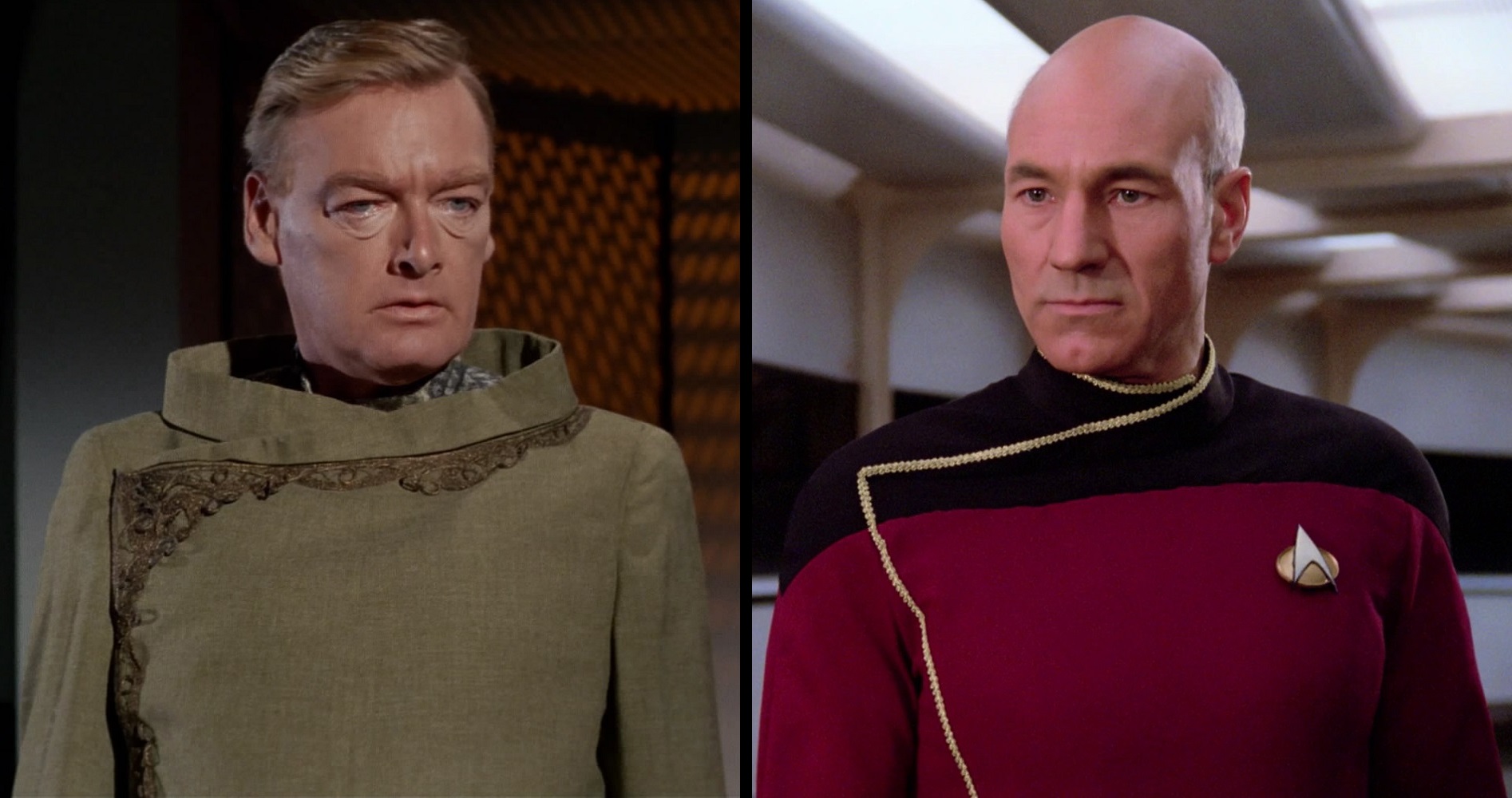
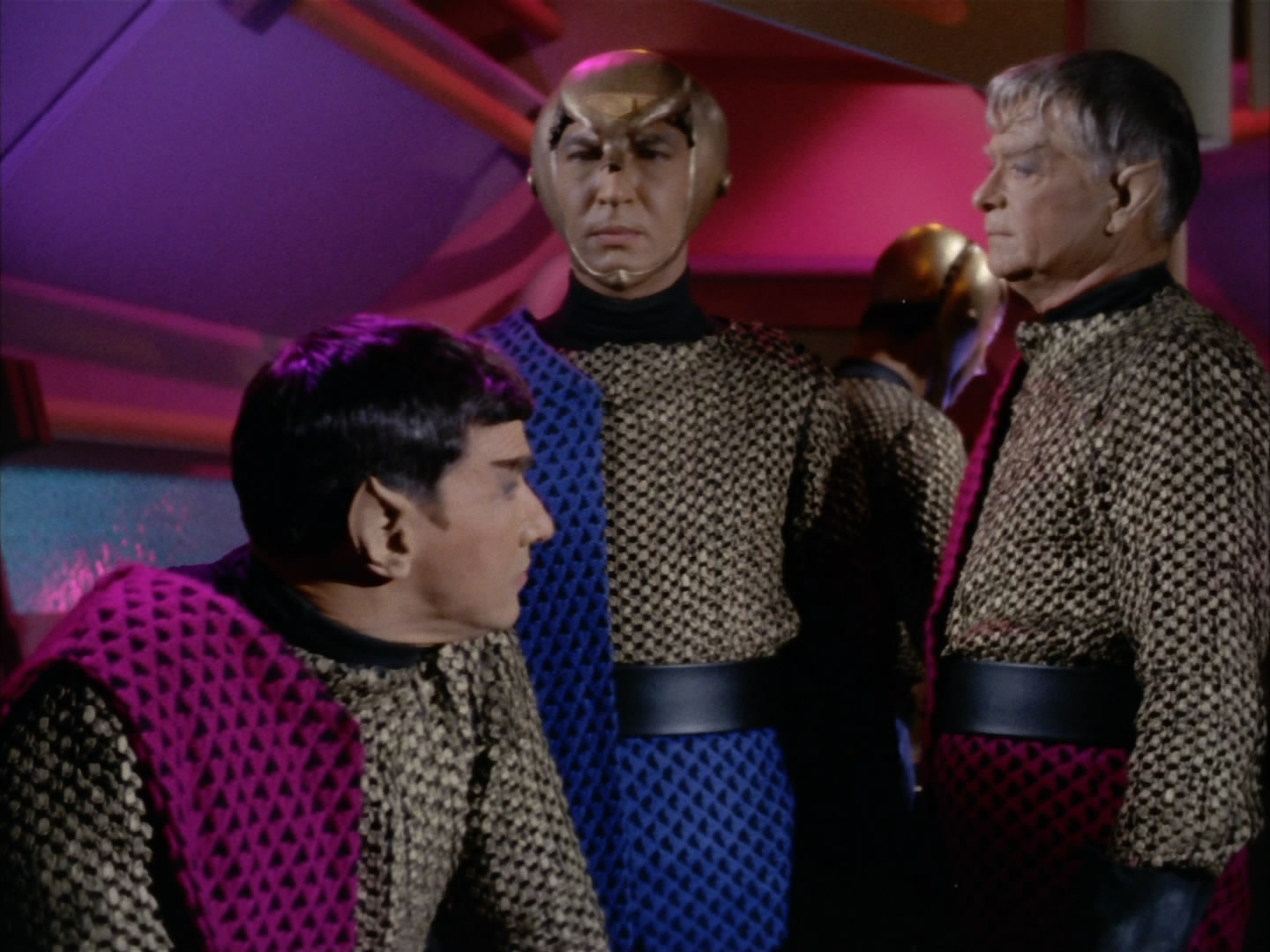
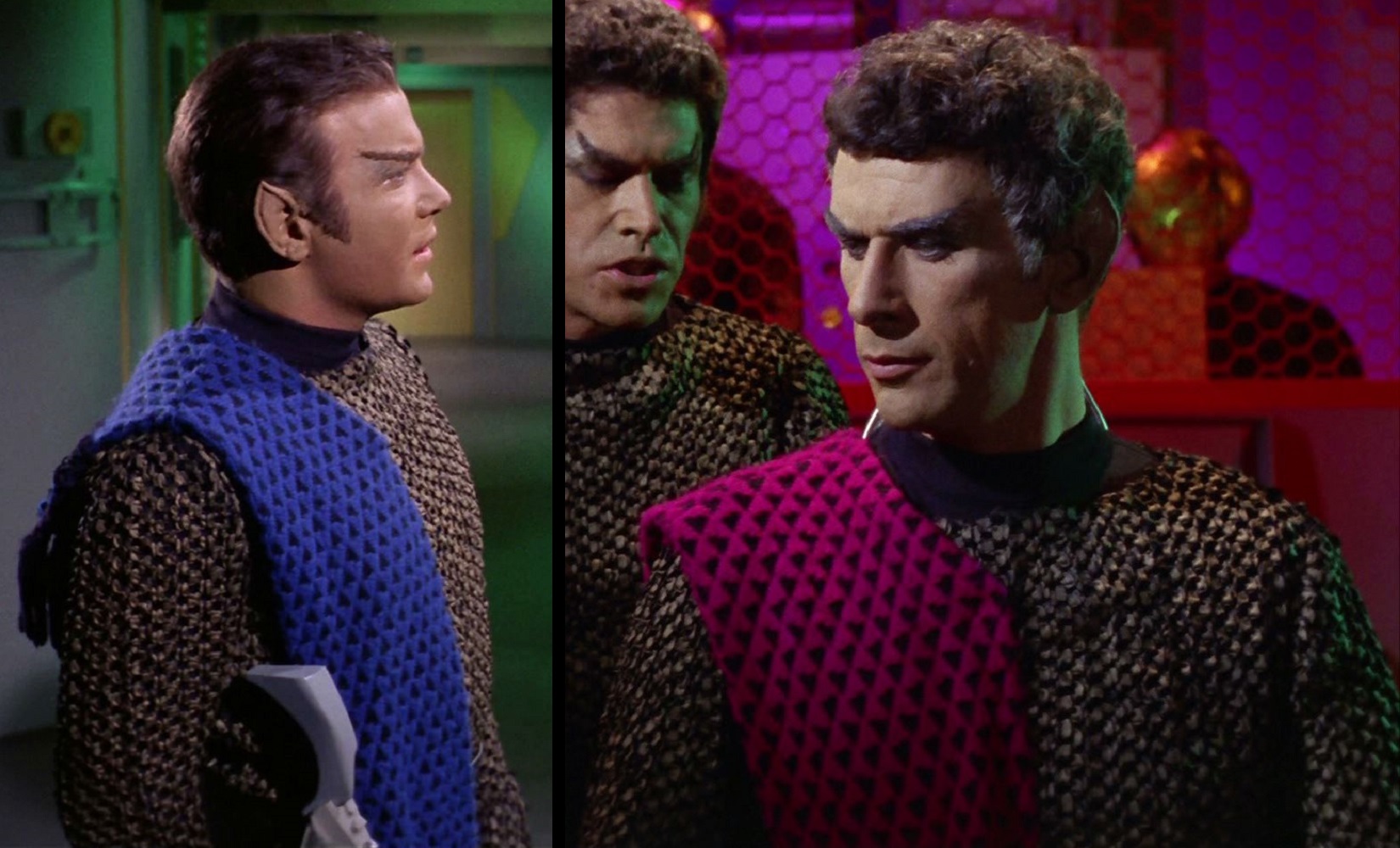
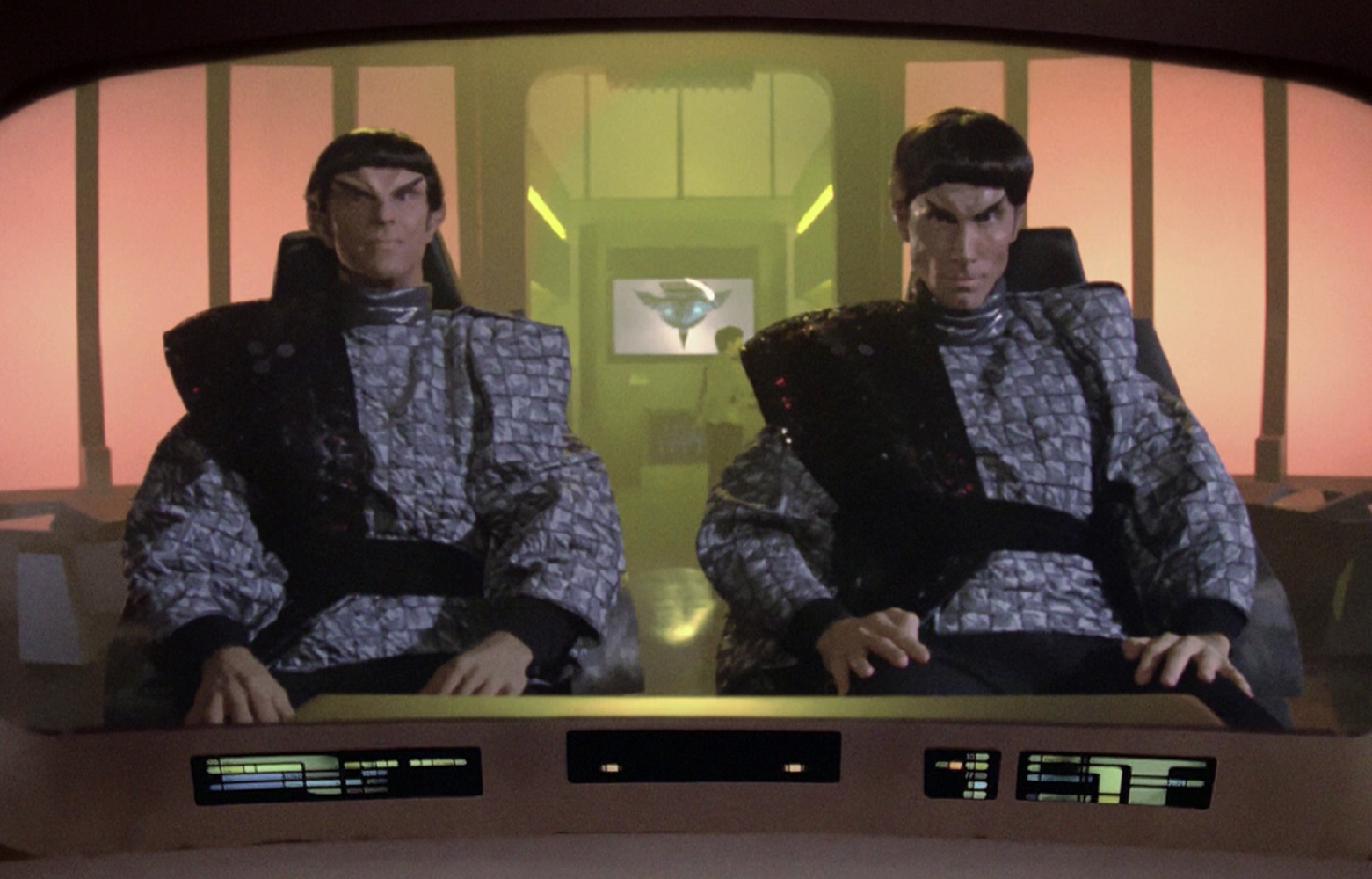
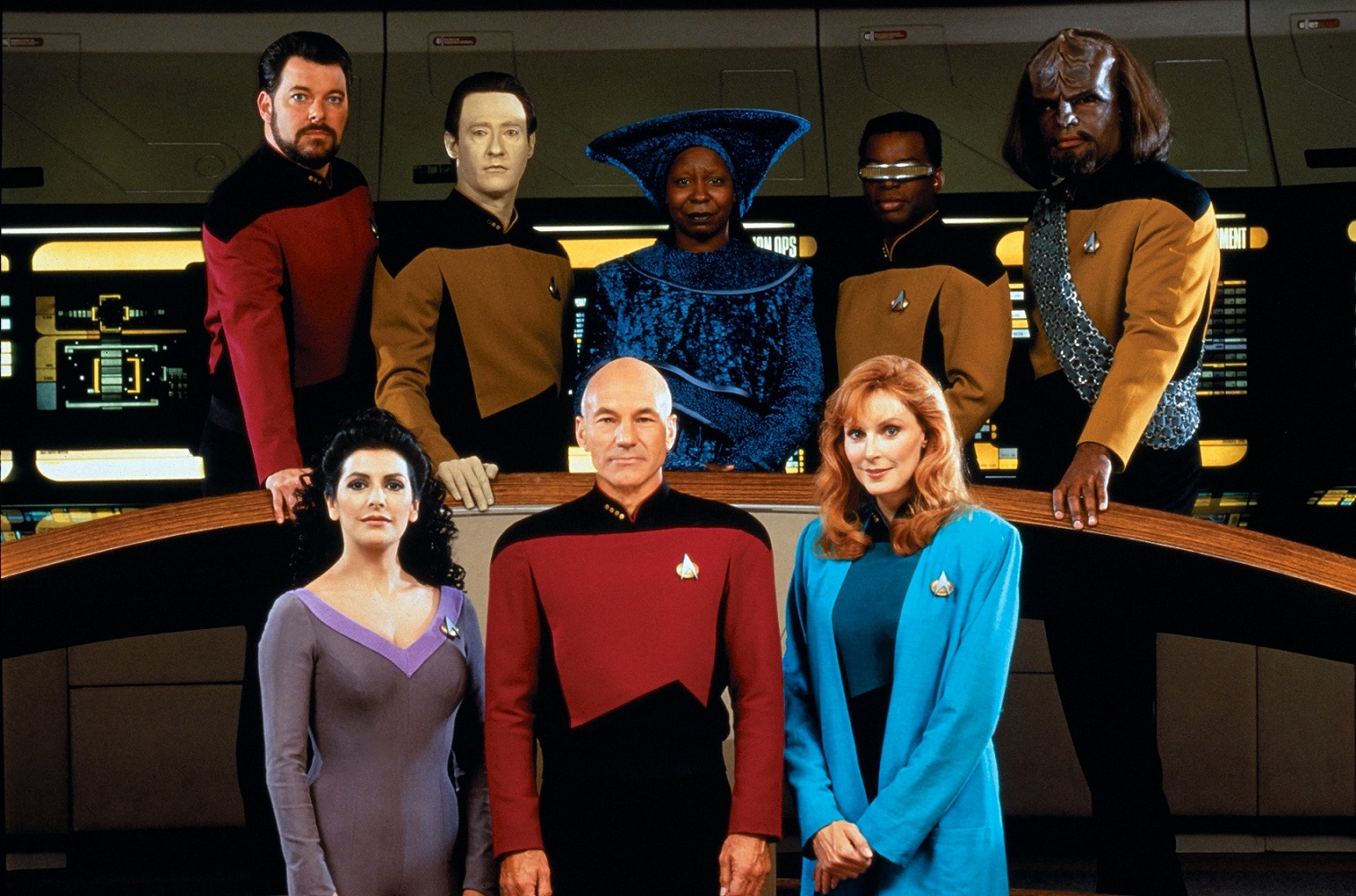
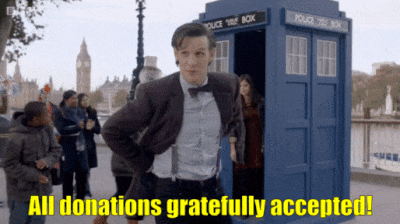
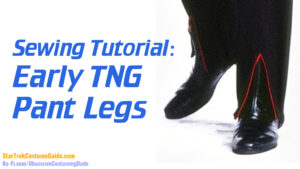
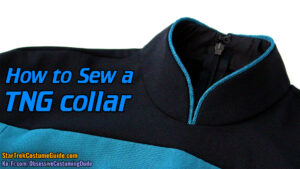
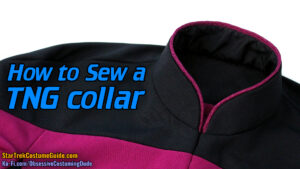
The switched division colors between TOS and TNG may have been a deliberate change, but to a certain degree, it was a change Fletcher made when engineering changed to gold and command to white in TWOK. A white undershirt doesn't really look like a division color, especially given the ubiquity of white undershirts worn as a base layer and white collared shirts worn under suit jackets, so the red jacket was somewhat of a de facto command division color. So, with red as the de facto command division color and gold (or yellow sweat stain as it looked on VHS) for division, Theiss's division colors are more of a continuation of what Fletcher did.
Also, no mention of the side cutouts Theiss considered? ( https://forgottentrek.com/redesigning-starfleets-uniforms/ )
I can perhaps see a loose connection between Theiss' and Fletcher's division colors, but I really think it was both of them just operating independently of the other.
And yes, Theiss' concept drawings for TNG are wild! Probably the only thing stranger than what we wound up with were the earlier concept illustrations. Truly bizarre stuff. 🙂
Have you ever gotten the chance to inspect any of the trousers that were paired with things like the 1st season dress uniform or admiral jacket? It's clear the cuffs were treated the same as the jumpsuit cuffs, but what about the rest? Were they just the bottom half of a duty uniform, finished with a waistband or were they constructed differently?
There were multiple styles of trousers over TNG, paired with different uniform jackets (etc.).
I'll be posting more about them in my upcoming TNG trousers analysis. 🙂